

Revolutionary All Electric Perfomance Catamaran
The most exciting performance-focused catamaran to hit the sailing world, the Open Waters 40 is an all-electric catamaran that leverages the latest in yacht construction technologies designed to maximize the thrill of sailing yet still provide the creature comforts of a multihull.
Great handling and speed
The ESC40 is a 40-ft catamaran designed to be two to three times faster than the typical cruising cat – using carbon fibre to reduce weight and provide increased hull strength.
The twin helm stations are covered by a solar cell-covered roof and come with a 59m2 main sail in addition to three headsails: Jib 26 m ² , FRO 65 m ² and Asail 121 m ² .
The hull is rated to handle boat speeds in excess of 20 knots. With curved retractable daggerboards providing better upwind handling and performance at speed.
The retractable rudders, together with the low draft of 2 ft, allow the boat to cruise in shallow waters and to be beached on the bow or stern.
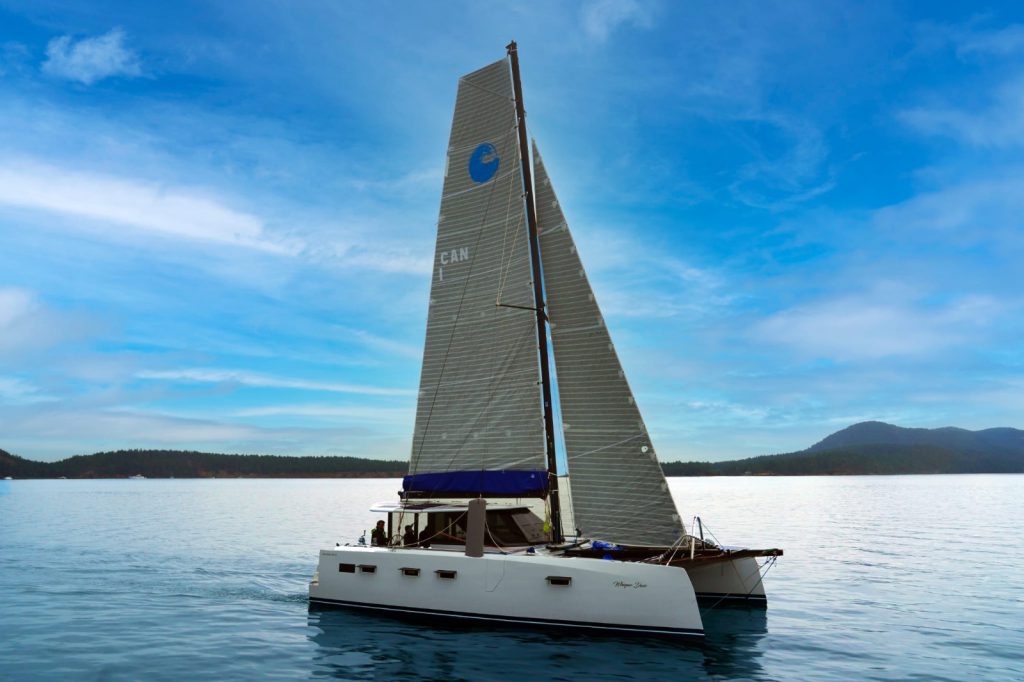
Regenerative Energy
Thanks to the low weight, higher boat speed and the solar/hydro regeneration systems on-board. The boat is a 100% energy self-sufficient.
The twin electric drives and advanced battery technology allows for quiet, fossil fuel-free cruising.
Using 10 kW motors, the close-quarter power and handling is unrivalled. The folding propeller generates electricity while sailing together with the roof-mounted solar cells, recharging the battery while in operation.
The integrated drives, battery and battery management systems are intelligently inter-connected and provide real-time and predictive insights on power consumption, generation and operational range.
The boat comfortably accommodates four adults and two children, and is sure to bring you all modern comforts such as a 400L water reserve shower and an electric stove.
The hull interior boasts 6’4” of head room with the coach offering even more generous space with 6’8” of head room up to 7 at the aft dinette. The wet deck, spacious with 300 ft ² between hulls features the main stateroom.
Each hull features three deck hatches and six portlights for excellent ventilation while the trampoline across the beam is 305 ft ² of play, relaxation and dolphin viewing.
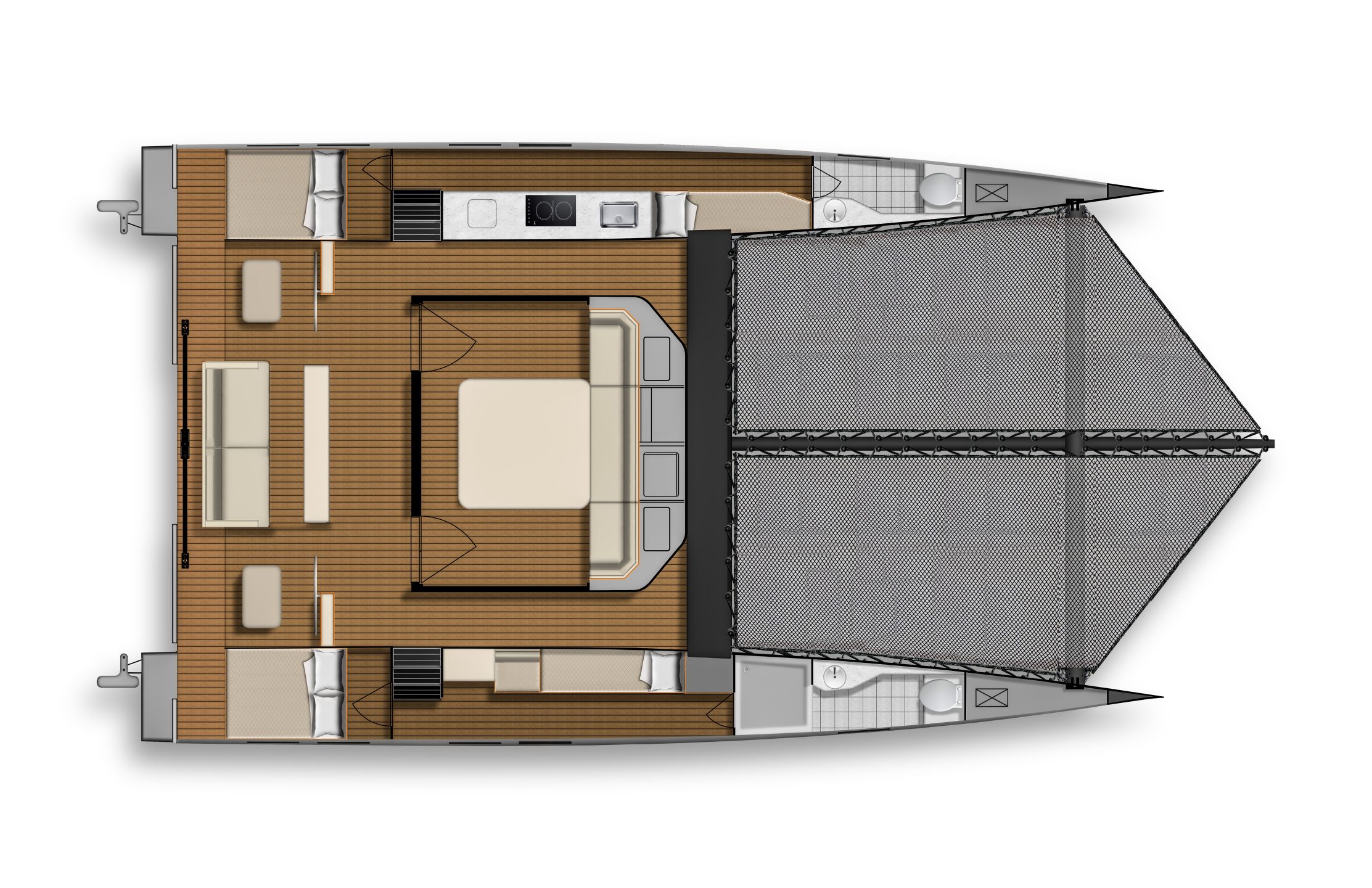
Our unique construction techniques allows us to manufacture the boat in Canada in a quarter of the time compared to traditional boat building.
We can also build and ship your boat in as early as four months, greatly surpassing the industry standard of 12+ months.
From order to build and delivery, our price compares very favourable to other fast cats.
Faster, cheaper delivery
The boat can be packed in a standard 40ft freight container and be shipped safely anywhere in the world at a much lower cost (up to $50,000 savings) and in a fraction of the time.
Boat owners can now also ship their boat one or both ways between North America, the South Pacific, Mediterranean or the Carribean for a one way cruise or an overwintering.
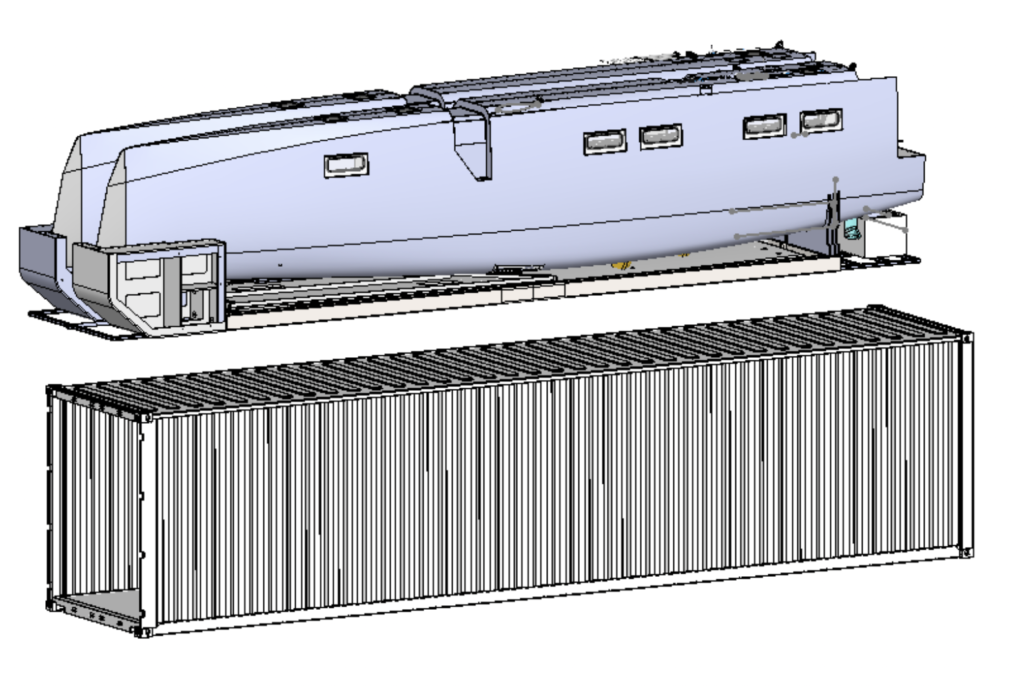
| Brand / Model | Open Waters ESC40 2021 |
| Builder | Open Waters Design & Manufacturing Ltd |
| Naval Architects | Whitacre Yacht Design |
| Length | 39’6″ |
| Beam | 23′ |
| Draft | 2′ |
| Mast | 55 ft |
| Boom | 20 ft |
| Displacement | 12000lb |
| Sails | |
| Total Rigging | 271 m² (sqft) |
| Mainsail | 59 m² (635 sq ft) |
| Headsail | Jib 26m² Self Tacking |
| Genoa | FRO 65m² |
| Gennaker | Asail 121m² |
Vacuum Resin Infusion
Vacuum resin infusion is the process at the heart of our technology and is used for all parts.
The vacuum resin process removes all of the air between the fibres of a part prior to the introduction of the resin.
After the process, our parts are meticulously sanded with variable grit — allowing for maximum paint adhesion on surfaces and smooth, stylish edges.
Core Materials
Core materials are introduced into the part to increase stiffness without increasing weight.
The core is a structural-grade foam with a high shear strength characteristic: if the part is of a complex shape, we cut the foam into sections, thermoforming it to the required shape.
We use five different sizes and densities of foam on the boat, optimized for local strength requirements.
We purchase carbon fiber by the roll and over 35 rolls are used in each boat. We have engineered the laminate schedule to be most efficient in the various areas of the boat maximising strength and reducing weight.
Each meant to be the most efficient for their respective areas. The fabrics are stitched, instead of weaved.
Stitched fabrics do not need to bend over or under other fibre and lay flat, making a stronger part.
At Open Waters, it is our mission to make catamaran cruising more exciting and environmentally sustainable. We’ve set out to create a performance cruising catamaran that will be a joy to sail and that will raise the bar in environmental sustainability.
We have developed a unique design and manufacturing process, selected high performance materials that enable us to build a boat that uses less materials and is 50% lighter. As a result it is a lot faster and as a result it is able to generate and store the energy needed to propel it electrically for hours and provide enough energy for on board equipment.
We use high performance carbon fibre and a vacuum infusion process to maximize strength and reduce the use of resin and eliminate resin vapour emissions. We use 100% recycled PET foam core wherever possible and we see the opportunity for incremental use of bio-based epoxy and natural fibres in our future.
As we continue to develop our sustainability roadmap for our boats we will perform a full lifecycle analysis to identify other opportunities to minimize our carbon footprint.
The unique processes and skills we have developed can be applied and licensed to other marine and recreational vehicles businesses.
Simon Angus
Simon Angus P.Eng is a professional mechanical engineer with a background in project management and a passion for sailing.
He spent his university summers travelling around Europe searching for the best combination of wind and waves in addition to teaching both sailing and windsurfing.
After moving to Canada in 2004, Simon bought a Catalina 27 in Kitimat BC and enjoyed sailing in the Douglas channel with his young family. A career move to Alberta paused his sailing career until he found the joys of chartering sailboats in the Caribbean.
After a 20 year career in industrial engineering and project management he decided to make a change and combined his passion and profession to launch Open Waters Design and Manufacturing in 2016.
He designed and manufactured an 18ft canoe and developed a plug and mold and his proprietary vacuum resin infusion process. After the successful build of the canoe, Simon built a high performance 18ft A class foiling sailing catamaran out of a Carbon fibre and refined the mold construction and vacuum resin infusion process.
After researching the various build steps, Simon started with CNC shaping of a plug, hand finishing and building the hull molds. He also built the mast, Z foils and the Tee foil rudders. After successful trials in Vancouver BC, Simon then set out on his next ambitious project, to design and build the boat he had dreamt about for years.
A boat that could be shipped anywhere in the world, sail on with his family and returned to Vancouver for summer cruising and would be electrically sustainable.
Simon was introduced to Hal Whitacre in 2019 which started a design relationship that has resulted in the creation of the Open Waters ESC40.

Hal Whitacre
Hal Whitacre, owner of Whitacre yacht design since 1984 and is responsible for some of the fastest and most luxurious boats ever built.
Hal is Open Waters Chief Naval Architect and has worked closely with Simon over the past 2 years to produce the detailed designs that make up the Open Waters ESC 40.
Hal has a distinguished career in Naval Architecture graduating from the University of Michigan with a degree in Naval architecture and Marine Engineering.
Throughout his career he has pushed the boundaries of naval architecture notably designing the Open Class 60 “Imagine”; breaking ground with the largest rig ever put on an Open 60.
Hal also owns and operates Bruce Roberts USA and in that capacity, he has designed over 100 steel and aluminium boat kits in addition to many fiberglass and wood sail and power boats. Most recently, Hal was the chief Naval Architect for Gunboat Catamarans when they were built in the USA.
Since their move to Europe, Hal has completed 2 gunboat 55’s along with a conversation of a gunboat 55 to a powercat ferry which has recently conducted successful sea trials.
Hal and his wife Tammy split their time between Annapolis, Md and Sister Bay, Wi. Hal continues to race Lasers during the winter and windsurfs/foilsurfs as much as possible.
672 Wine Club
- Motorcycles
- Car of the Month
- Destinations
- Men’s Fashion
- Watch Collector
- Art & Collectibles
- Vacation Homes
- Celebrity Homes
- New Construction
- Home Design
- Electronics
- Fine Dining
- Benchmark Wines
- Brian Fox Art
- Chase United
- Disneyland Resort
- Gateway Bronco
- Royal Salute
- Sports & Leisure
- Health & Wellness
- Best of the Best
- The Ultimate Gift Guide
Sunreef’s New All-Electric Catamaran Blends Solar and Wind Energy for Unlimited Range
The vessel features a special "solar skin" that produces clean power., rachel cormack.
Digital Editor
Rachel Cormack's Most Recent Stories
- Chanel Now Owns a 25% Stake in Swiss Watchmaker MB&F
This Revamped 161-Foot Trinity Superyacht Could Be Yours for $16 Million
- This Blinged-Out Patek Philippe Nautilus Was Seized by U.K. Police. Now It’s up for Auction.
- Share This Article

Sunreef Yachts has just started building what it’s claiming will be “the world’s most advanced sustainable luxury catamaran .”
The electric vessel, known as the Sunreef 80 Eco , blends the latest green technologies with the reliability of a day-sailer and the comfort of a superyacht. It was first unveiled last year as part of the Polish yard’s new Eco line that comprises a handful of vessels spanning from 40 to 100 feet.
Related Stories
Blue origin successfully landed its 8th crewed flight.
- Pagani Will Keep Making V-12 Hypercars Because Its Customers Don’t Want Hybrids or EVs
- This Armored, Bulletproof Lucid Air Lets You Drive Through the Apocalypse Emissions Free
Designed and engineered in-house, the 80-footer takes a holistic approach to eco cruising. It can harness and store renewable energy both above and below the waterline, which means it can sail silently sans emissions for days on end. In fact, the yard says it has infinite range.
Arguably the most innovative feature is the vessel’s solar skin. This photovoltaic system will see the world’s lightest solar cells integrated into the hull sides, superstructure, bimini and carbon mast. Covering a total surface of approximately 1,600 square feet, the skin will generate up to 34 kWp of clean energy that will be stored in custom-engineered lithium batteries. It also gives the multihull a cool, futuristic look.

The vessel’s solar skin can generate up to 34 kWp of clean energy. Sunreef Yachts
When it comes to propulsion, the cat takes a multipronged approach. It can either run on its two, energy-efficient 180kW electric engines or the wind. While under sail, the vessel employs an advanced hydro generation system to actually recover energy from the propeller rotation. Together, the two propellers can generate more than 15 kWh while sailing around 7 knots. This energy is then used to power the engines and onboard appliances.
“The Sunreef 80 Eco is all about responsible sailing and relying on renewable energy,” Sunreef’s founder and president, Francis Lapp, said in a statement . “We are now pairing the industry’s most innovative solar power system with hydro generation.”
The vessel also sports a high-tech water management system, highly efficient air conditioning, wind generators and non-toxic bottom paints. As for décor, it’s fully customizable and showcases a range of ethically sourced sustainable materials and furnishings.
Intended for long offshore adventures, the Sunreef 80 Eco is expected to hit the water this summer.
Check out more images of the vessel below:

Sunreef Yachts

Rachel Cormack is a digital editor at Robb Report. She cut her teeth writing for HuffPost, Concrete Playground, and several other online publications in Australia, before moving to New York at the…
Read More On:
- Electric Yacht
More Marine

This Speedy 70-Foot Power Catamaran Is Designed to Cut Through Rough Waters

New Zealand’s Thrilling Win Gets the America’s Cup Off to a Rip-Roaring Start

Meet the Wine Club That Thinks Differently.
Receive editor-curated reds from boutique California producers four times a year.
Give the Gift of Luxury
Latest Galleries in Marine

10 Must-Haves That Will Make Your Yacht Trip Even Better

6 Electric Surfboards That’ll Help You Ride the New E-Foil Wave
More from our brands, miu miu women’s tales returns to film festival in venice, disney, directv nfl fight faces sunday deadline, jude law says neo-nazi crime thriller ‘the order’ ‘needed to be made now’: ‘sadly, the relevance speaks for itself’, california man receives three-month sentence for smuggling ancient mosaic looted from syria, the best yoga mats for any practice, according to instructors.
Smart Cat E280
The ultimate practical electric power catamaran, discover the smart cat e280 – the pinnacle of innovation in electric power catamarans. building on the success of the s280 sailing catamaran, the e280 offers unparalleled long-range capability, fuel efficiency, silent cruising, and eco-friendly performance..
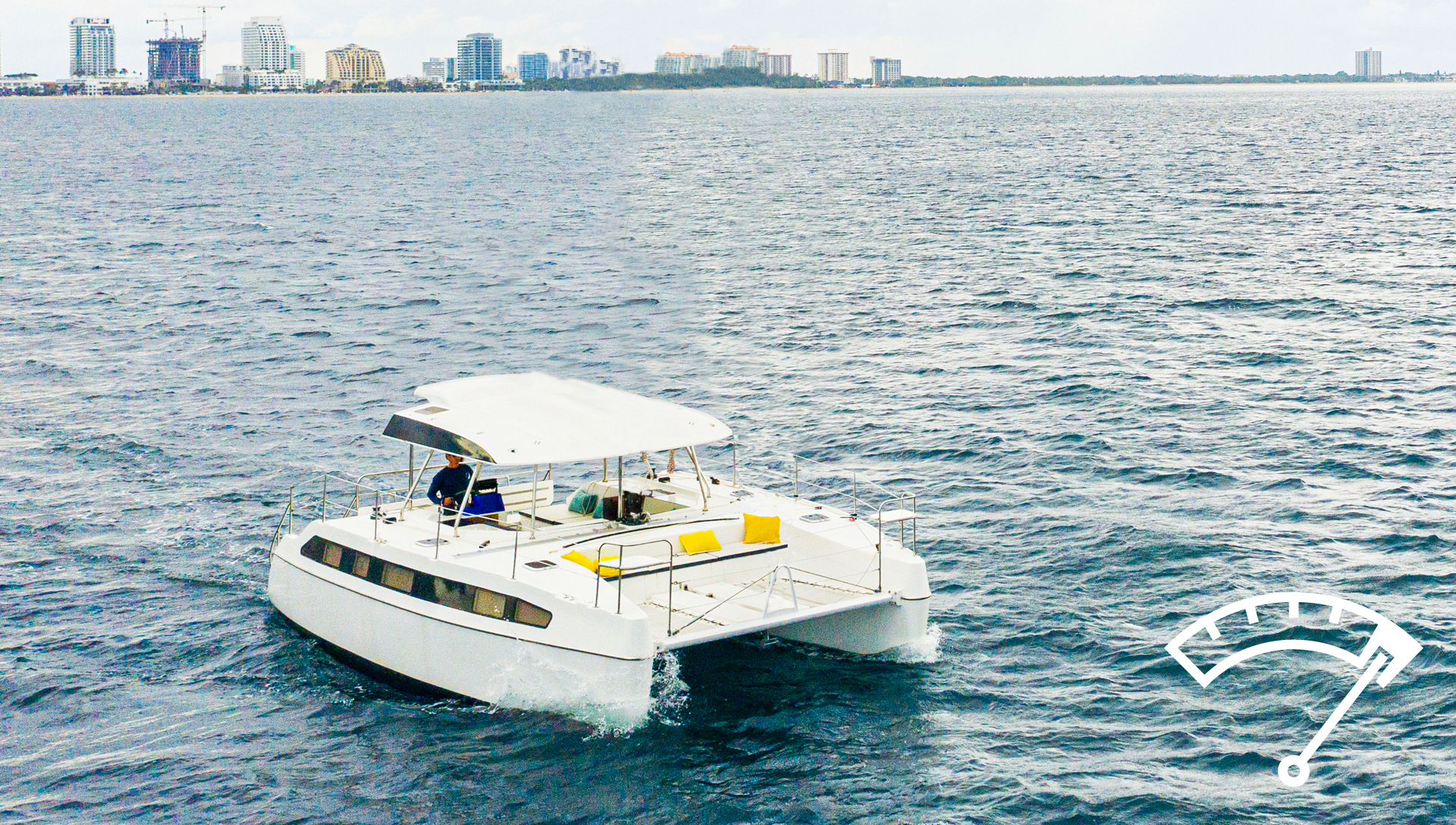
EXCEPTIONAL LONG RANGE
Say goodbye to chasing the wind! With the Smart Cat E280’s wide solar panels and generator power, you can embark on extended journeys at a steady speed. Travel farther than ever before with unmatched reliability and ease.
WHISPER-QUIET CRUISING
Experience the tranquility of silent cruising. The electric motor of the Smart Cat E280 operates as quietly as a sailboat, allowing you to immerse yourself in the soothing sounds of water splashing and the wind. Enjoy peaceful voyages without the noise of traditional engines.
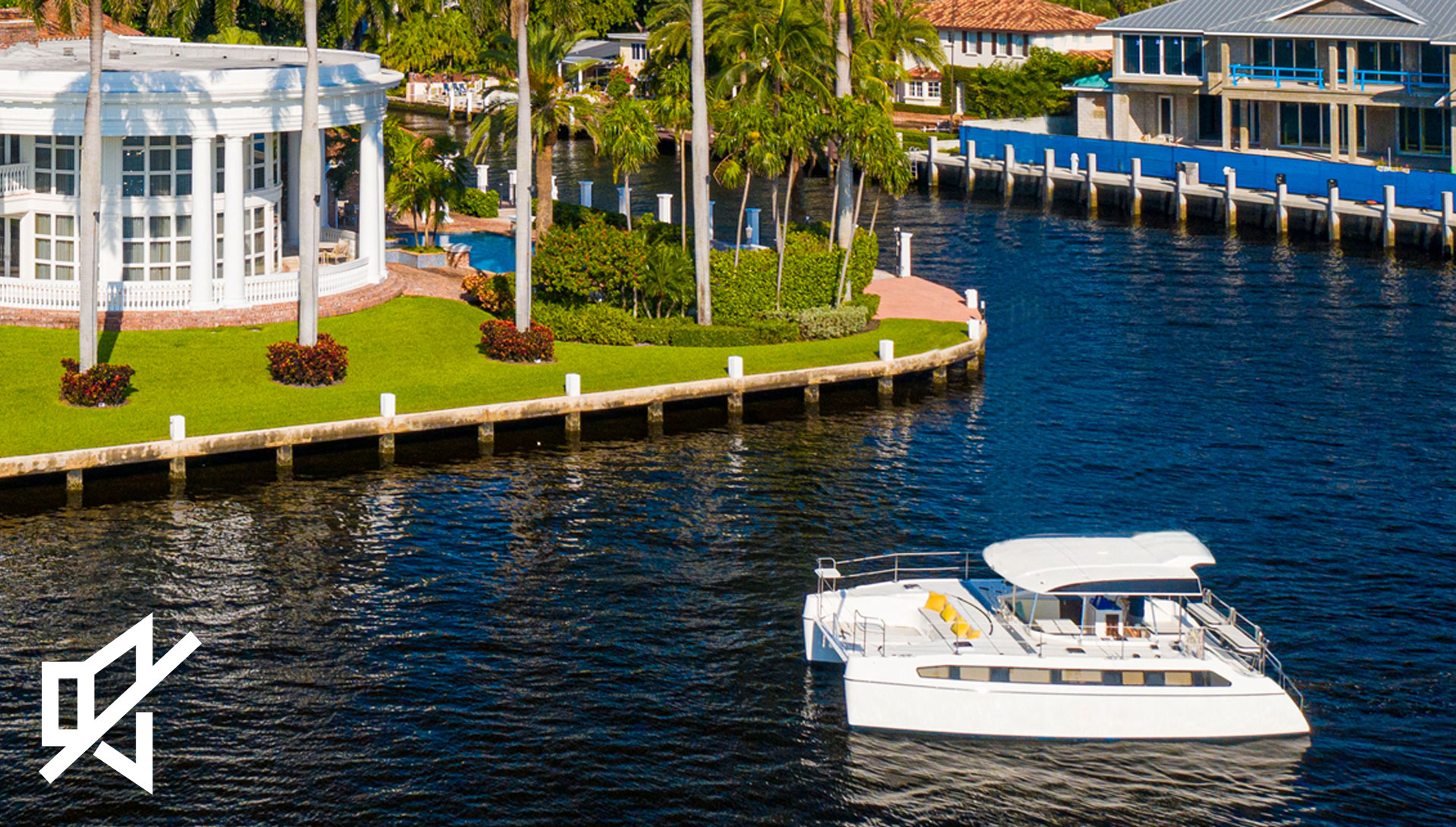
UNMATCHED FUEL EFFICIENCY
Forget about high fuel costs. The electric motor of the Smart Cat E280 is exceptionally efficient, far surpassing conventional diesel and gasoline engines. Sail further while saving more with this cutting-edge technology.
ECO-FRIENDLY PERFORMANCE
Protect the environment with the Smart Cat E280. This electric boat produces zero emissions and no oil spills, making it perfect for preserving pristine lakes, rivers, and intercostal waters. Join the movement towards a cleaner, greener future with this environmentally conscious catamaran.
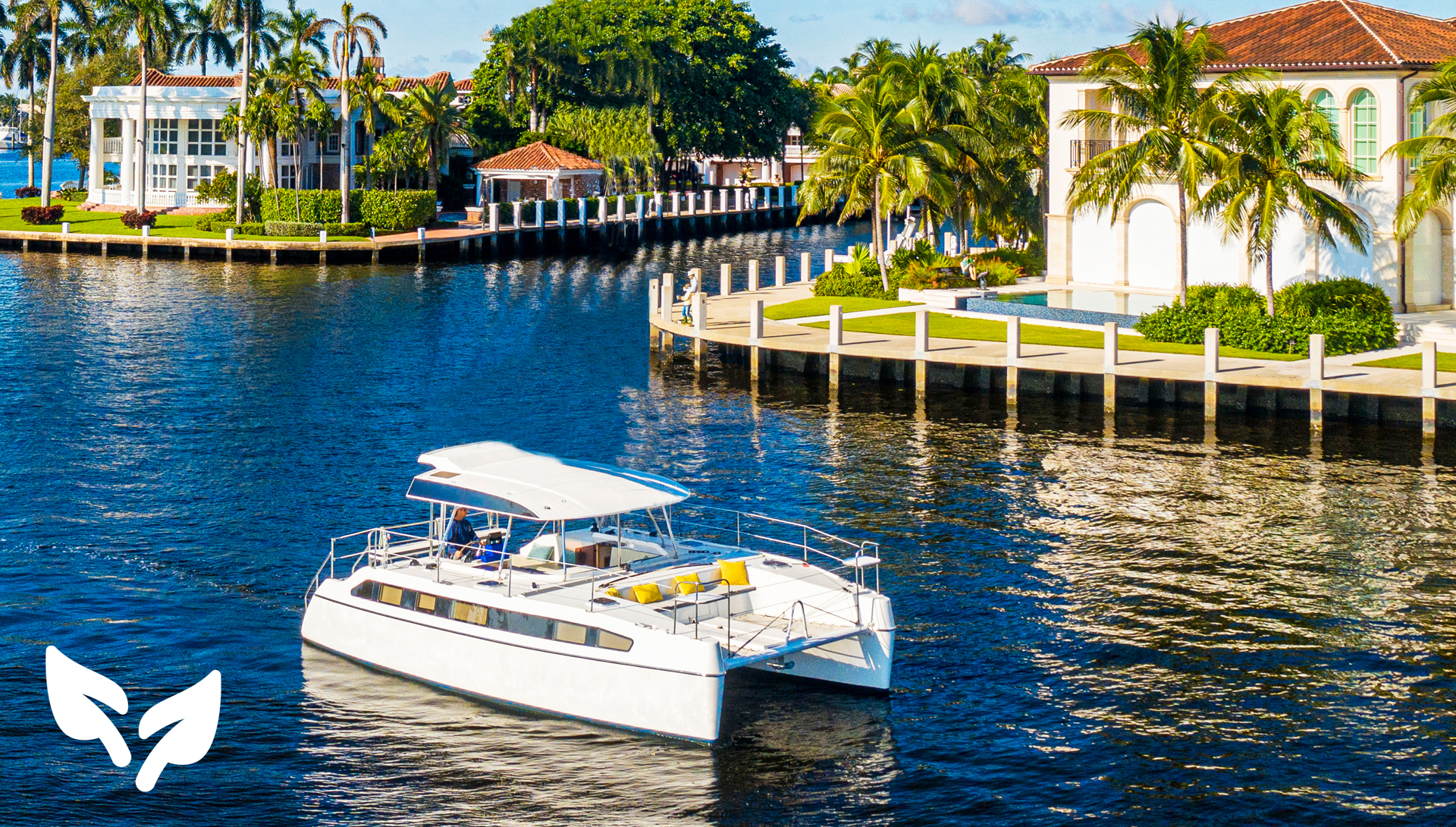
*Disclaimer: Some photos of S280 are shown for only better understanding.
Hard Top Options
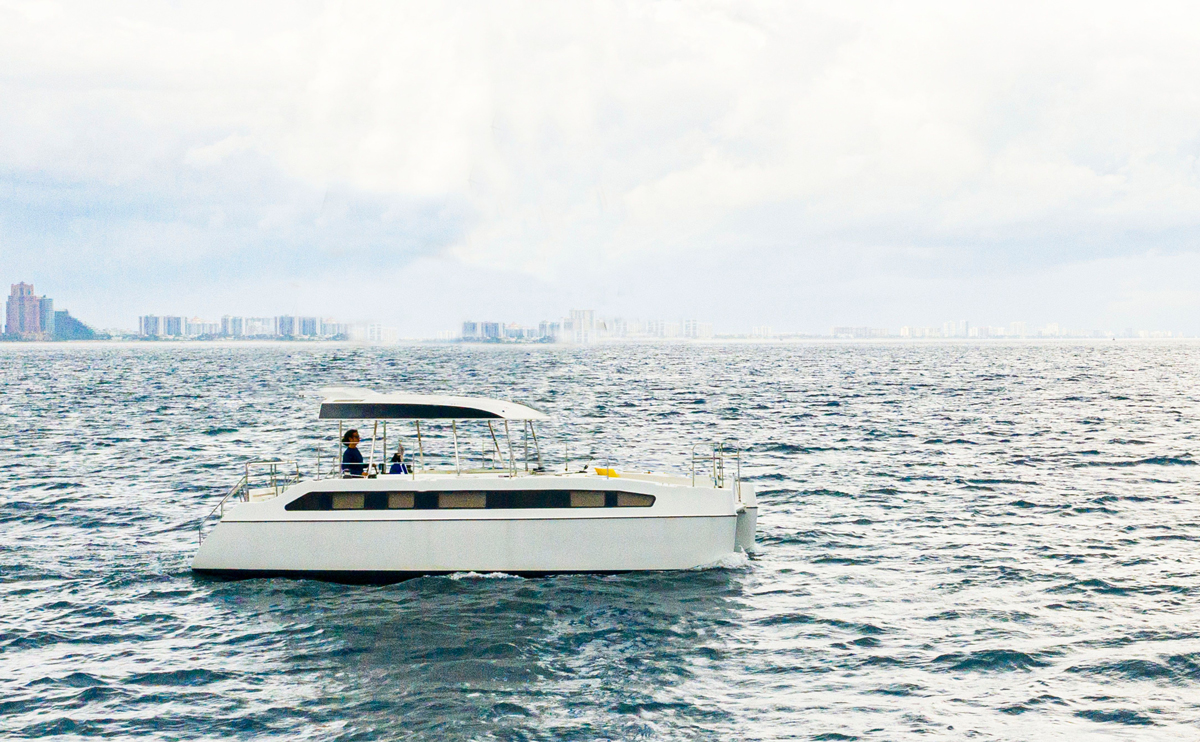
- Perfect for tropical weather
- Convenient to accommodate larger number of passengers
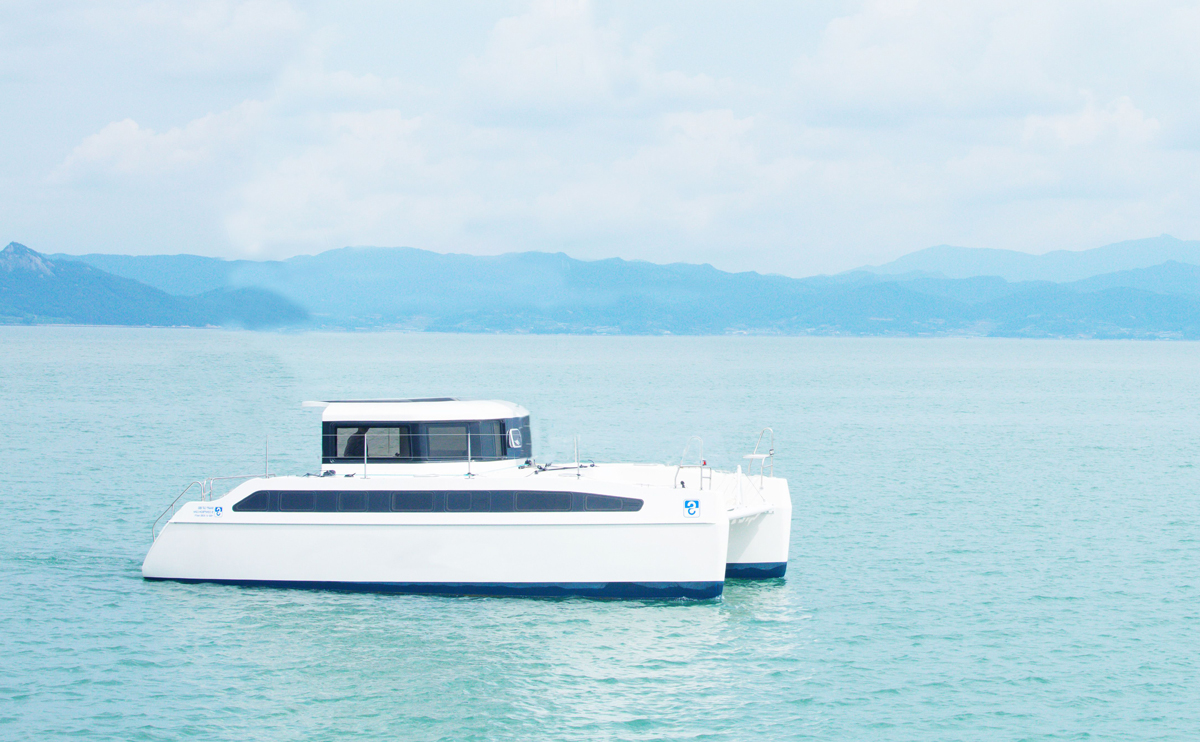
- Good protection for climate changes
- More privacy for liveaboard usage
Layout Options
3 cabins and 1 head.
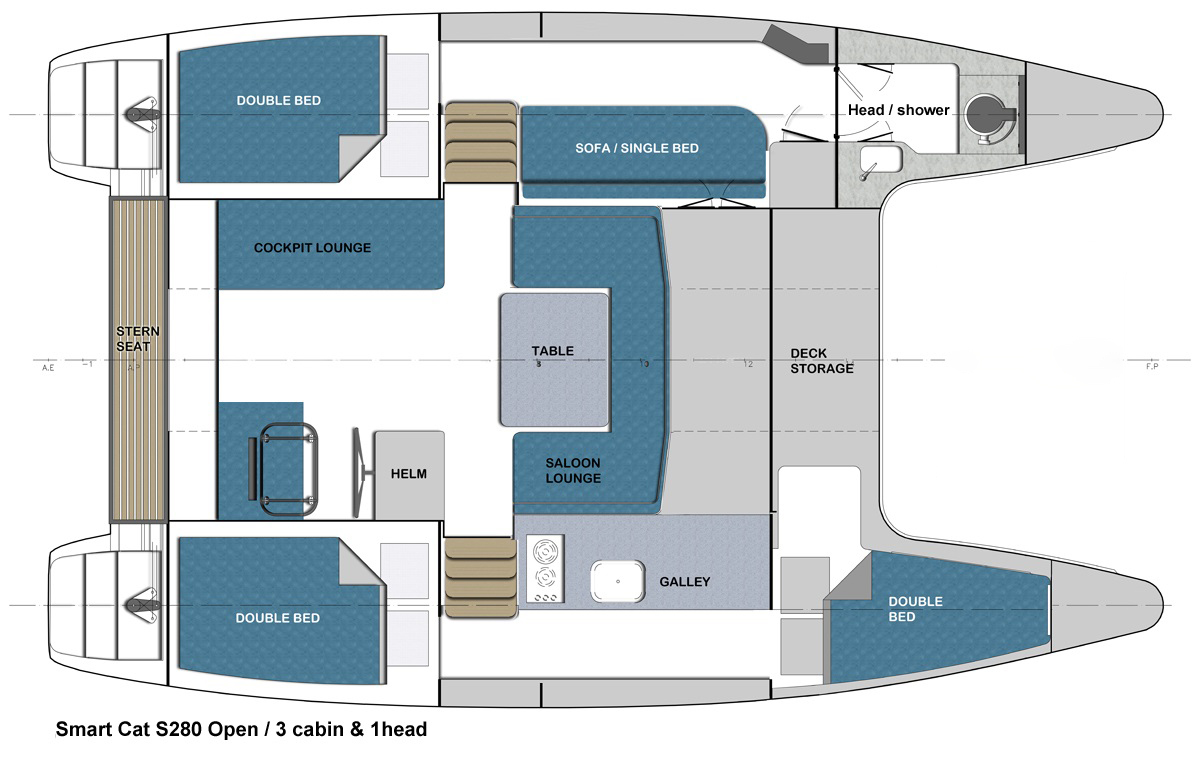
2 Cabins and 2 Heads
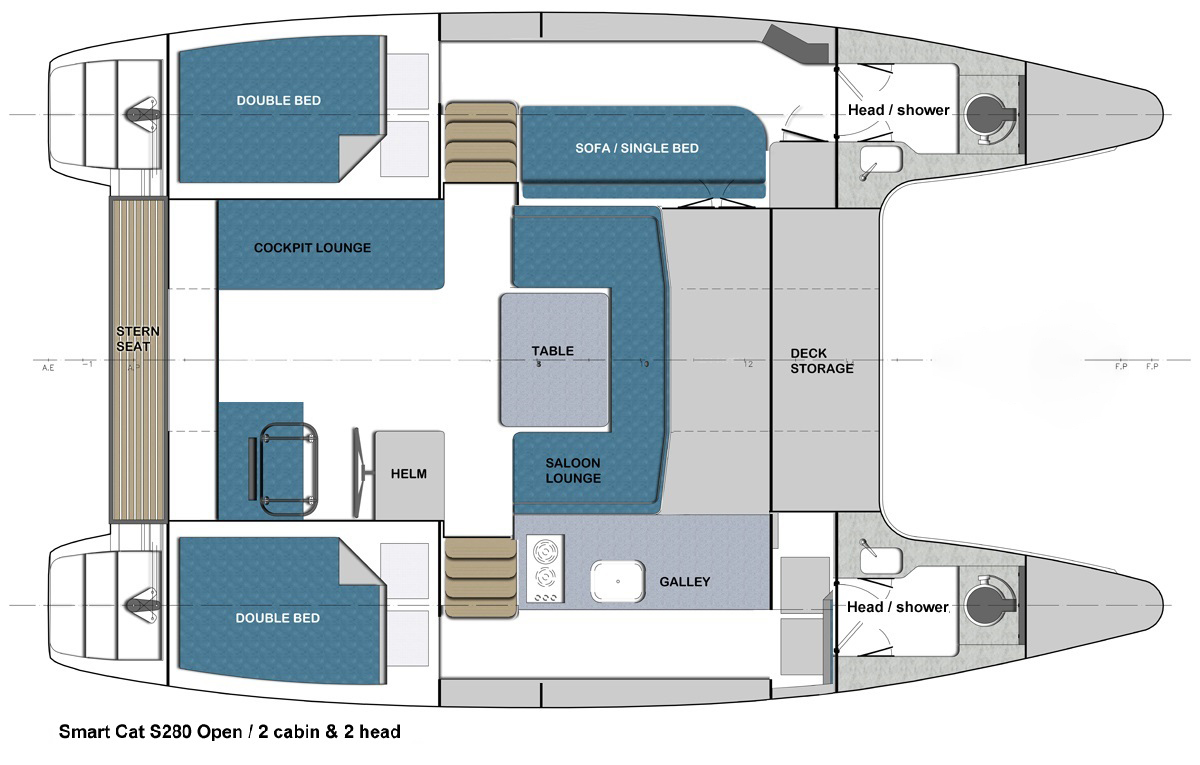
Specifications
28ft / 8.5m
Displacement
12,500lbs / 5.7tons
(4) x Lithium-Ion Battery – 48V (5.2kw) (Standard)
Higher Capacity Battery Pack – TBD (Option)
17ft-5in/5.29m
Fresh Water Tank
36 Gal. / 135 Liter
Solar Panel
(4) x Photovoltaic 300W (Standard)
Higher Capacity Solar Panel – TBD (Option)
2ft-10in / 0.89m
Holding Tank
23 Gal. / 88 Liter
Fischer Panda AC 5000, Diesel (Option)
Clearance Between Hulls
7ft-2in / 2.18m
(2) x Torqeedo Cruise 4.0 FP (8HP) (Standard)
(2)x Torqeedo Cruise 10.0 FP (20HP)(Option)
Testimonials
John Dial The Smart Cat was such a pleasant surprise! When I first heard of the boat, I was skeptical. When I saw the boat, I LOVED it! I am an experienced boater with over 30 years hands-on with all brands of boats both sail and power. I went on the boat alone with no salespeople and… USCG Master Captain / United Yacht Sales
Ben Kaminsky One of the most interesting boat exhibiting at 2020 Miami Boat Show. The boat handled very well. The ride was pretty comfy due to the high length/beam ratio. I was pretty impressed with how it handled and performance was good for this kind of catamaran range. Catamaran Review
Learning the Lines I think it’s a really cool boat. I think this boat would be good for coastal cruising, week-ending and fun all-around boat. For 28 foot boat, this boat has a ton of accommodation. There is a lot of living space even though it’s just a 28 foot boat. This boat is very beamy which is… Youtuber
Questions/Inquiries
- Price Sheet
BROCHURE – SMART CATAMARANS
OPTION & PRICE LIST – SMART CAT E280 ELECTRIC

- AMERICA'S CUP
- CLASSIFIEDS
- NEWSLETTERS
- SUBMIT NEWS
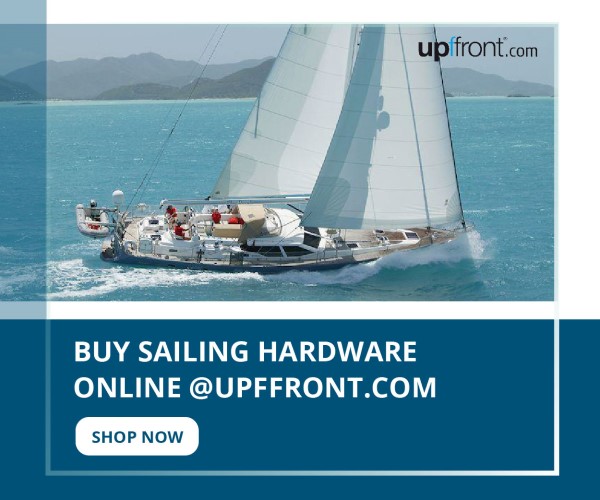
First all-electric HopYacht 30 Sailing Catamaran launched
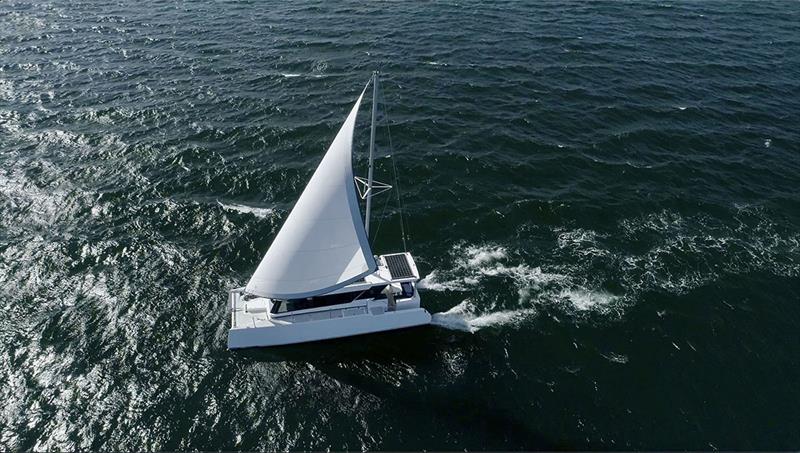
Related Articles
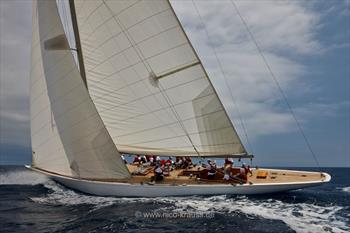

- Green Propulsion
- Renewable Energy
- Energy efficiency
- Sustainable materials
- Eco Insights
- News & Events
- Sunreef News Magazine
- Press About Sunreef

- 60 Sunreef Power
- 70 Sunreef Power
- 80 Sunreef Power
- 100 Sunreef Power
- Sunreef Supreme Power
- Sunreef Ultima Range
- Sunreef 44 Ultima
- Sunreef 55 Ultima
- Sunreef 66 Ultima
- Sunreef 77 Ultima
- Sunreef 88 Ultima
- Sunreef fleet

- Sunreef Zero Cat
- Sunreef 100
- Sunreef Fleet

- Sunreef 35M
- Sunreef 43M
- 49M Sunreef Power
- 210 Sunreef Power Trimaran
- Sunreef Explorer
- 40M Sunreef Explorer
- 40M Sunreef Explorer Eco
- 50M Sunreef Explorer
- Superyachts Fleet
The Revolutionary Electric Catamarans Introduce Zero Emission Cruising

With greater awareness about pollution, sustainable and emission reduction practices have become increasingly salient in the maritime industry. The International Maritime Organization envisions a reduction in CO2 emissions by 40 percent by 2030 across international shipping to combat climate change.
The nautical sector has found a promising solution with the invention of electric catamarans. These vessels are powered by electrical energy, offering a more ecological, energy efficient, and environmentally friendly alternative to traditional cruising.
Making The Switch to Electric Catamarans
Electric catamarans are propelled by electric motors that draw power stored in lithium-ion batteries. These massive batteries are replenished by solar panels, wind turbines, hydrogenators, or a combination of all, allowing electric catamarans to ply oceans with an extended range.
Sunreef Yachts Eco remains at the forefront of eco-friendly responsible yachting with their electric sailing and power catamarans . The shipyard has made impressive strides in pursuing green energy generation for sailing the blue waters, including the installation of battery banks of the future and utilization of renewable energies.
What Makes Electric Catamarans Convenient?
1. questing for unpolluted waters.
Did you know that one litre of oil is capable of polluting one million litres of water ? What is more is that catastrophic oil spills only account for five percent of the total water pollution, the rest of the major chunk is avowed against engine emissions, oil leaks, and refueling from waterborne vessels. This oil contains hydrocarbons and heavy metals that damage the aquatic environment and adversely affects human health.
To avoid contamination, eco-conscious yacht builders and manufacturers, like Sunreef Yachts Eco, have launched electric catamarans that are less likely to harm wildlife or water users. With electric catamarans, there are no risks associated with spilling fuel as they need not make their way to an oil pump for replenishing.
Apart from rising concerns of water pollution, the traditional marine outboard engines are also known to have detrimental effects on marine wildlife due to the noises generated. This noise impacts breeding cycles, hinders navigation of partially sighted animals, and prevents fishes from hearing their predators. As counterparts, electric engines boast quieter operations, thus minimizing adverse effects on wildlife and making the voyages more pleasurable for yachting enthusiasts.
2. Greater Environmental Sustainability
An electric catamaran’s engine contributes significantly to a reduced carbon footprint that combats climate change effectively without releasing exorbitant levels of toxic pollutants, such as carbon monoxide, hydrocarbons, and nitrogen oxides, which deteriorate air quality.
3. Energy Efficiency
Electric propulsion systems tend to be more energy efficient than the traditional internal combustion engines. This is because the extraction of fossil fuels from deep within the Earth, refinement, transportation via great distances, and distribution to oil pumps, accounts for a staggeringly high consumption of energy.
Additionally, the overall energy efficiency of a diesel engine is often capped at 40 percent; the rest of the 60 percent is lost in the name of heat and friction. On the other hand, electric catamarans can be charged directly from the grid, providing renewable electricity, to be more environmentally friendly. This accounts for lower operating costs overall.
Sunreef Yachts Eco employs the latest in yacht building technology to ensure efficient power distribution and hull form. The lightweight hull of our electric catamarans guarantees instant power with little to no drag, resulting in least possible wasted energy.
4. Lower Maintenance Cost
Electric catamarans require relatively lesser maintenance as they boast fewer moving parts that use low friction magnetic field for operations and experience close to zero vibrations compared to internal combustion engines. They eliminate the need for winterization maintenance, oil changes, and filter, gaskets, or impeller replacements.
Alongside this, replacing greenhouse gas emitters, such as petrol and diesel, is certainly more economical. This also accounts for electric catamarans having a greater resale value on the market.
Understanding The Role of Marine Batteries
The primary reason why consumers avoided plowing waters with electric catamarans back in the day was the limited range that made variable sea states hazardous. What made the situation worse was their slow charging abilities at limited marinas around the world.
However, the electric catamarans of today offer smooth and silent operations, excellent maneuverability, and emission-free functioning. Additionally, they have torque from the second their shaft is engaged, enabling them to accelerate faster than conventional internal combustion engines.
Sunreef Yachts Eco envisions a more carbon neutral future for its catamarans. But apart from reducing emissions, the shipyard is also determined to find ways to significantly improve performance, range, and comfort onboard.
The Batteries on Sunreef’s Electric Catamarans
Sunreef Yachts Eco fully electric catamarans are equipped with custom engineered marine battery banks that offer prolonged battery life and more power despite compact size and optimized weight. With a density below 5.2kgs per kWh, these lithium-ion battery packs are recognized as 30 percent lighter than standard battery systems used worldwide. The reduced weight of the battery accounts for lesser drag, which translates to reduced energy being consumed by propulsion.
Additionally, the battery size is also smaller, leaving more room in the hulls to expand on living space. The ability to charge the batteries of this electric catamaran in harbors across the world, regardless of the voltage, adds a unique level of versatility and convenience for cruising.
It is important to note that Sunreef Yachts Eco equips each model within its range with custom marine lithium battery banks, scaling between 400 to 700V with pack sizes extending up to 1MW. Their capacity allows for nearly two days of air conditioning and house appliances use. These are fast charging, long-lasting batteries with a lifespan of up to 10 years; but even after years of service, 80 percent of the original capacity is maintained.
The Utilization of Renewable Energy on Yachts
Energy regeneration onboard an electric catamaran allows them to have an unlimited range without relying on external fuel sources, making them fully self-sustaining. Installing a clean green energy production to the catamaran’s existing battery pack makes it far easier to run the essential electric components onboard.
Renewable energy produces no GHG (greenhouse gas) emissions despite powering the world’s growing fleet of electric catamarans. To protect the oceans, here are the three major renewable energy types that can be harnessed onboard an electric catamaran:
1. Solar Power
The utilization of solar energy on electric catamarans has proven to be a significant step in decreasing the consumption of environmentally damaging fossil fuels such as gasoline. Sunreef Yachts Eco has successfully produced its in-house engineered, patent pending technology, solar panels that can be fully integrated into the composite bodywork of the electric catamaran. The energy produced is stored in lithium-ion batteries.
These are the industry’s lightest solar panels, that can be mounted on the superstructure, hull, or mast, for maximum power generation. In general, multihulls offer a more stable platform for accommodating a large solar array in comparison to monohulls.
2. Marine Wind Turbines
Marine wind turbines (also known as wind generators or wind chargers) are mounted atop catamarans to maximize the conversion of kinetic energy of air in motion to electricity. This in turn keeps the battery banks charged in the absence of solar power; hence playing a vital role in the energy mix of electric catamarans.
It is generally a stable source of power throughout the day, regardless of whether the vessel is docked or under navigation. That being the case, the more wind pressure the catamaran encounters, the more power the turbines produce. Overall, wind turbines significantly reduce operational costs by minimizing fuel consumption.
3. Hydro Generation
Hydro generation allows you to create power whilst sailing in an electric catamaran. Simply put, harvesting the momentum of waves converts kinetic energy into electrical energy, which can later be fed into batteries to supply electricity to the ship.
Sunreef Yachts Eco redesigned their sailing catamarans to draw power from the energy of waves rather than fossil fuels. Because regeneration can even come from the free spinning of propellers when the boat is under sail, it proves to be a viable method for procuring clean, green energy. Additionally, it has proven to be highly efficient on electric catamarans produced by the shipyard as the electric power can be recovered from two engines.
How Innovative is Sunreef Yachts Eco?
During recent years, the Polish shipyard , Sunreef Yachts Eco has grown increasingly aware of the urgency of protecting the environment. Our research and development team has launched ground-breaking inventions in the yachting industry with greener tech, efficient design, and cleaner manufacturing processes.
Air Conditioning
For starters, electric catamarans from Sunreef Yachts Eco are the only ones to boast an energy-saving, gas-based air conditioning system, providing notable energy efficiency for a sustainable yachting experience.
This system consumes 70 percent less energy than the standard air conditioning system. Not only is it capable of running on batteries throughout the night to guarantee a peaceful sleep onboard, but also provides top-notch humidity control in tropical regions.
Smart Water Management
Because freshwater generation is crucial for sustainable cruising, Sunreef Yachts Eco installs advanced water purification systems and highly efficient watermakers onboard electric catamarans. This guarantees unlimited access to clean water which reduces the need for plastic bottles onboard.
Another ongoing project by the research and development team at Sunreef Yachts Eco is the Zero Cat , a 90 feet catamaran with unique clean, green power generation capabilities. This superyacht ’s fuel cell system will convert methanol to hydrogen onboard for zero-emissions cruising.
Sunreef Yachts Eco also aims to be the first shipyard to incorporate hydrogen on its electric catamarans as a substitute to conventional energy. Combining hydrogen power with electric propulsion would enable the 80 feet sailing catamaran to achieve unrivalled autonomy for eco-conscious cruising as it powers both onboard appliances and engines.
Future Plans
The idea encapsulated here is to continue making sailing more accessible for people around the world, but with minimal impact on seas and oceans. Sunreef Yachts Eco aims to commission 40 electric catamarans in 2024 that embrace latest propulsion technologies such as electric motors, advanced lithium-ion battery chemistries, and regeneration capabilities that rely heavily on renewable sources of energy to help protect the planet.
Frequently Asked Questions
Who makes electric catamarans.
Sunreef Yachts Eco is the world’s leading designer and manufacturer of electric catamarans, including both sailing and power multihulls. The shipyard is largely known for its production of bespoke luxury catamarans, stretching between 30 to 164 feet.
What is the range of the electric catamaran?
Sunreef Yachts Eco electric catamarans boast an unlimited range under favorable and sunny weather conditions. They are easily maneuvered, seaworthy vessels, with impeccable buoyancy even in rough seas. Featuring a mix of eco-energies, our electric catamarans also prove to be self-sustaining for extended periods of time.
Are there any electric powered catamarans?
In recent years, Sunreef Yachts Eco has launched several electric catamarans, powered by renewable energies for minimum ecological footprint. Furthermore, the shipyard has committed to 40 additional electric catamarans which will be launched in 2024, which includes multihulls from the newest range, the Sunreef ULTIMA .
EXPLORE OUR ELECTRIC CATAMARANS
Ultima range, previous post sunreef yachts and rosberg x racing renewed partnership, next post recharge at sea: solar catamarans harness sun-powered serenity.
Comments are closed.
SUBSCRIBE TO OUR NEWSLETTER
- Sailing Yachts
- Power Yachts
- Superyachts
- Making a Change
- Green Concept
- Energy Efficiency
- Sustainable Materials
Copyright © 2024 Sunreef Yachts . All rights reserved.
- Whistleblowing
- Privacy Policy

Sunreef Venture S.A.
Sunreef Yachts Shipyard
ul. Tarcice 6
80-718 Gdańsk, Poland
+48 58 769 77 77

With the Maverick 440 Hybrid you will enjoy
more silence & unlimited range.
Maverick 440 Hybrid
Key Benefits of Electric Engines
Quiet & Green
More Torque
Reduced maintenance
More power for house batteries
The set-up of the Maverick 440 Hybrid is for a circumnavigation ready yacht launched on the water in Cape Town, South Africa. This yacht already includes air conditioning, water maker, solar panels, generators and other items required for a circumnavigation.
The yacht comes equipped standard with a generous bank of lithium-iron-phosphate batteries to provide for your everyday needs and cruising pleasure while living aboard.
Mavericks are built in a semi-custom manner. The hulls & superstructure are production modeled and the owners specify their equipment, layout, and décor.
In this section, we focus on the benefits and set-up of the Electric powertrain. All the other good things you would find on The Maverick 400 & 440 are also available in this model.

The Maverick 440 Hybrid is an electric motor sailing catamaran. The electric motors are powered by lithium-ion phosphate batteries. The batteries are charged through a number of sources, namely; solar power, wind generators (optional), hydro-regeneration while sailing, shore power, and diesel generator(s).
The dual electric motors operating in pure electric mode from battery power have enough energy from the batteries to perform all anchoring & mooring maneuvers. This covers 90% of your use cases when operating on motors. For off-shore motor cruising & motor-sailing, there is a backup generator. The Maverick tracks so well through its clever hull design that it only requires one motor to run straight in most conditions off-shore providing double the range.
Our electric powertrain with multiple charging options and GenSet power back-up, with large diesel tanks, makes for the best range of any electric 44ft production cruising catamaran in the world.
Electric Motors are sail drives with feathering propellers provided by Oceanvolt.
Maverick Life Hybrid Layout

Saloon, galley & cockpit layout.
You can customize the layout of the galley, various cockpit layouts are available and decor is all your own choice.
Three Cabin , two heads owners yacht.
This is our most popular choice of the cabin layout.
You can customize the hull e.g. replacing the desk in the owner's hull with an additional sofa/sleeper couch or
converting the port forepeak bunk into a pantry, and/or
A workbench with the tool storage in the companionway.
The 3-Cabin Hybrid comes with
2 x 11 kW 48V DC GetSets.

4 Cabin layout
The four-cabin layout can accommodate 10 + 2 guests.
The forepeaks are for children. The saloon has a full queen size double bed that can be used as a day bed or for occasional guests or for watchkeeping.
The 4-Cabin Hybrid comes with a 15kW 48V DC GetSet.
Deck Layout
The deck layout shows the extensive opening hatches and good ventilation that is standard on a Maverick.

Testimonial
Genko Ganev
San Diego, California
"As a professional mechanical engineer, I am very particular about any construction process I am involved in, the quality of the materials and components used, all key ingredients for a high-quality product. Building a “live aboard” catamaran is twice more difficult than building a house in California. Our search for the right boat builder and the right live aboard custom-built catamaran took us over a year and I can confidently say: “We found the right one – Maverick Yachts in Cape Town, South Africa”. After two meetings with Rudi Pretorius at Maverick Yachts, we signed a contract, I quit my day job and relocated to Cape Town for six months while our catamaran was built. True custom-built catamaran, well thought out and build strong. As people say – “They don’t build them like that anymore”. We are extremely happy with our choice and the entire experience was better than expected."

Specification
Key Specs
•Length overall
•Length waterline
•Draft
•Mast height
•Mast height above waterline
•Displacement
•Fuel capacity
•Fresh water capacity
•Motors
•Main sail
•Genoa
•CE certified
13.3 m / 43.6 Ft
12.3 m / 40.3 Ft
7.45 m / 24.5 Ft
1m / 3.2 Ft
18.3 m / 60 Ft
20.1 m / 65.9 Ft
9930 kg / 21'892 lb
2 x 400 l / 2 x 106 US gal
2 x 500 l / 2 x 132 US gal
68 m² / 731.9 sq ft
43 m² / 462.8 sq ft
Sail More Often
The ability to sail more often in both light and strong conditions is the best solution for eco-cruising. The Maverick Hybrid catamarans get going under sail in just 4 knots of wind and can tack or gybe under sail power alone in just 6 knots of wind. Maverick catamarans are engineered with high-strength, low-weight materials.
The hulls and the interior modules are foam core using Gurit® Corecell™ foam for weight-saving and durability.
A lightweight catamaran means you sail more often and for longer with less reliance on engines.
The Maverick 400 & 440 catamarans have the shallowest draft of any fixed keel cruising catamaran in the world.
Optimal weight distribution & space-saving have been achieved with the installation of electric drive motors leading to improvements in boat handling, greater load-carrying capacity, and storage space.

Longest Range when Cruising
Maverick Yachts electric motors with the range extension system allow you to travel further on motors alone than any other 44ft electric cruising catamaran on the market today.
The total cruising range setting off with full battery bank and diesel backup for electric sail drive engines (i.e. no sail power) is calculated at over 1’000 nautical miles. (1’850 km). This range is under calm (neutral) sea conditions at 5 knots.
The cruising range extends further through solar charging.
Cruising range is unlimited when hydro-regeneration is combined in the right proportions with sailing.
Extend your Range
Together with solar power and wind generation you can extend your range on engines and reduce the need for diesel.
The Maverick 440 Hybrid is fitted standard with 42kW of lithium-iron-phosphate (LiFePO4) batteries, 650 watts of solar panels, and 800-liter (220 gallons) of long-range diesel tanks.
The configuration of the system is customizable to meet owners' requirements. An additional 650 watts of solar panels can be added to the bimini bringing the total of solar power to 1300 watts, consisting of 4 x 325-watt hard panels.
An optional 2 x 400watt wind generators can be added to the system to bring the total solar & wind power generation up to 2'100 watts. With the Maverick Hybrid's ability to recharge its batteries through solar power, wind generators, hydro-generators, and plug-in at the dock there is much less need for refilling your diesel tanks, saving you time and money.
Shore Power charging is available for both 120V and 230V.

Performance
Maverick Hybrid Oceanvolt electric motors instantly deliver the full torque of the engines from zero revs. With immediate torque throughout your rev range, the handling and performance of the engine power are sublime. This step-change in performance is achieved while enjoying the peace and quiet electric motors provide.
The responsiveness and power of the electric motors provide confidence during docking procedures and on the open ocean through excellent boat handling characteristics in all situations.
The Comfort of Silence
There is nothing better than the comfort of silence when sailing. With the electric motors, you get close to this level of silence when motoring. When at anchor you can enjoy the peace and quiet for hours on board as the large battery pack is powerful enough to run all the electrical house systems.
Due to the large power of the lithium-iron-phosphate (LiFePO4) battery pack, you have a greater ability to run all electrical systems on the yacht for longer periods. The battery pack is strong enough to run your air-conditioning, water maker, dishwasher, windlass, or autopilot without the need to switch on the generator. If you are conservative with your electrical consumption your batteries will recharge only through the use of solar panels, wind generator, and hydro generator. The backup generators are set to automatically come on when required and you can enjoy more silent intervals. The diesel generators are highly insulated to run smoothly & quietly. Overall there is less vibration & noise when the diesel generator is running than traditional diesel engines.

The Power of Lithium-Ion Batteries
The lithium-iron-phosphate (LiFePO4) battery pack is the source of the main power for all the boat systems and electric motors. This battery pack has a broader operating range than other traditional battery packs. You can use more of the discharge of the battery and you can charge the battery pack faster. This leads to far greater utilization of your batteries, providing more available amp hours that you can use compared with lead-acid / gel batteries. When you are producing a lot of electric power from solar, wind, and hydro generators the battery pack can absorb all this charge thereby greatly reducing the battery charge time.
The batteries have less weight, much higher amount of amp hours = higher Energy Density (Wh/kg), charge much faster, and can be discharged to deeper levels than traditional battery packs. This provides more power to all your home systems for longer. While sailing both electric motors can be set to hydro generation and this is a great way to charge your batteries while cruising with a minimum impact on boat speed. In certain conditions, while sailing at higher boat speeds, the electric motors in hydro generation mode have less resistance than folding props.
Beach your Maverick
The Maverick 440 Hybrid sailing catamaran is designed to dry out on its own bottom.

When setting off onto the open ocean it is good to know you can always get home safe. We use only the most advanced Lithium Iron Phosphate battery technology for safe operation at 48V that is UN38.3 and IEC62281 compliant. This provides a safe and conservative system with its own BMS – battery monitoring system that prevents excessive discharge or overcharging. We have 2 x powerful diesel generators that can provide sufficient power to operate electric motors while by-passing the battery bank. The battery bank can be charged from numerous other sources other than the diesel generators. By design, there are levels of back-up and redundancy built into the systems. This is coherent to the overall design philosophy of Mavericks that is designed to be independent & reliable with dual back-up built into most of the critical boat systems and the use of the highest quality components and materials.
Less Maintenance
Electric motors require far less maintenance than diesel engines. They have far fewer moving parts. The average diesel engine has 300+ moving parts including the transmission. The electric sail drive motors have less than seven moving parts and no transmission is required.
2 X electric motors replace the traditional diesel engines.
For charging & operating efficiencies electric motors and house systems share the same MAIN battery bank. For house loads, they draw from a 12v battery topped up by the MAIN battery bank.
Diesel generators run in their optimum rev range with low resistance leading to greater longevity and less maintenance.
The elective motors do not require winterization reducing annual engine maintenance costs.
Reduced maintenance costs and savings on diesel translate to an overall cost saving over the lifetime of the yacht. This saves time and money for the private owner. For the charter business, these savings translate to greater profitability, better return on investment, more productive time, and ultimately greater customer satisfaction.

Greener Eco -Cruising
The Maverick 440 Hybrid is greener in all aspects.
The system reduces the use of fossil fuel making it cheaper to operate the boat and better for the environment.

Silent Yachts
Creators of the world’s first series produced, solar-powered electric yachts.
Unlimited Range
Noiseless cruising, zero emission, minimal maintenance, pioneering solar powered yachting since 2009.
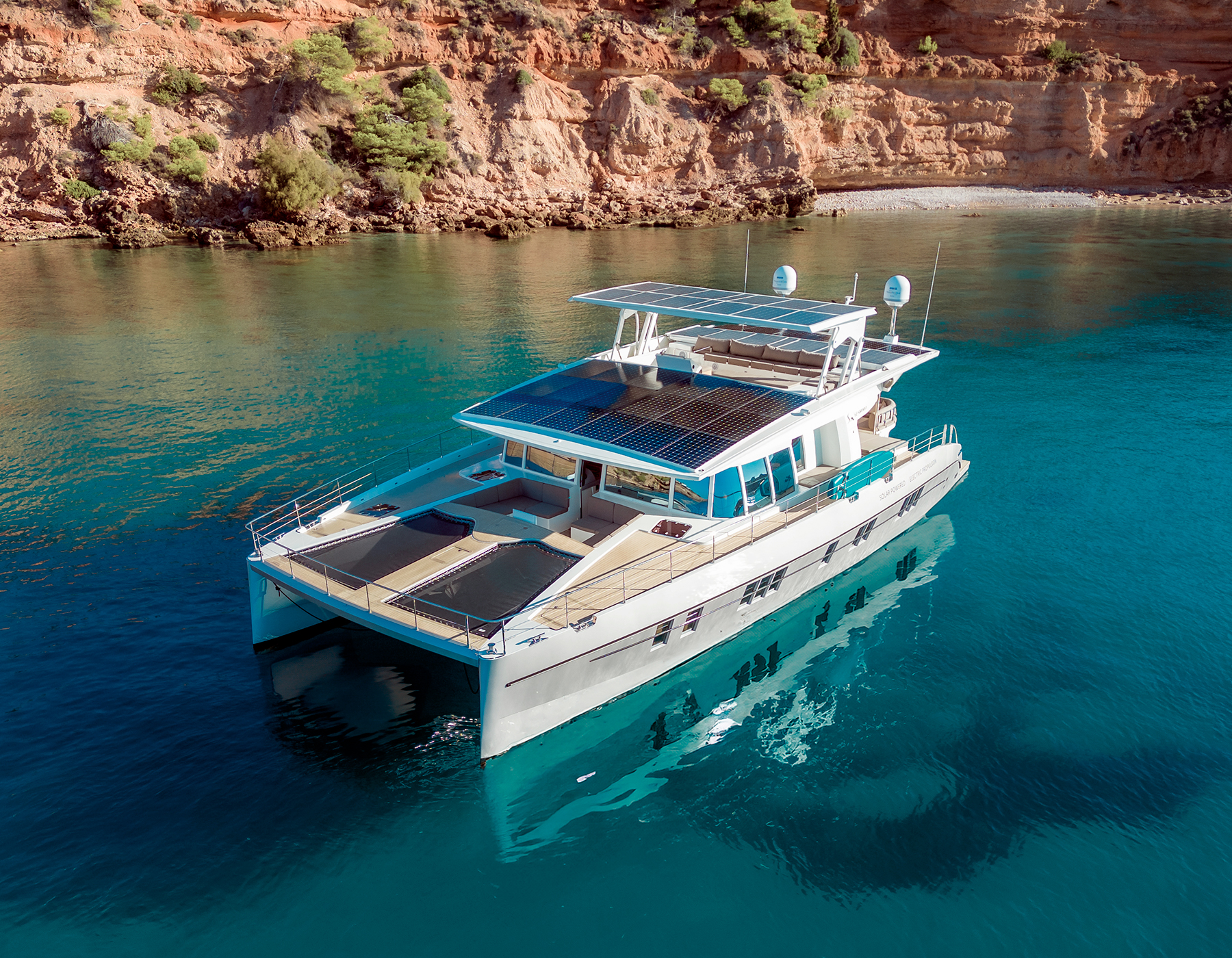
The Original Solar Yacht
As the original inventors of series produced solar-electric yachts, we pioneered this innovative approach. Our first model, the Silent 64, was launched to the market in 2016, several years before any other shipyard considered the possibility of going electric.
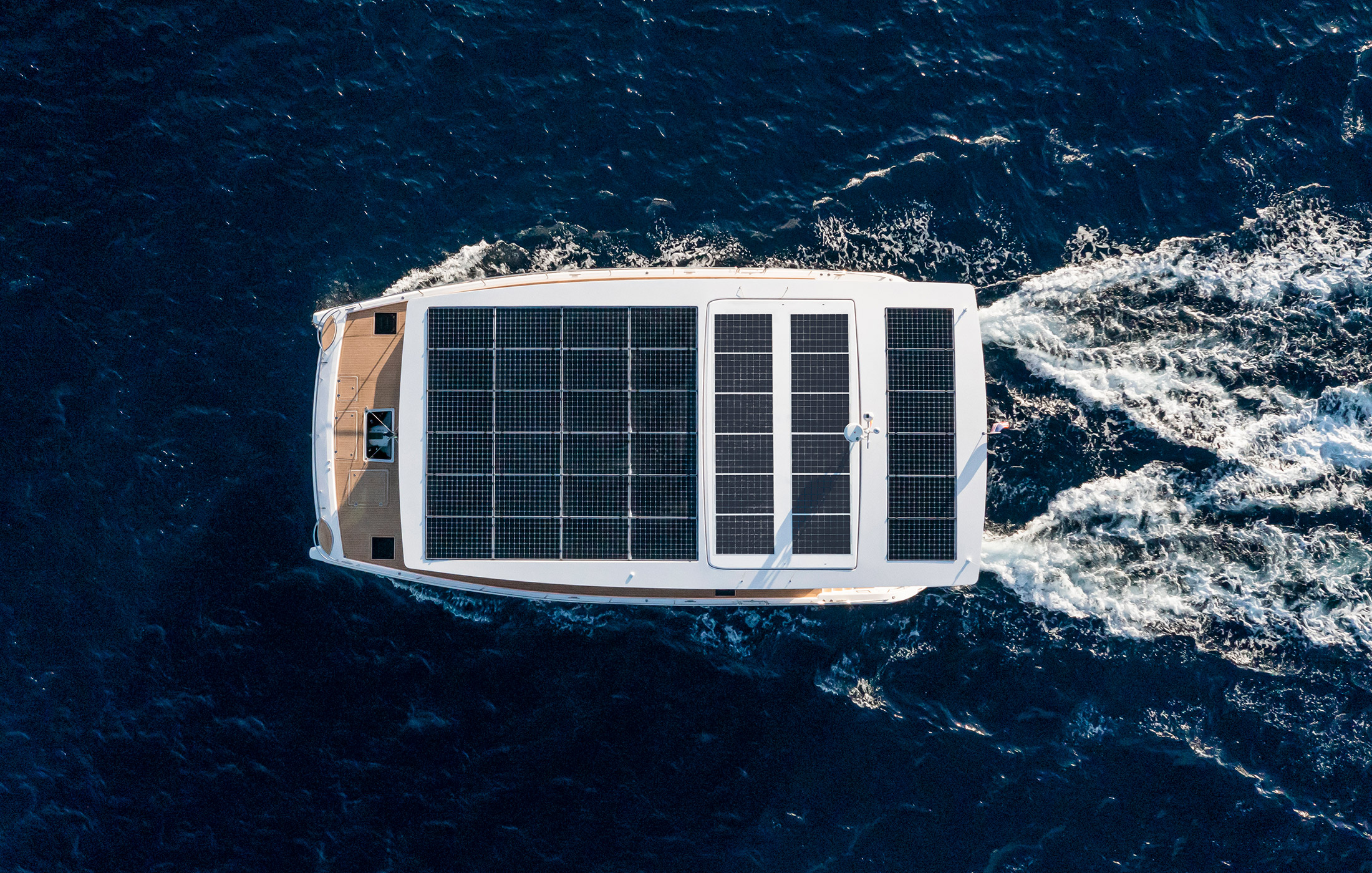
Leading Technology
Our founders began to research alternative energy sources to power yachts during the mid 1990s. Today, the technology of our in-house developed solar-electric drivetrain has been perfected and is multiple generations ahead in terms of reliability, performance and efficiency.
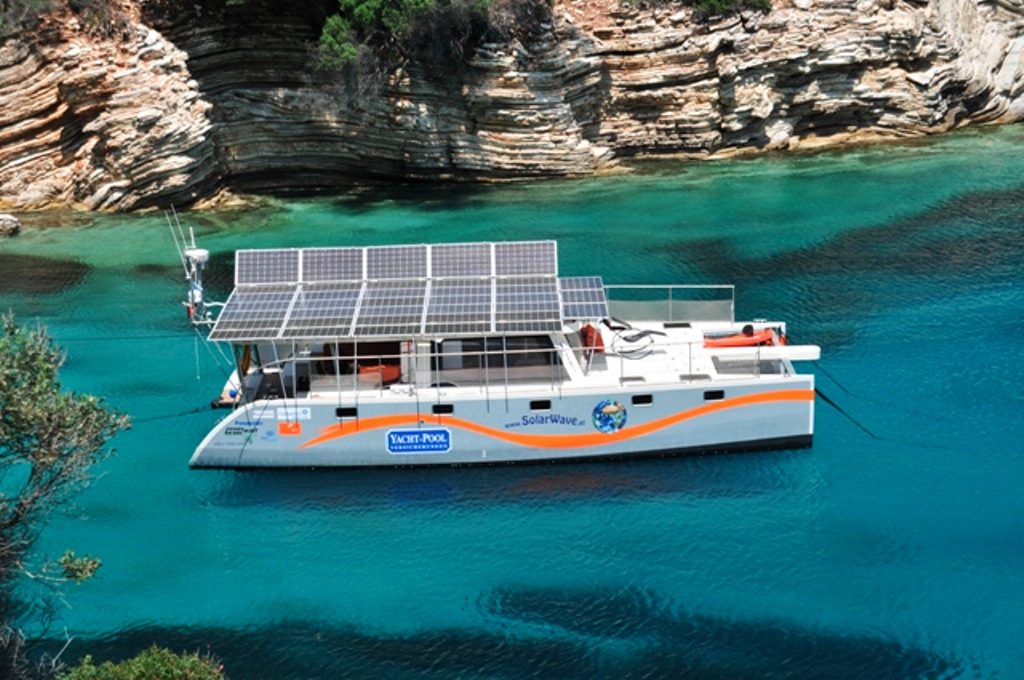
Historical Track-Record
In 2009, the Solarwave 46 was launched as our first prototype of a fully solar-electric, self-sufficient ocean-going catamaran. Since then, our electric yachts have cruised many 10.000s of nautical miles, performing flawlessly during a variety of weather conditions.
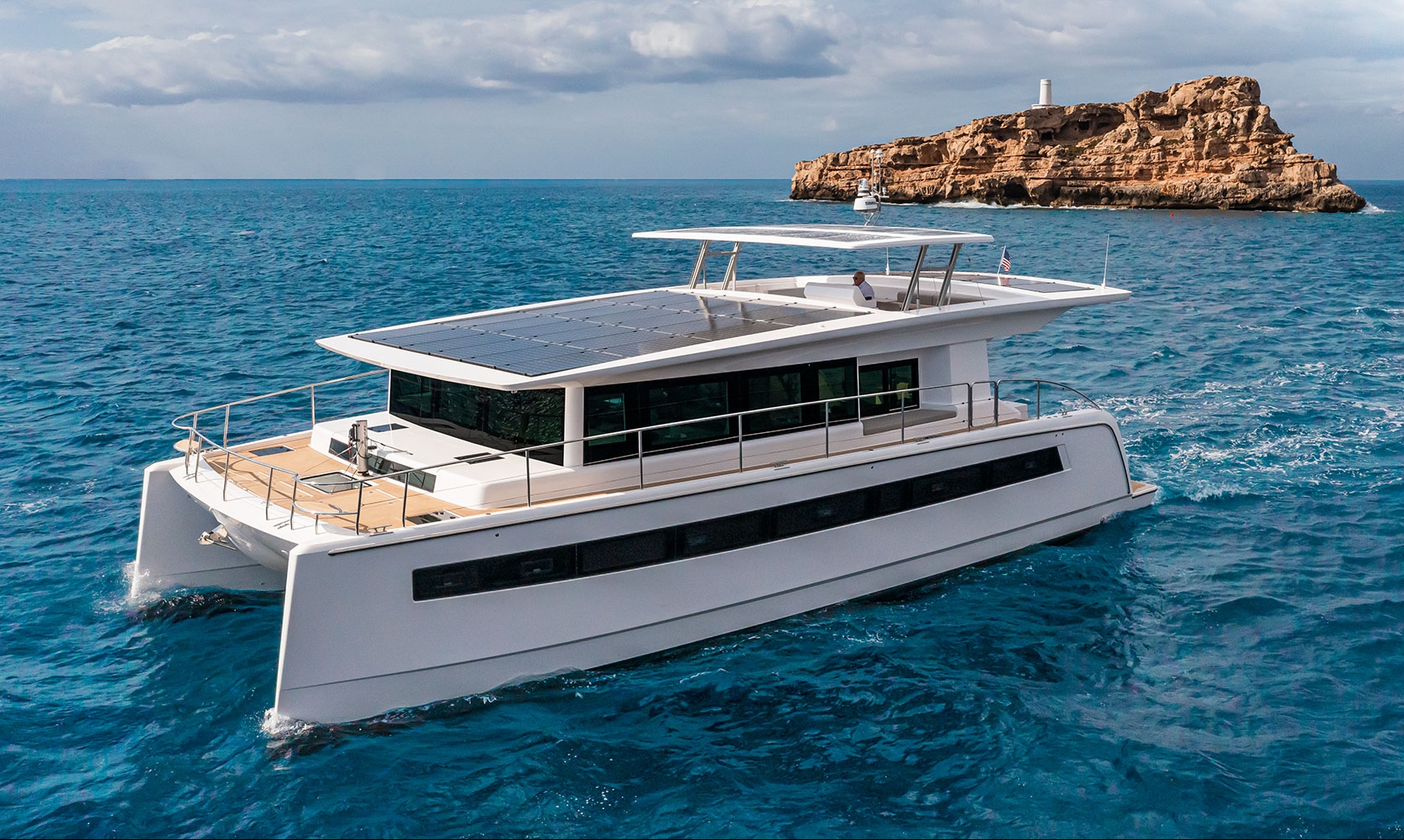
Enabling Self-Sufficiency
What differentiates a Silent is the unprecedented level of autonomy provided by our yachts. Being able to produce your own energy enables a fully self-sufficient lifestyle on board. Travel the oceans sustainably while making them your infinite playground.
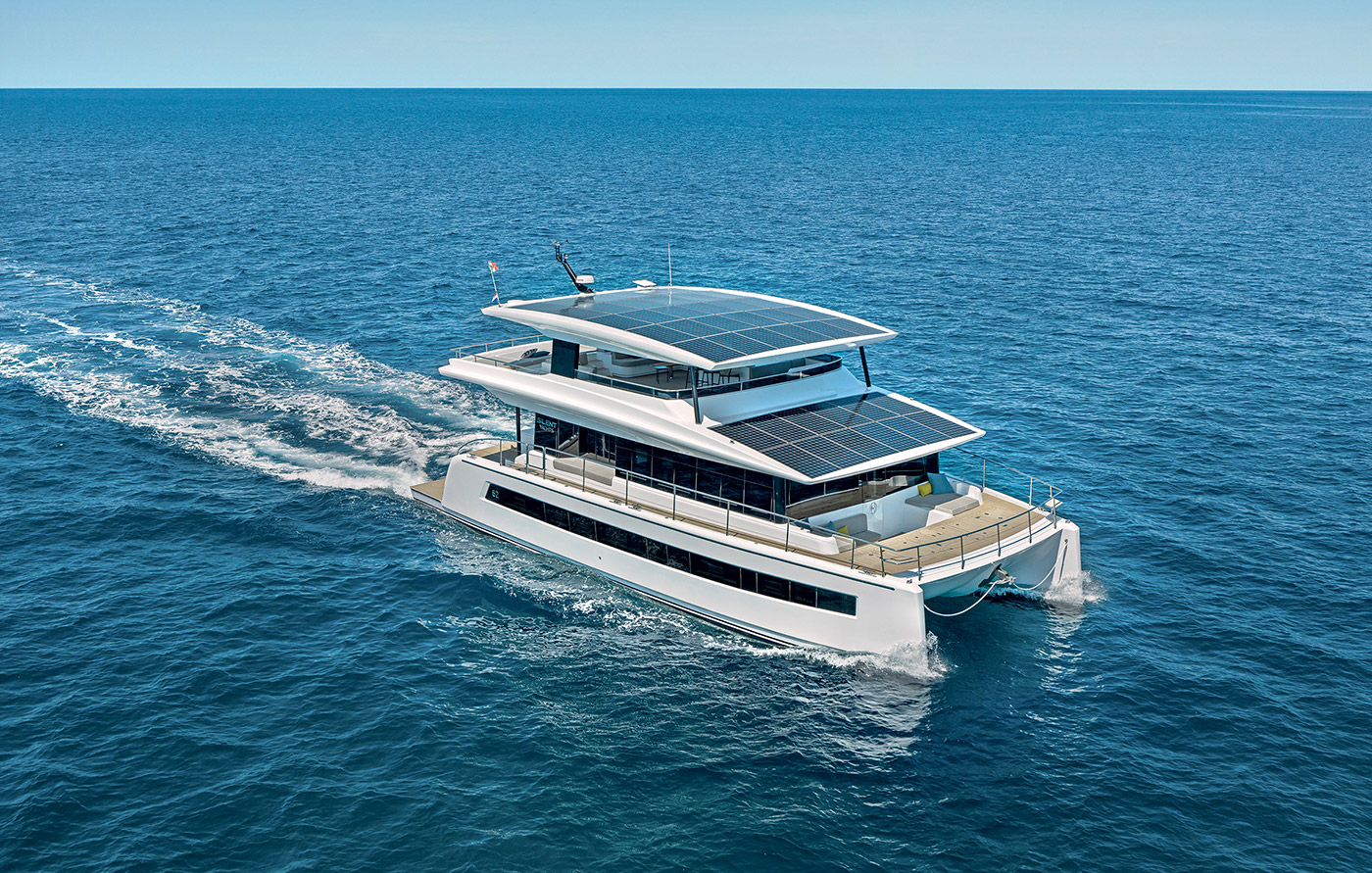
The award-winning entry to solar-electric yachts.
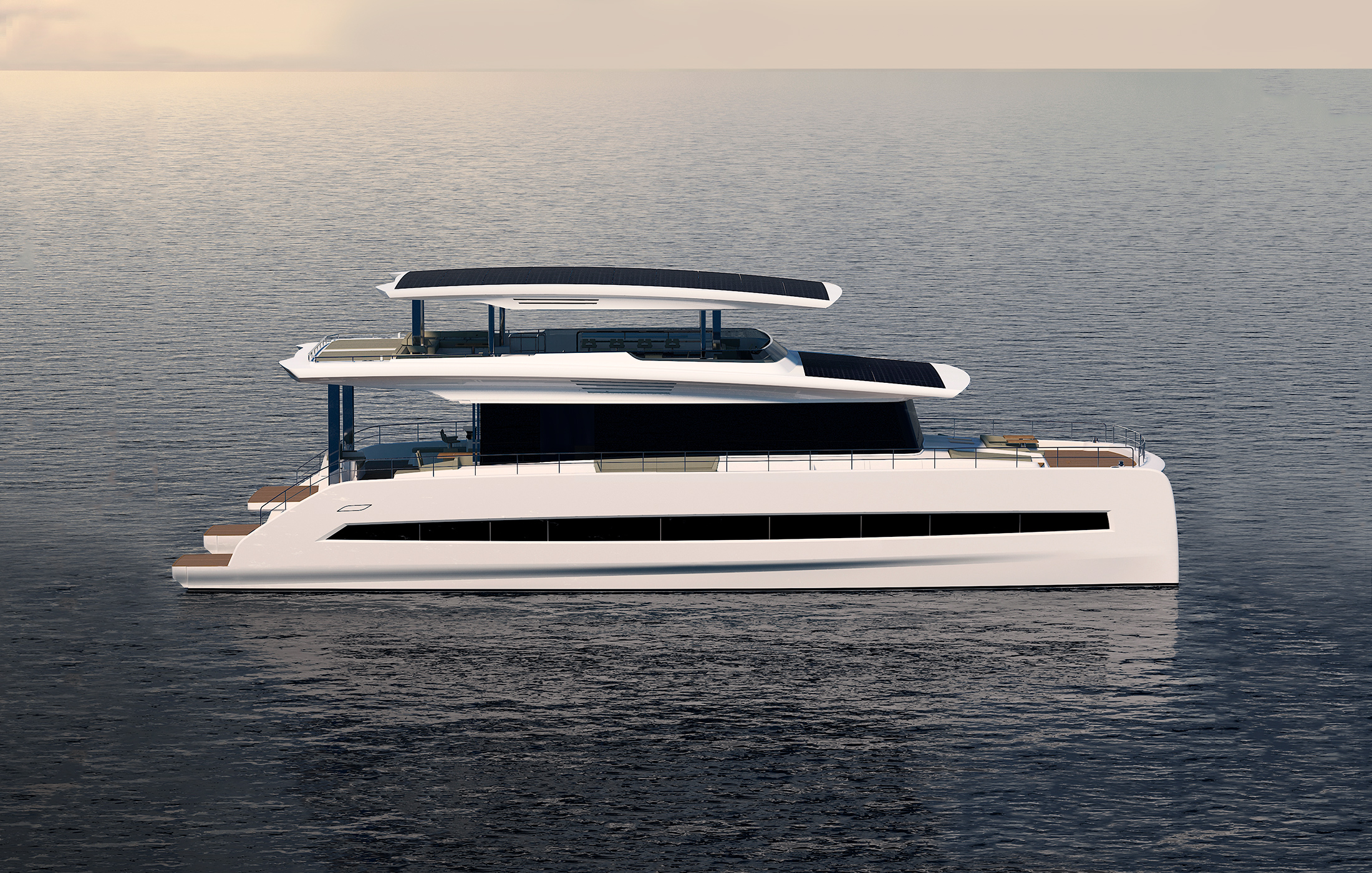
Timeless design meets state-of-the-art technology.
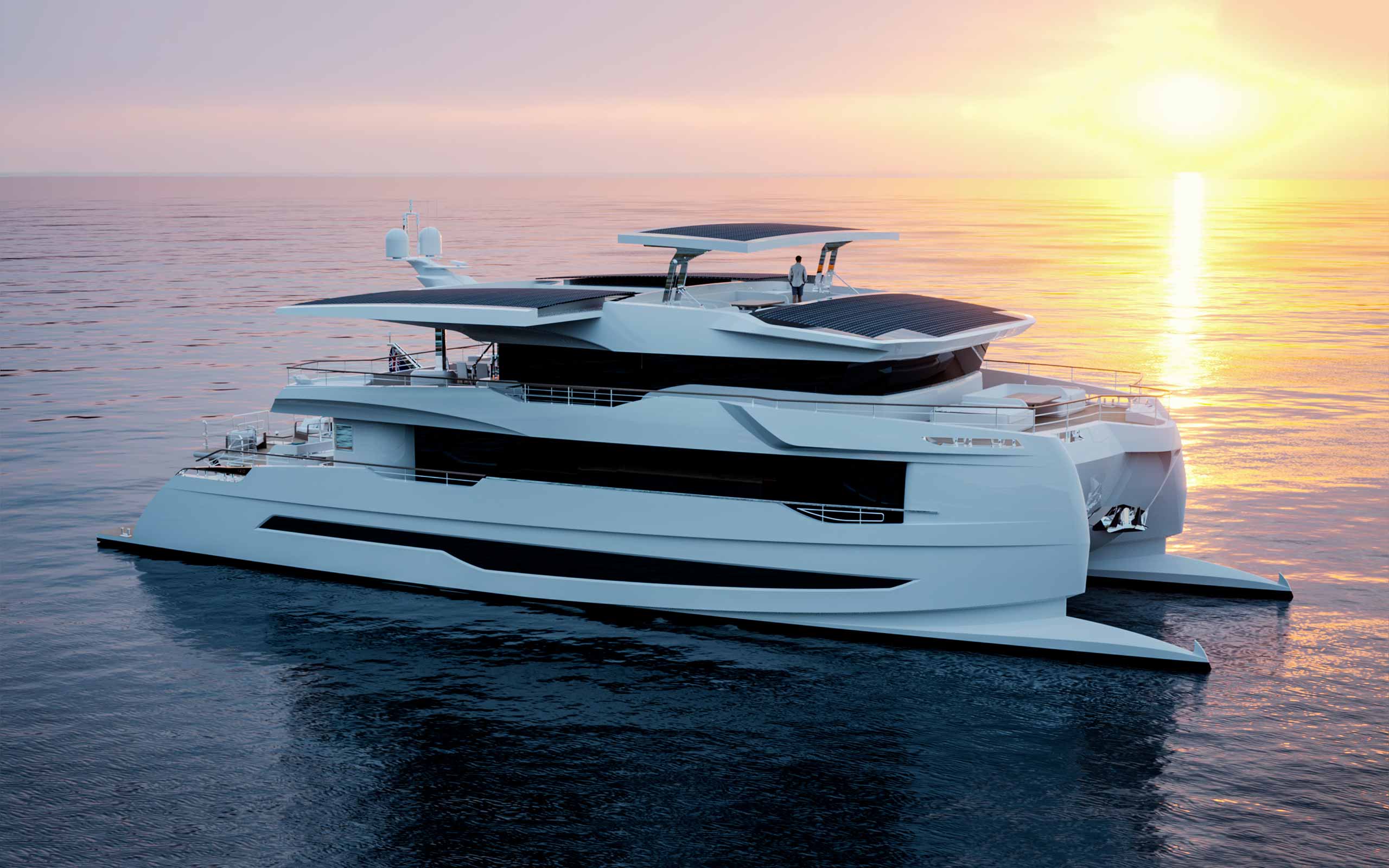
120 Explorer
The boldest expression of solar powered yachting yet.
What Makes Us Unique
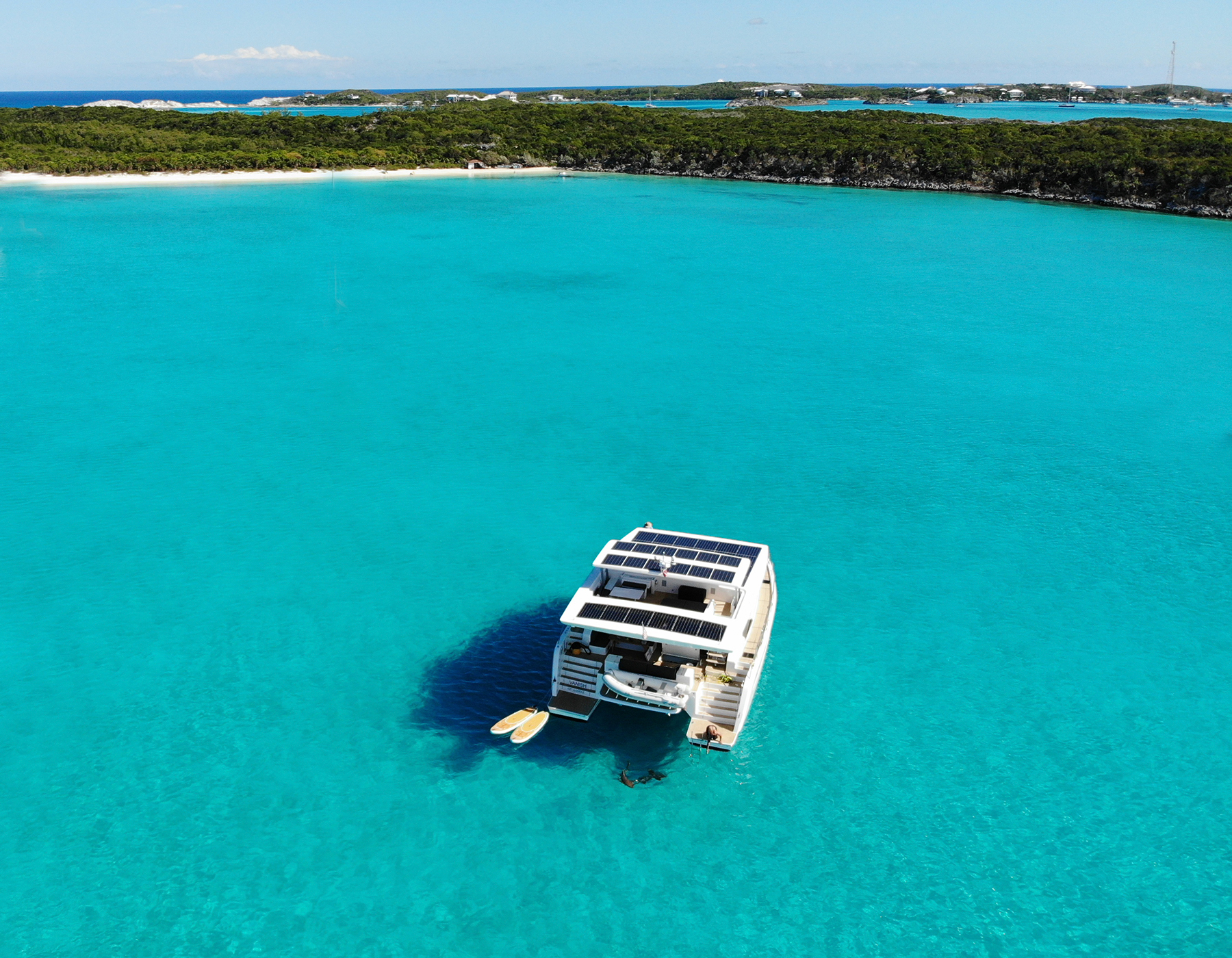
The tranquility on board of our yachts is unique. A lack of noise, fumes and vibrations create a deep connection with the sea. Luxury and sustainability finally merged into a holistic experience, working hand in hand with nature by minimizing the impact on the marine environment without compromising comfort.
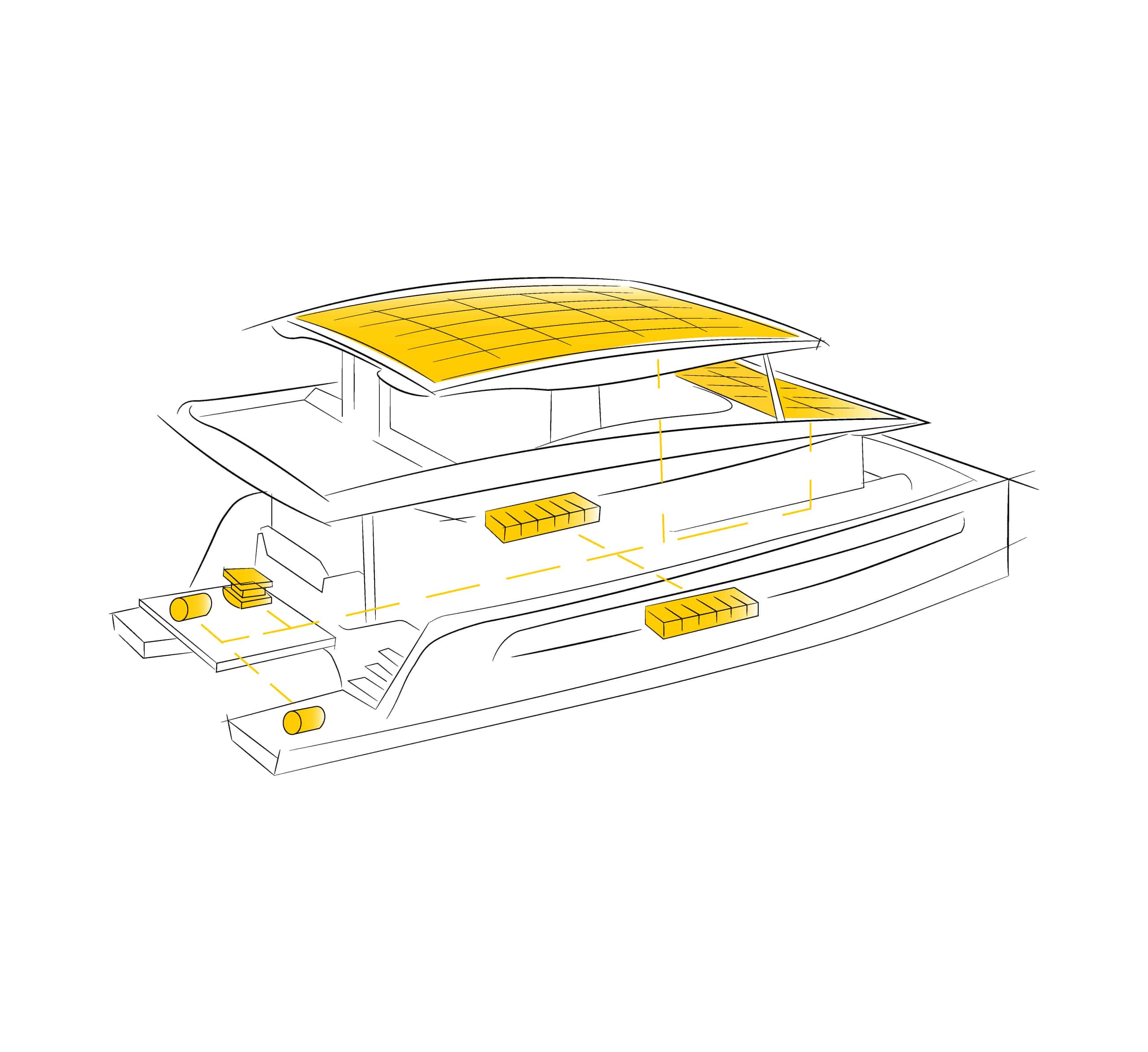
For optimal performance and efficiency, our solar-electric drivetrain integrates seamlessly with all onboard systems. Compared to fossil fuelled powertrains of motoryachts, electric powertrains have very few moving parts, resulting in minimal maintenance, maximum reliability and significantly lower running costs.
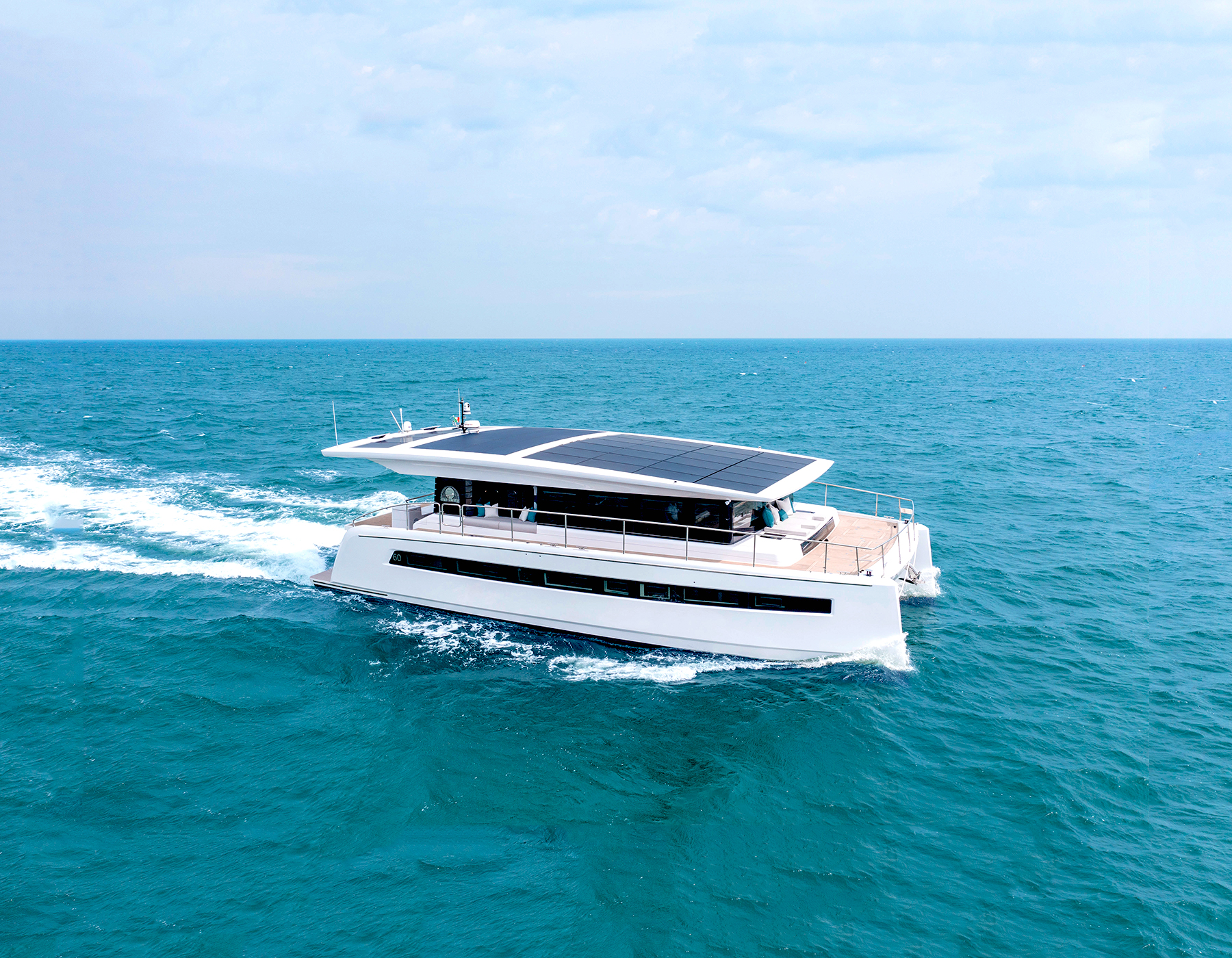
The ability to recharge your own batteries with the sun marks a new era of freedom. Depending on cruising speeds and weather conditions, a Silent has virtually unlimited range, enabling you to live a fully self-sufficient lifestyle on board. Unbound by the limitations of fossil fuels, you are free to explore the horizons.
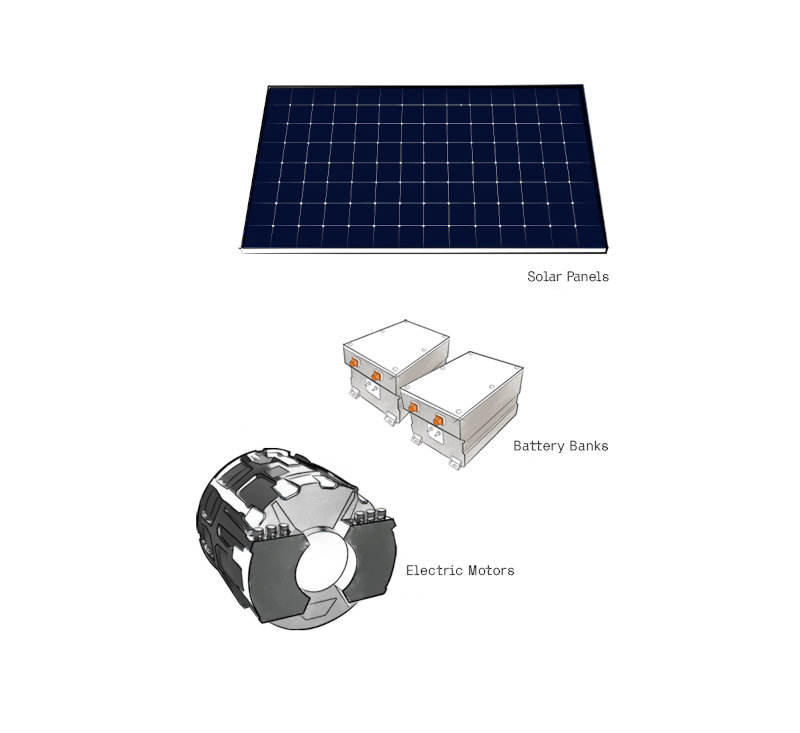
The technology powering our yachts today has been pioneered by our founders almost three decades ago. Continuous upgrading and steady optimization of the entire system are some of the key reasons our in-house developed solar-electric drivetrain offers a comprehensive portfolio of assurances and warranties.
Why Silent Yachts
A sensible approach to yachting which works in self-sufficient harmony with nature and creates a completely new experience on board.
Tech Corner
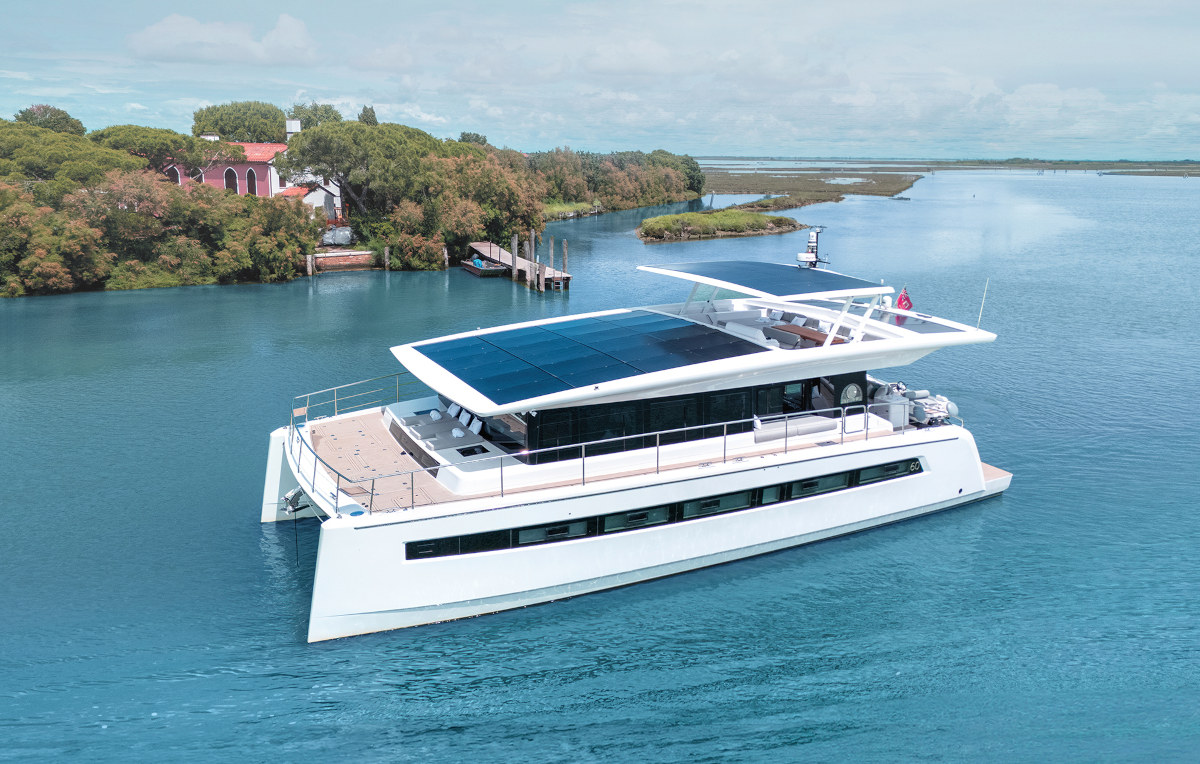
Why a Solar Powered Yacht?
Let’s break down the advantages of harnessing the sun’s energy for yacht propulsion: solar power offers remarkable efficiency, significant environmental benefits, and an unmatched synergy with the yachting experience. Join us as we dive into the future of sustainable yachting and discover how solar-powered yachts are revolutionizing the seas.
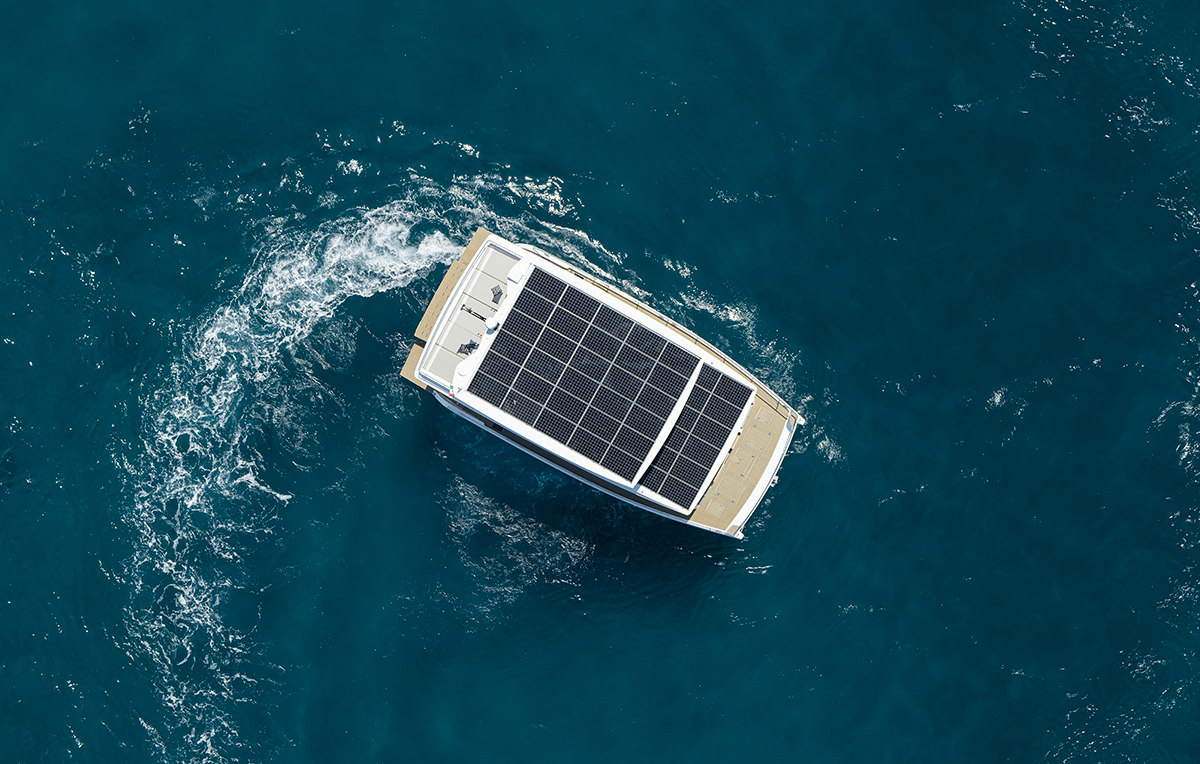
Living on a Silent 62 Solar Electric yacht
Silent Yachts’ range is designed to harness the power of the sun, providing green energy and silent cruising. But what can owners truly expect? How much power does the Silent 62 use while cruising? In this article, we evaluate a typical day onboard the Silent 62, based on actual data from our yachts.
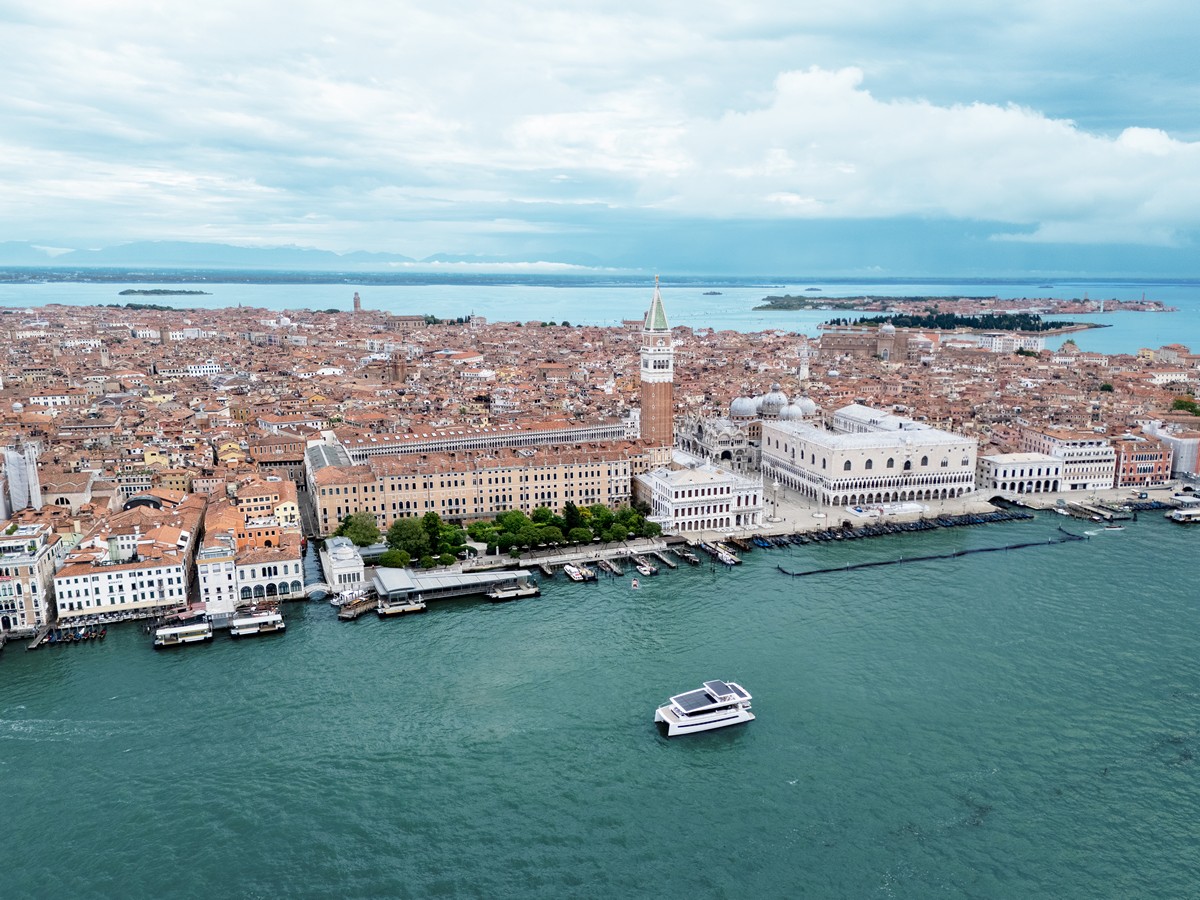
Silent Yachts’ shining debut at the Venice Boat Show 2024
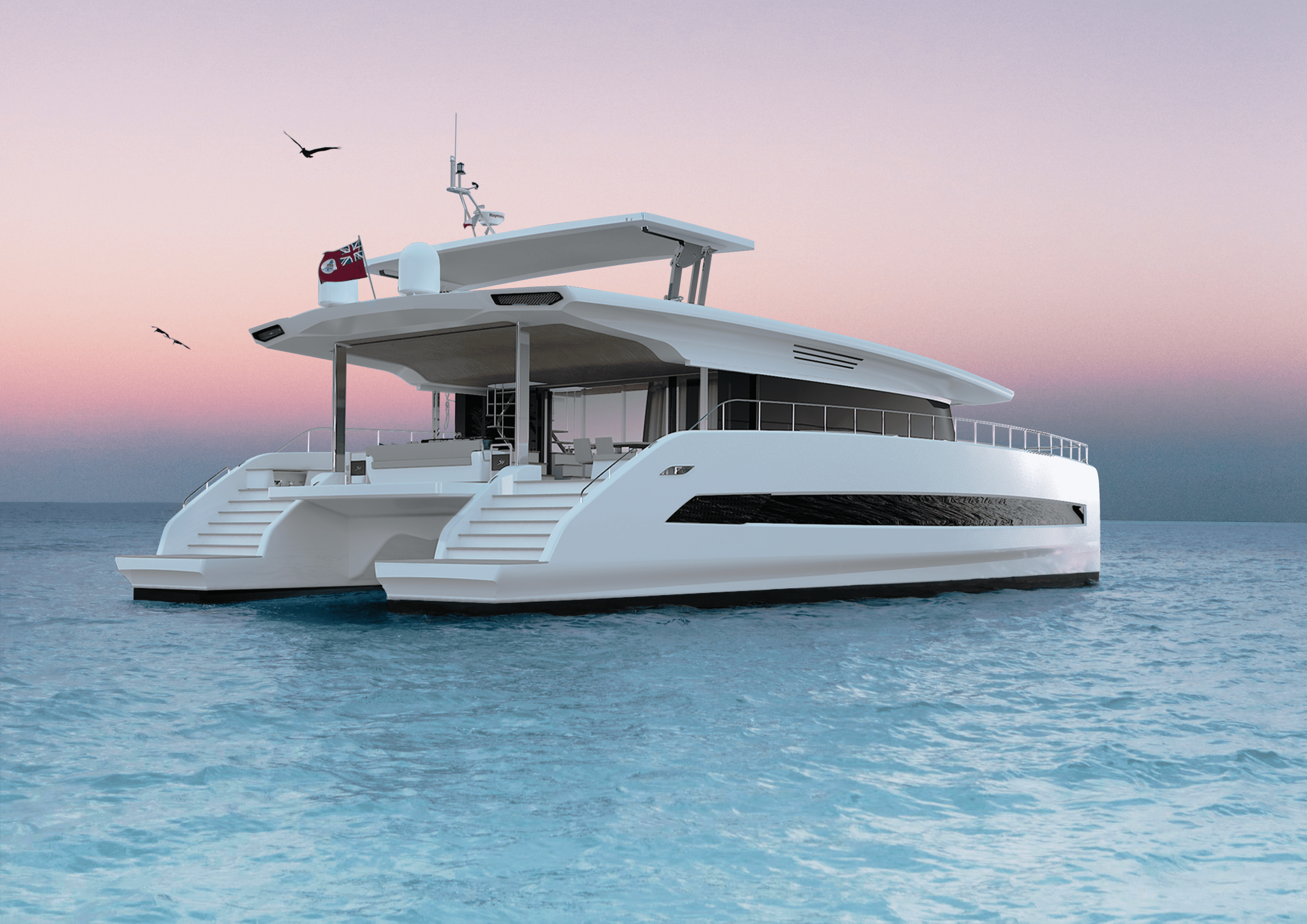
Silent-Yachts emerges stronger under new ownership
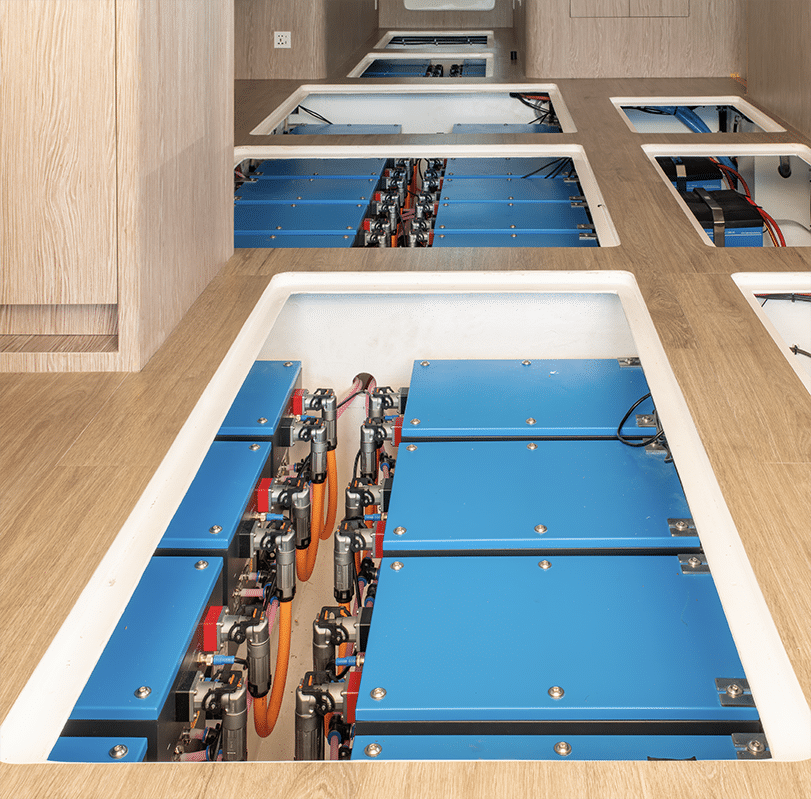
New Silent Drivetrain
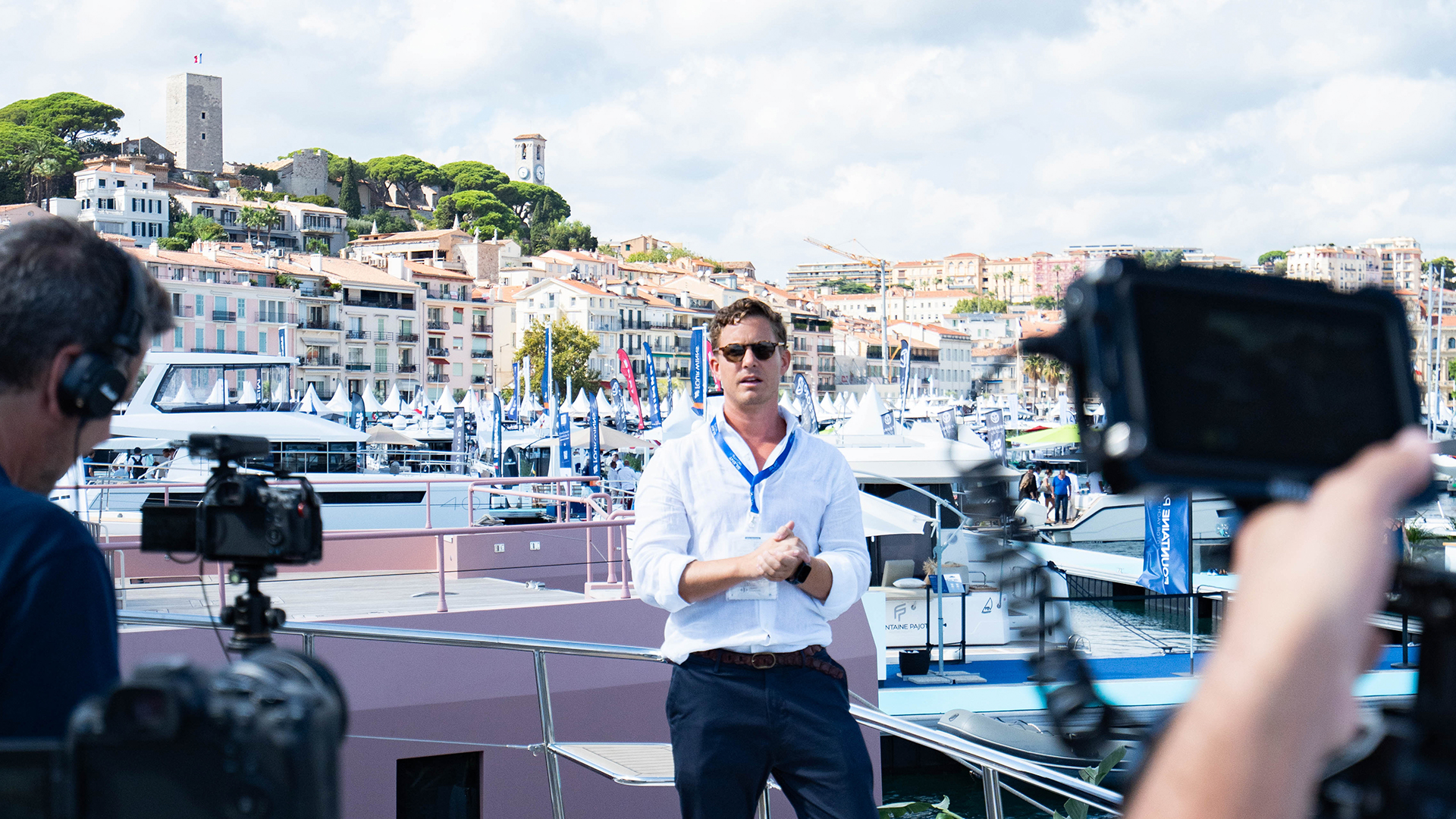
Tech shorts 2023
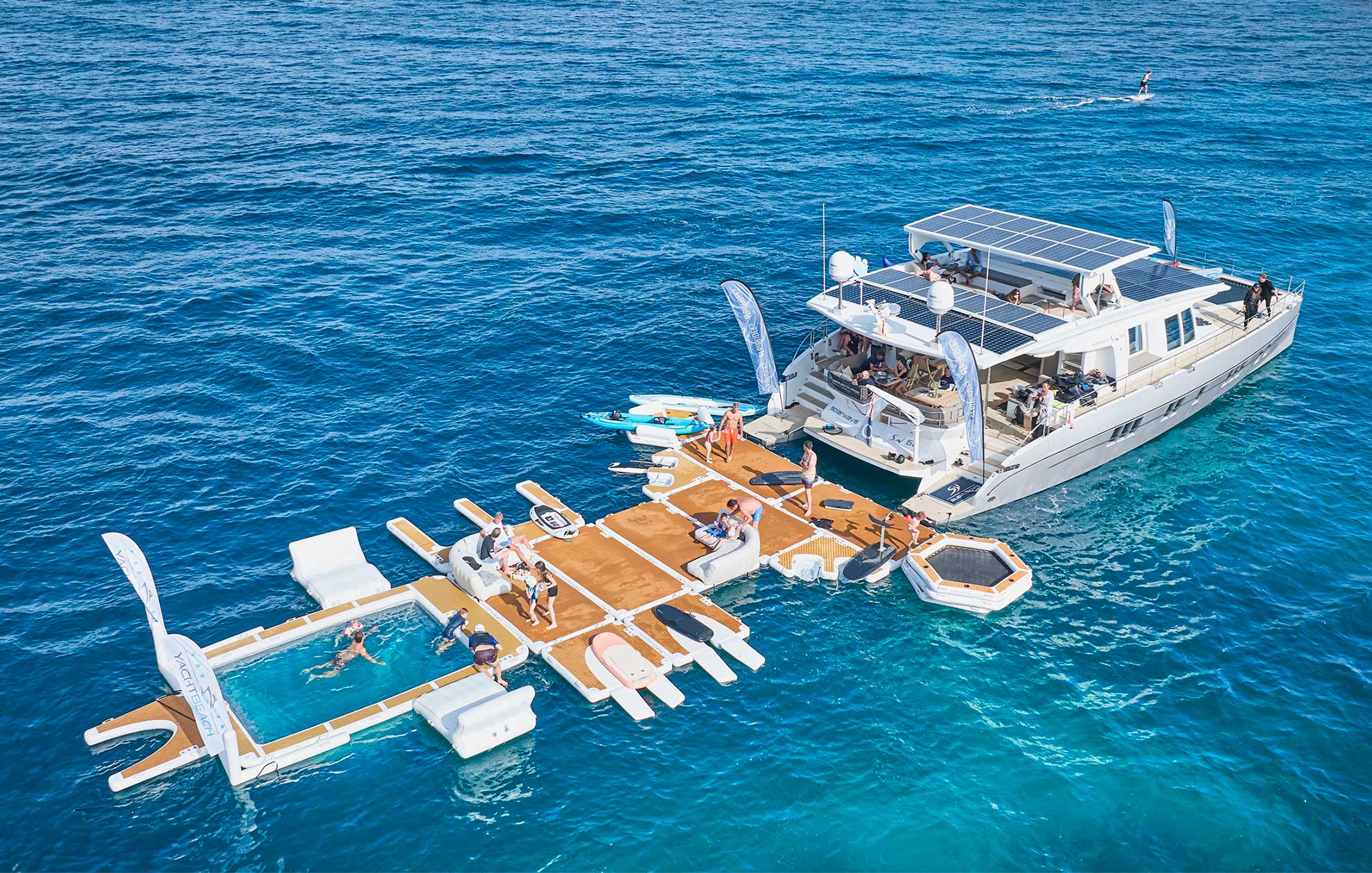
Electric power event on the water
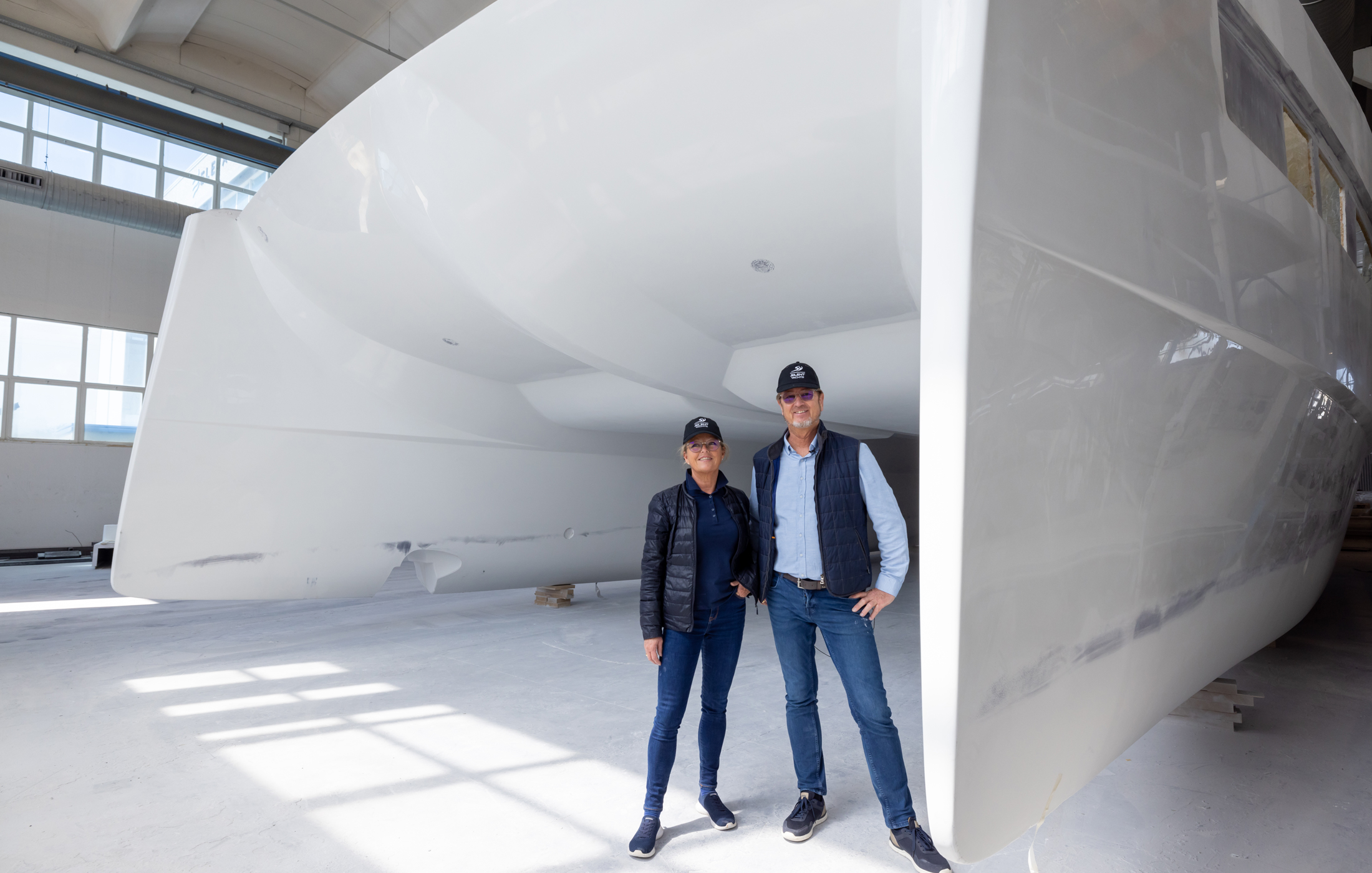
Shipyard tour Italy by Michael & Heike
“The Tesla of the seas! An amazing founding couple, a highly innovative product as well as a really cool story behind it. Furthermore, a lot of love and attention has been invested into every single detail – truly impressive!” Frank Thelen / TV Personality, Founder, Angel Investor & Disruption Expert
While the present has brought us the dawn of smart cars, I strongly believe the future will bring us solar powered smart boats – and I definitely want to be at the frontline of that journey. Michael Jost / Former Head of Group Strategy of Volkswagen Group
The idea of sailing while charging your own battery is super powerful to me – solar powered sailing is the perfect love story! Jochen Rudat / Former Tesla Central Europa Director, Advisory Board Silent Group
Elon Musk single handedly forced an entire industry to go electric, as a matter of fact if they don’t all go electric now they will soon die. I would like to see the same thing happening for boating. You are not just selling boats – you are the actual leading edge of a crucial and much overdue revolution to sustainable transport!” Klaus Obermeyer / Emmy Award Winner
I am completely excited about solar catamarans. I knew before they are great but now I truly believe this is the future. After so many boats I’ve seen in over 18 years with Boote Exclusiv, this yacht truly blew my mind. Such a silent and peaceful cruising experience – just the way it should be. Martin Hager / Editor in Chief for Boote Exclusiv - Yachts


- solar electric yachts
- Soel Senses 62
- Soel Senses 82
- Soel Shuttle 14
- Custom model
True ecotourism
no more fuel
The SoelCat 12 is an energy autonomous solar electric boat, designed from the ground up as a fully sustainable excursion vessel to enjoy the sea. The solar catamaran brings true eco-tourism to water-bound operators, communities, resorts, lagoons and nature reserves. With no CO2 or noise emissions involved, we can save the ocean and offer a better experience to our guests! The heart of the concept is silence : being on board without any distractions lets the journey become the destination!

“Being on the solar catamaran gives you a feeling of total relaxation and freedom. The energy autonomous boat is powered by clean energies and we don’t have to worry about harming the environment with dirty exhaust fumes, fossil fuels or complicated maintenance! Our guests love the quietness and the openness of the vessel, which make every sunset cruise a very special moment!”

S. Dekeunynck, French Polynesia
electric from the start
The SoelCat 12 solar electric catamaran is integrally designed for electric propulsion right from the first line drawing to the matched propeller. Every aspect of this vessel contributes towards its highly efficiency for solar electric sailing. The lightweight yet durable fibreglass construction, the large solar roof and the super slender hulls are the major key factors for the solar vessel’s high performance when it comes to speed and range. The electric propulsion system for the SoelCat 12 is superior when it comest to volume and weight.
MOBILE POWER STATION
During downtime, the SoelCat 12 can utilise its large solar array to provide energy for your land based electricity grid. The solar electric catamaran then turns into a mobile power station and is able to feed 8.6kWp into the AC grid or provide power at remote places where no grid is available. The 120kWh lithium battery system supplies all the energy required for save operations during day and night.
SPECIFICATIONS
| Length | 11.80 m | 39 ft | |
| Beam | 5.80 m | 19 ft | |
| Draught | 0.70 m | 2.3 ft | |
| Displacement | 6 ton | 13.200 lb | |
| Solar Power | 8.6 kWp | ||
| Battery Capacity | 2x 60 kWh | ||
| Electric Motor | 2x 30 kW | ||
| V | 13 kn | ||
| V | 8 kn | ||
| V | 6 kn | ||
| Passengers | 12 – 20 | ||
| Crew | 4 | ||
| CE Design Category | C |
- Running Time (battery only)
- Running Time (with solar)

“Every detail on the boat is perfect – gorgeous spaces to relax, great spots to view the sunset or the marine life, and even a bar! My favorite moment of all was after sunset, when an incredible manta ray came to say hello, drawn by the underwater lights of the solar catamaran.”
S. Lee, New Zealand
fully customizable
The deck space of the solar electric boat can be customised to your wishes and host a variety of seating arrangements and layouts. Choose classic yacht fittings, luxurious and comfortable. Or practical and economical deck wear and simple bench setup for water taxi services. Furthermore, the electric catamaran can be equipped with a day head in the port side hull. Get in contact with us now to learn more about the different options and to discuss your personal requirements with your Soel Yachts contact partner.

The solar electric catamaran can be equipped with removable roll down screens on every side for flexibility in every situation. Screens for sun shading can be applied on good days, while transparent rain screens protect your guests in bad weather conditions. When the screens are not in use, the comfortable SoelCat 12 lounge layout offers spacious space options in the hulls and underneath the furniture.

SUSTAINABLE SEA TRANSPORT
With both the Okeanos Foundation and Soel Yachts sharing a vision of sustainable sea transport and striving for a healthier planet, we are honoured that our partner, the Okeanos Foundation has funded and supported the development of the SoelCat 12. The first SoelCat 12, named the ‘Okeanos Pearl’ is the first energy autonomous vessel for the ecotourism industry and will pave the way for more sustainable coastal water vessels in many different sectors. The Bora Bora Pearl Beach Resort is proving a pioneering spirit by operating the solar electric Okeanos Pearl. As the first resort, they are offering truly sustainable, noise and emission-free excursions in the pristine lagoon of Bora Bora to their guests.
Demountable
The SoelCat 12 can be delivered as a demountable solar electric boat, which fits into two 40ft high cube containers. Such compact dimensions enable ease transport of the catamaran at affordable rates to destinations all over the world. Neither lamination processes or specialized tools are required for the SoelCat 12’s quick assembly on location. For more details, please feel free to follow the link below and discuss your project requirements with your Soel Yachts partner!
Your project enquiry

The global authority in superyachting
- NEWSLETTERS
- Yachts Home
- The Superyacht Directory
- Yacht Reports
- Brokerage News
- The largest yachts in the world
- The Register
- Yacht Advice
- Yacht Design
- 12m to 24m yachts
- Monaco Yacht Show
- Builder Directory
- Designer Directory
- Interior Design Directory
- Naval Architect Directory
- Yachts for sale home
- Motor yachts
- Sailing yachts
- Explorer yachts
- Classic yachts
- Sale Broker Directory
- Charter Home
- Yachts for Charter
- Charter Destinations
- Charter Broker Directory
- Destinations Home
- Mediterranean
- South Pacific
- Rest of the World
- Boat Life Home
- Owners' Experiences
- Conservation and Philanthropy
- Interiors Suppliers
- Owners' Club
- Captains' Club
- BOAT Showcase
- Boat Presents
- Events Home
- World Superyacht Awards
- Superyacht Design Festival
- Design and Innovation Awards
- Young Designer of the Year Award
- Artistry and Craft Awards
- Explorer Yachts Summit
- Ocean Talks
- The Ocean Awards
- BOAT Connect
- Between the bays
- Golf Invitational
- BOATPro Home
- Superyacht Insight
- Global Order Book
- Premium Content
- Product Features
- Testimonials
- Pricing Plan
- Tenders & Equipment

Rossinavi delivers first 43m hybrid-electric catamaran Seawolf X
Related articles, superyacht directory.
Rossinavi has delivered its "most innovative project" to date, the 42.8-metre hybrid-electric catamaran named Seawolf X . She has departed the shipyard's facilities in Viareggio, Italy and is now anchored near the Greek island of Tinos according to BOATPro .
Exterior design is by Fulvio De Simoni Yacht Design , marking the first project presented by the pair since the 49.1-metre Aurora in 2017. It also marks Rossinavi's first multihull project.
A key characteristic of the model is her three "performance scenarios". On one-day trips, Seawolf X can cruise in full-electric mode for 100 per cent of the time; on multi-day trips, she can cruise for 90 per cent; and on transatlantic trips, she can still cruise in electric mode for 80 per cent of the time. When the catamaran is moored, a "hibernation mode" activates for reduced consumption – with the energy generated able to be given back to the quay or to a private property. She can recharge at the shore in five hours and supplies enough energy to charge up an entire villa.
Rossinavi has also developed an onboard artificial intelligence system, called Rossinavi AI, to analyse the operation of the vessel, predict the needs of guests and communicate with the crew on "lower-impact behaviours" and "conscious cruising". The AI can also monitor the battery pack to keep it in a range of 20 to 80 per cent.
Her exterior is low-profiled and reminiscent of a sports car, with Fulvio De Simoni Yacht Design seeking "to liberate their minds from preconceptions" around catamaran design. The team also integrated solar panels into Seawolf X and addressed hull efficiency by developing "lightweight solutions", including an anchor installation that meets weight standards while enhancing aesthetics.
New York-based design firm Meyer Davis have created an interior that "complements the cutting-edge yacht to bring relaxed luxury and sustainable design to its forefront," the shipyard said. The decor takes inspiration from nature, in particular the sun, the sea and sand.
Leisure highlights include a convivial cockpit centred around a pool, an expansive sundeck with sunbathing and living spaces, and a bow area that features a hidden pool and convertible home theatre. Accommodation is for up to 10 guests in four cabins located in the hulls.
"After years of study and construction, it is now a source of satisfaction and pride for us to witness the launch of project Sea Cat, now Seawolf X , the first hybrid-electric multihull vessel," said Federico Rossi, COO of Rossinavi at the time. "This yacht showcases remarkable technological innovations in both power management and propulsion technologies, marking the beginning of a new chapter in next-generation vessels."
Seawolf X also carries the BlUE label, the shipyard' "sustainable" design philosophy established in 2022. Inspired by phytoplankton, the BlUE fleet absorbs sunlight during the day and utilises photovoltaic technology to convert it into energy. This energy is stored in advanced batteries and released at night, creating a bioluminescent effect "akin to glowing plankton".
Seawolf X is available for charter with Cecil Wright from €380,000 per week.
Sign up to BOAT Briefing email
Latest news, brokerage headlines and yacht exclusives, every weekday
By signing up for BOAT newsletters, you agree to our Terms of Use and our Privacy Policy .
More about this yacht
Similar yachts for sale, more stories, most popular, from our partners, sponsored listings.
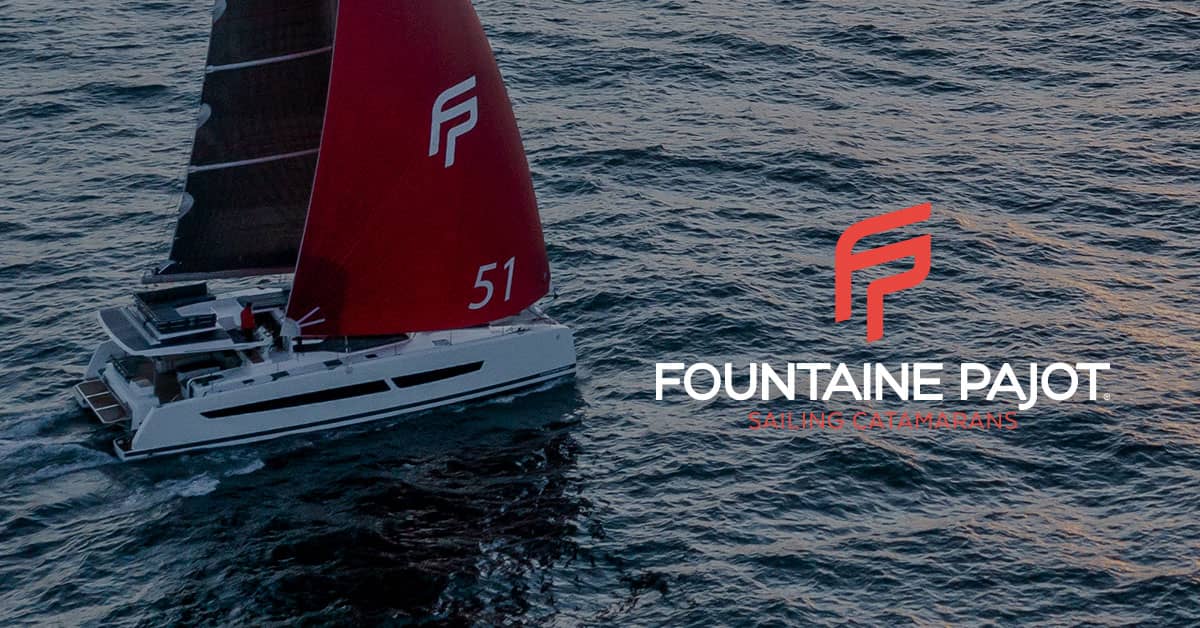
Sailing Catamarans
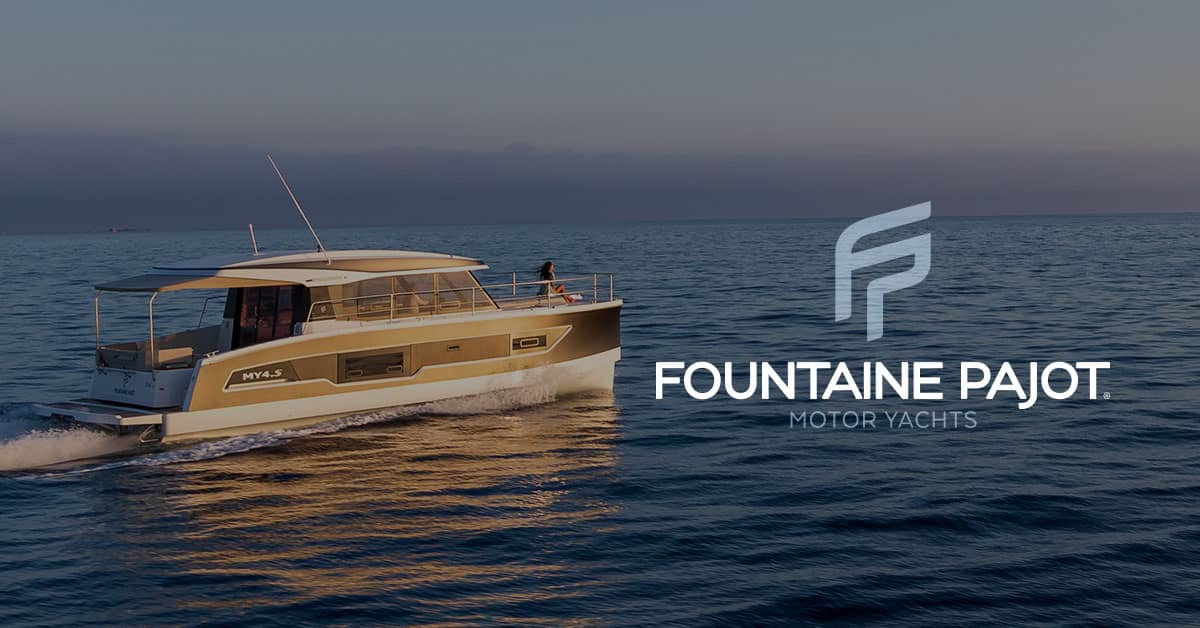
Motor Yachts Catamarans
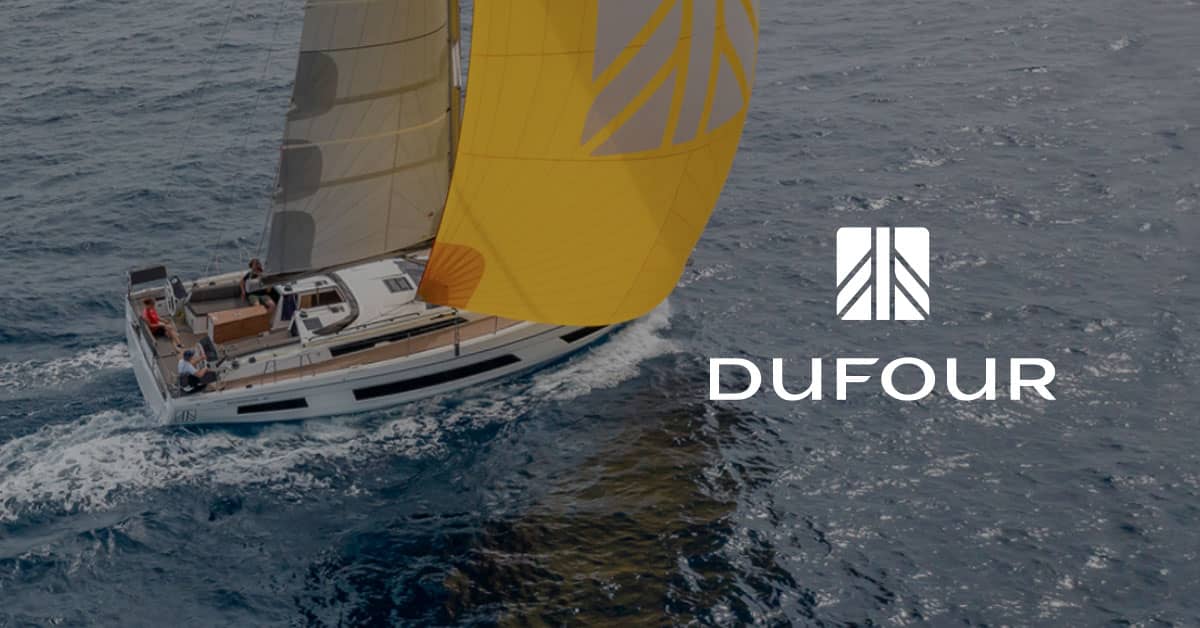
Dufour Yachts
Commitments
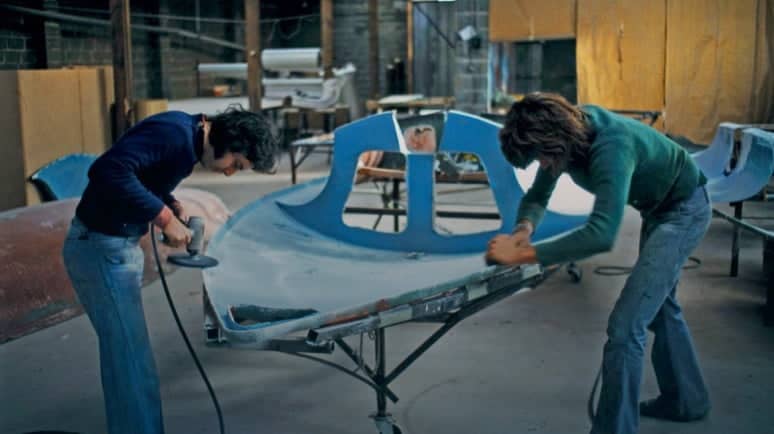
History & Expertise
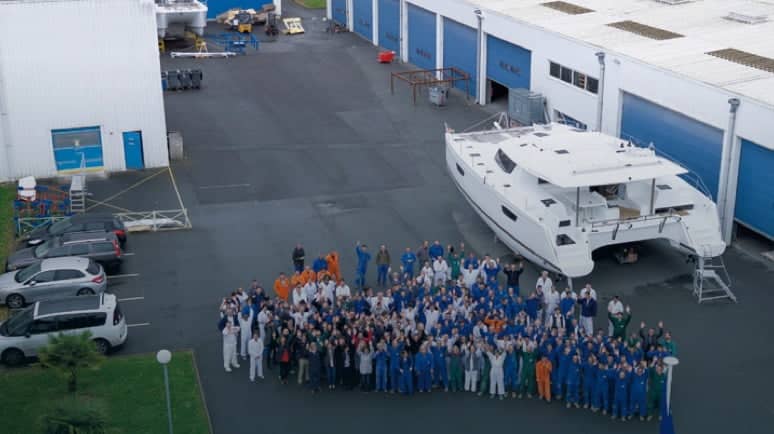
Team management
- Our commitment
The boat of tomorrow
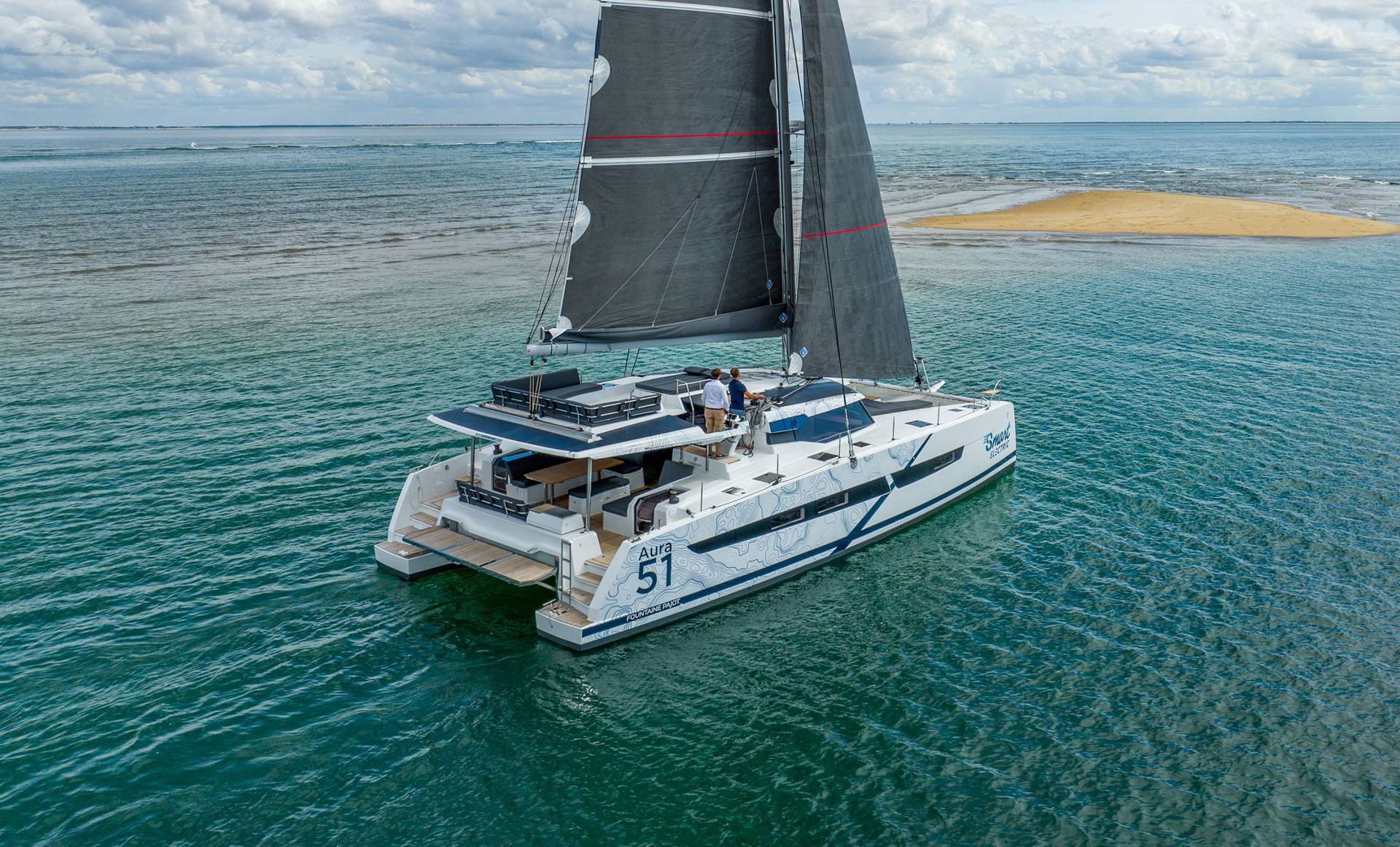
Imagine an eco-friendly boat that blends into its environment without causing distruption or harm, while also offering a remarkably luxurious and relaxing experience. Fountaine Pajot have designed and built this very boat, transforming this dream into reality.
Fountaine Pajot, pioneers in eco-sailing
With a desire to always remain a pioneer in its field, the Fountaine Pajot Group began thinking about energy transition in the cruising industry in 2011 with the Eco Cruising concept, aiming to integrate as many renewable energy sources as possible on board cruising boats , especially through the use of a hydro-generation system. Since then, with the construction and launch of the first hybrid electric cruising catamaran , the Aura 51 SMART Electric, and the design and construction of the world’s first hydrogen-powered sailing catamaran , the Samana 59 Smart Electric REXH2 prototype, the Fountaine Pajot Group has become a leader in the green yachting industry.
Aura 51 Smart Electric, the new eco-friendly catamaran
Smart Electric, an adaptable system
A viable and effective solution based on the Aura 51 production series, the Smart Electric system, designed by Fountaine Pajot, is designed to be installed on every boat in its catamaran sailboat range. By 2025, 50% of Fountaine Pajot catamarans will be fully electric and 100% will be fitted with solar panels . By 2030, the Group aims to make 100% of its fleet electric and to phase out diesel engines.

Boats for a brighter future
Samana 59 Smart Electric REXH2 – The world’s first hydrogen-powered catamaran
The Samana 59 Smart Electric RexH2 features a revolutionary energy design comprising a REXH2 capable of delivering up to 70 kW of continuous power, a 63 kwh LiFePO4-EVEPOWER (Lithium Iron Phosphate) cell battery and 42 m2 of solar panels capable of delivering up to 6000 Wc. This energy mix means we can take advantage of all the renewable energies onboard the catamaran (solar, wind, and hydrogen). In port, the crew can fill up with hydrogen and recharge its batteries if necessary. All the technologies are managed by the Smart Cruising solution, an automated Power Management System for simple, intuitive control of this cutting-edge technology.
Aura 51 Smart Electric
Pioneering the Smart Electric system, the Aura 51 sets the course we are heading, as we will be integrating the system across the entire Fountaine Pajot range in the near future. The Fountaine Pajot design office, in collaboration with architects Olivier Racoupeau Design, has designed the Aura 51 Smart Electric to accommodate a large surface area of solar panels without affecting her appearance. Her large, user-friendly flybridge is fitted with 15.55 m2 of solar panels fully integrated into the catamaran’s line , capable of delivering 2000 Wc of energy to power two battery banks supplying up to 32 kwh each. An additional option produces 1.5 kw of energy by a hydro-generation system using the propulsion propellers’ reverse rotation when under sail.
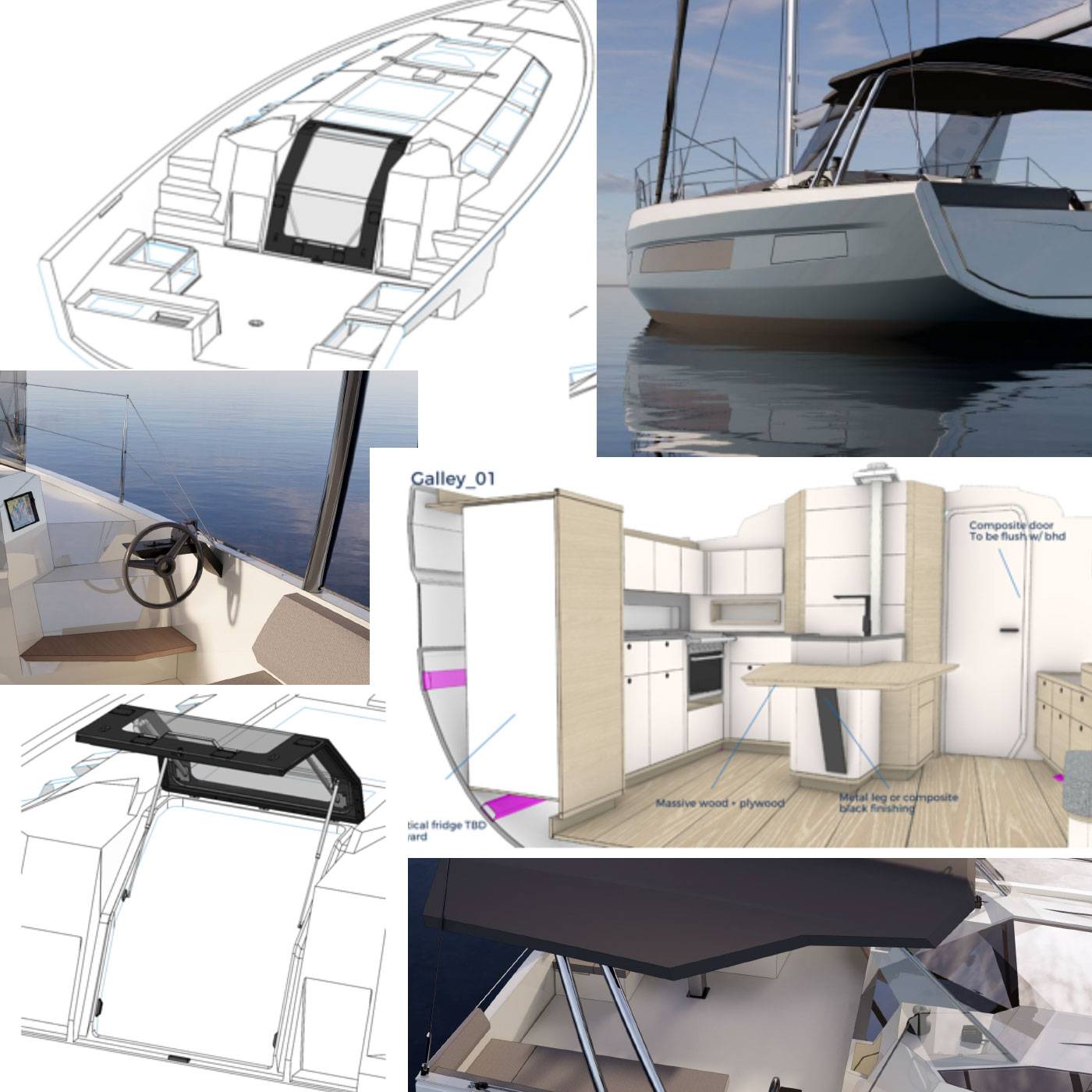
The Dufour “Unicorn” Project
The first monohull yacht to be built using recycled, recyclable composite, this Dufour prototype is designed to prove the effectiveness of new, low-impact construction materials. The aim is manifold:
- To raise awareness of the lifecycle of boats and new ways of using them
- To encourage the recycling of materials at the end of a boat’s life
- To design the yachting monohull of the future, both inside and out, to respond to tomorrow’s expectations and lifestyles .
The ultimate aim is to deconstruct this eco-friendly yacht 100% in order to test its entire life cycle .
Discover also
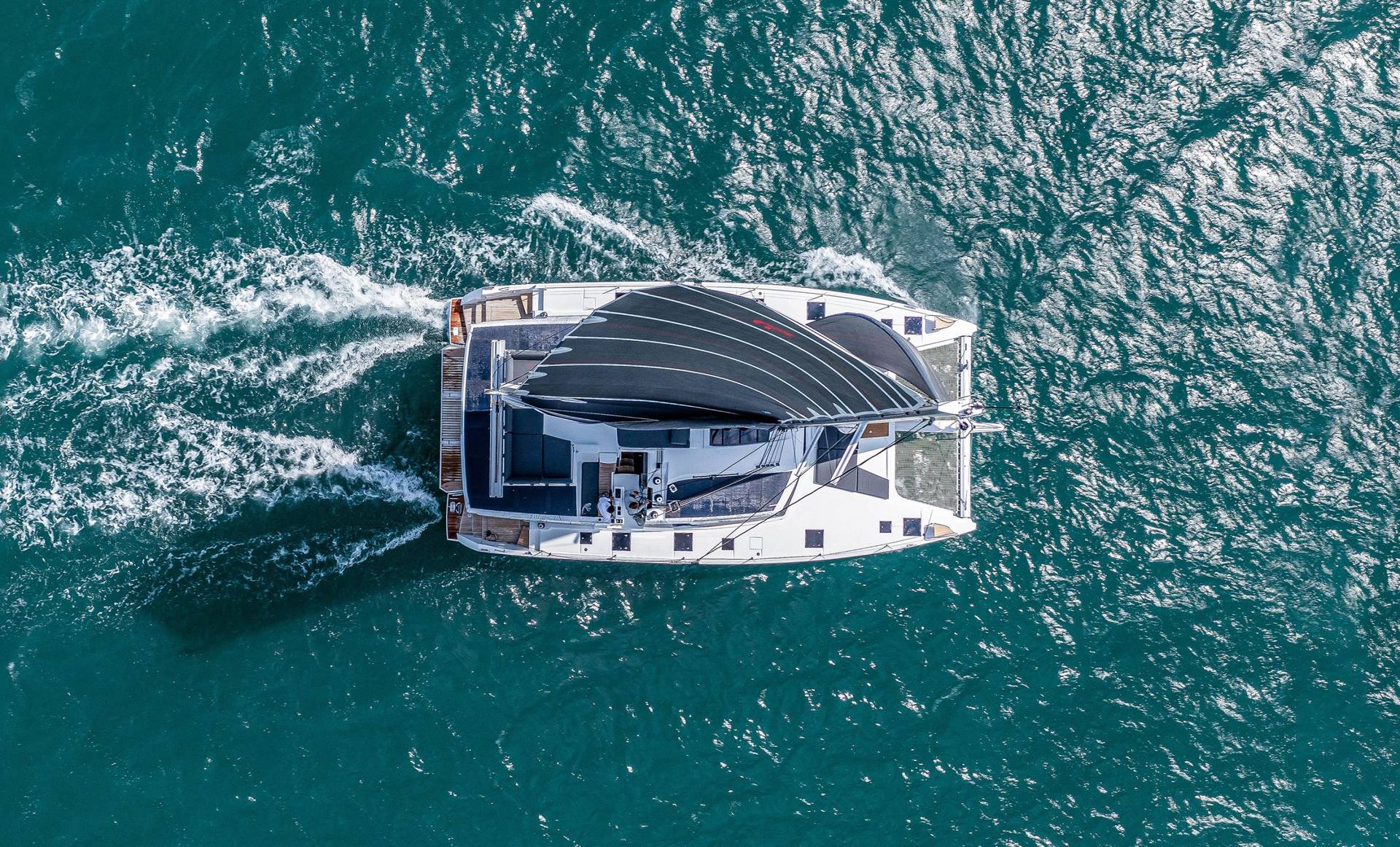
ODSea People
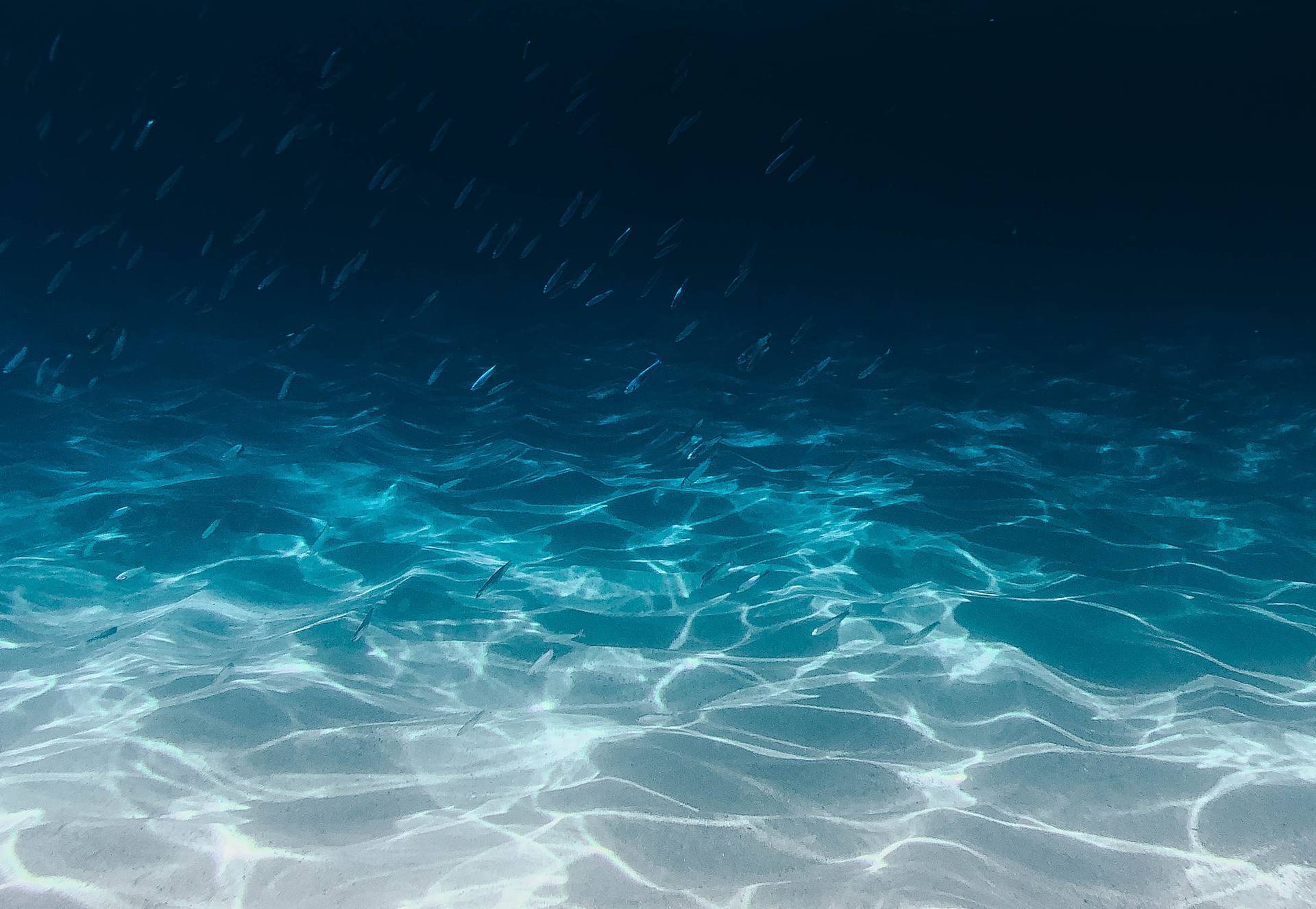
Sailing towards carbon neutrality
How can we help you?

You would like to :
Are you a homeowner? We answer your questions
contact-owner.text
Receive an offer as a Charter Company
You own a charter company and wish to renew or expand your fleet? Contact our sales team to discuss your project
Contact us for any other request
For a partnership proposal or any other professional request, please contact our team
Subscribe to the newsletter
Follow the adventures of Fountaine Pajot Owners, discover the latest news and upcoming events, and take part in the development of the Boat of tomorrow!
- BOAT OF THE YEAR
- Newsletters
- Sailboat Reviews
- Boating Safety
- Sails and Rigging
- Maintenance
- Sailing Totem
- Sailor & Galley
- Living Aboard
- Destinations
- Gear & Electronics
- Charter Resources
- Ultimate Boating Giveaway

TradeWinds Debuts 59-foot TWe6 Smart Electric Yacht
- By Andrew Parkinson
- April 10, 2024
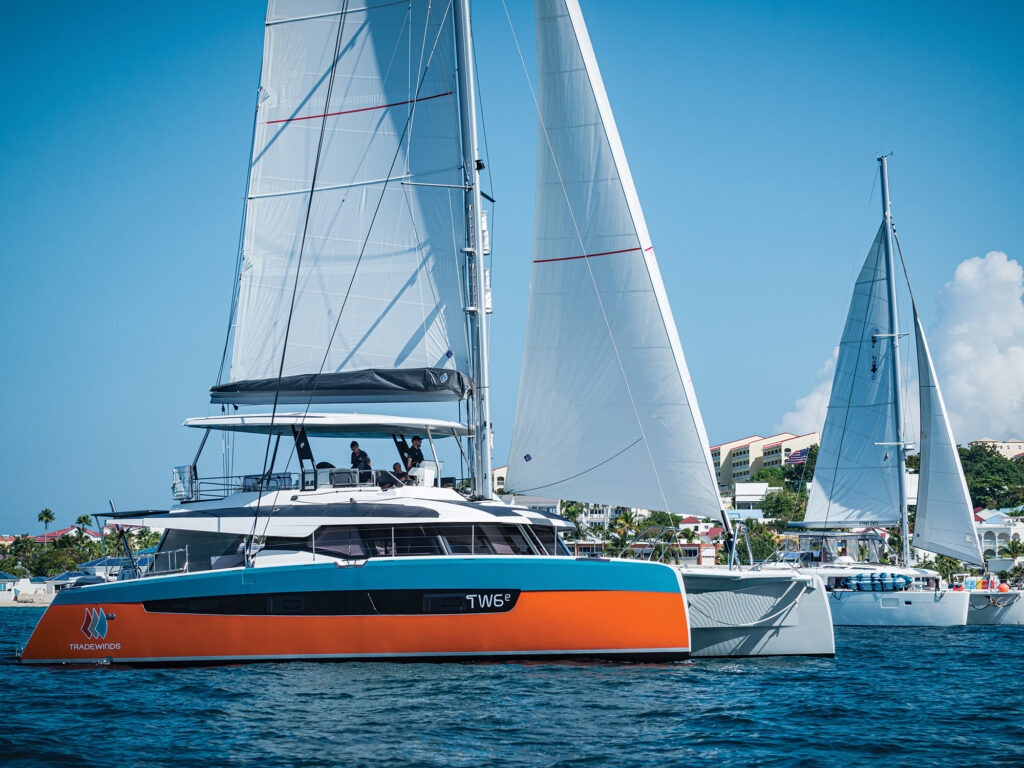
With its unmistakable aqua-and-orange color scheme emanating from twin hulls, the Fountaine Pajot Samana 59 Aurora was easy to spot in the pack of competing rallyists at the 2024 Caribbean Multihull Challenge out of St. Maarten in February. Yet while the first-time participant managed to steer clear of any winners’ circles (sorry, Team Aurora ), it certainly found itself a standout in perhaps the most important category of all: eco-conscious cruising.
TradeWinds, whose experiences blend the best of the cruising life with protecting and preserving the environment, used this year’s CMC Rally as a shakedown cruise for the much-anticipated 59-foot TWe6 Smart Electric Yacht from Fountaine Pajot. The boat’s power generation comes from hydro, solar and wind. Designed and built in partnership with EODev, a specialist in industrial solutions using hydrogen, the Fountaine Pajot 59 Aurora is the world’s first production cruising catamaran with 100 percent electric propulsion that uses hydrogen as an energy source. This prototype, a Samana 59 Smart Electric X REXH2, is named after the electro-hydrogen generator that it carries.
The system is based on three operating modes. The first mode is fully electric. A battery of 60 kWh, powered by solar panels and hydraulic energy similar to that on board the Aura 51 Smart Electric, allows the boat to be autonomous at anchor and during several hours when sailing.
The second mode integrates green hydrogen as a source of energy storage, allowing for hybrid electro-hydrogen operation. Hydrogen, under pressure, feeds a 70 kW fuel cell that supplies electricity to the electric motors. EODev says that this fuel-cell technology, in addition to addressing decarbonization, allows for an increased life span of the system equivalent to three times that of traditional diesel equipment. In use, the operation is similar to a hydrogen hybrid car, with recharging possibility at port via hydrogen terminals. This mode, coupled with solar panels and hydrogen generation, provides autonomy at anchor for several weeks, and five hours of motor navigation at a speed of 7 knots.
The third mode is diesel hybrid. A small backup generator will take over during situations that require prolonged use of the engines, with no possibility of recharging with hydrogen.
In standard use, with a laden displacement slightly more than the standard FP59 catamaran’s, Aurora is expected to be self-sufficient, with zero emissions for up to a week. There’s one caveat: access to hydrogen recharging. For the time being, no infrastructure exists in ports.
However, TradeWinds and Dream Yacht Worldwide have ordered 10 Fountaine Pajot electric catamarans—so the future will in some way need to include marina recharging stations. Watch this space for more information.
- More: Charter , Charter Life , green sailing , Nextmarine , Print April 2024 , Sailboats
- More Sailboats

Sailboat Preview: Elan GT6 Explorer

For Sale: 1984 Camper & Nicholsons 58

Alubat Updates OVNI Models

For Sale: Little Harbor 63 Ketch

From Paradise to Medical Emergency: A Bahamas Nightmare Turns Lesson Learned

Free Medical Advice: The Unwarranted, Unprofessional Edition

Gatekeepers of the Waterway

Rigging Redo: Our Switch to Synthetic
- Digital Edition
- Customer Service
- Privacy Policy
- Terms of Use
- Email Newsletters
- Cruising World
- Sailing World
- Salt Water Sportsman
- Sport Fishing
- Wakeboarding
- Yachting World
- Digital Edition

How hybrid sailing yachts finally became a feasible option
- May 17, 2019
They’ve been a long time coming, but marine hybrid propulsion systems are finally a working reality, as Sam Fortescue reports

The Bootswerft Heinrich-built 13m Yamila uses an Oceanvolt electric motor rather than a diesel engine. Photo: Peter Minder
Every sailor is familiar with the wet cough of the diesel engine, and the acrid smell of its exhaust. For some it’s the sign that an adventure is starting, for others it is the reassurance that all is well on board the boat. The traditional engine is perhaps your boat’s most important safety feature, but its days may be numbered.
The electric sailing revolution is coming – and though adoption in the marine sector is proving much slower than in the automotive world ashore, progress is being made.
The market is still relatively small. Clear market leader Torqeedo had sales of €25m last year, most of which was in ferries and compact outboards. It also offers a range of saildrive and pod drive motors for yachts displacing from 2 to 50 tonnes, or roughly 20-60ft LOA.
But sailors have been slow on the uptake, and for one good reason: if you’re planning to cross an ocean or take on tough conditions offshore, you rely on your engine to help you outrun danger or motor through the doldrums – sometimes for days at a time.

Oceanvolt AXC series is a modular shaft drive system (10kW to 40kW) that will fit in place of a tradition diesel engine
Even with the current crop of advanced lithium-ion boat batteries , the range of an electric system is measured in tens of miles, not hundreds. So a 35ft monohull with 10kWh of lithium battery (four units weighing 96kg in total) would have a range of just 24 nautical miles at 3.8 knots, or less than 16 nautical miles at full throttle.
Taking into account the incredible wastage of combustion engines, which dissipate more energy as heat and noise than they provide in propulsion, diesel is still ten times more energy dense than batteries.

Full-carbon luxury daysailer Yamila uses an Oceanvolt SD8 8kW electric saildrive system. Photo: Tobias Stoerkle
“When you look at bluewater cruisers, of course you will have a diesel,” says Torqeedo’s founder and CEO, Dr Christoph Ballin. “And it’s right that not many coastal sailors opt for pure electric.”
But that doesn’t mean that electric has no interest for cruising sailors – far from it. The more common route for ‘normal’ sailors will be to combine diesel and electric in a hybrid sailing system.
Under this model, the engine is replaced by an electric motor, hooked up to a bank of lithium batteries. This can be charged via hydrogeneration – when the speed under sail turns the propeller and puts charge back into the batteries – and solar or wind. But when extended periods under power are required a standalone DC generator, which can be installed anywhere on board, supplies the electricity.
This is the set-up recommended by Finland’s Oceanvolt, which has focused on the cruising sailing market with a range of shaft and sail drive motors from 3.7kW to 15kW (roughly 10hp to 45hp in diesel engine terms).
“In the case of the round-the-world cruiser, we recommend a hybrid system with a backup genset to support continuous drive when/if needed,” says Oceanvolt CEO Markus Mustelin. “A regenerating prop, which spins while sailing and recharges the batteries (sacrificing 0.2-0.4 of a knot, depending on the boat and conditions) makes it possible to be almost independent of the genset and use it only for backup.”

Spirit Yachts starts construction on Spirit 111 – one of the largest single-masted wooden yachts ever
Ipswich-based modern classic builders Spirit Yachts has started construction on its largest project to date, a 34m sloop, Spirit 111.…

Electric propulsion experts Torqeedo wins top award for innovative electric drive
The electric propulsion pioneer Torqeedo won the largest marine equipment prize of the year today (15 November) – for the…
This system has the advantage that the generator is only needed on longer passages, so the boat still manoeuvres silently in and out of ports and anchorages.
And a well-designed, correctly sized generator is much more efficient at turning diesel into electricity than an engine not originally designed for the job. Some sailors opt for an in-line hybrid system, like those offered by Hybrid-Marine, which bolts onto the existing diesel.
These are easier to retrofit, with many of the same characteristics as the full hybrid system, but there’s the disadvantage of still having an engine boxed away somewhere near the middle of the boat.

Electro magnetism
Until now, most business has been done through retrofitting existing yachts. But an increasing number of yacht builders are looking to include electric propulsion as original equipment. The world’s third largest boatbuilder, Hanse Yachts , is perhaps the most advanced – offering its entry-level Hanse 315 with an electric rudder-drive option.
The system takes up less space than the standard diesel, is much quieter and vibration- and emissions-free. But Hanse admits take up has been disappointing.
The technology has found more interest among lake sailors. Innovative young German brand Bente has been fitting Torqeedo motors to its successful 24ft model, originally designed for Germany’s ‘Green Lakes’.
Closer to home, dinghy specialist RS Sailing has decided to fit a retractable electric drive to its new RS21 keelboat. Already christened the ‘invisible gennaker’, the system is based on Torqeedo’s Travel 1003 outboard motor.
Bigger race boats have also been attracted by the lure of low-weight propulsion. Just look at Malizia , an IMOCA 60 being prepared for the 2020 Vendée Globe with a lightweight Torqeedo system.
“Emissions-free round the world under race conditions, while simultaneously producing your own energy, is a thoroughly inspirational concept,” said Malizia skipper Boris Herrmann.
Electric has also been successful at the luxury end of the market, where lithium-ion batteries account for a smaller share of the boat’s overall cost. A 50ft Privilege 5 catamaran and a carbon fibre Gunboat 60 have both been retrofitted with Torqeedo kit, while Oceanvolt appears on a Swan 57 and an all-carbon Agile 42.

Overview of the Torqeedo Deep Blue propulsion system installed in the Gunboat Moonwave
The Gunboat Moonwave has two 25kW Deep Blue saildrives both capable of regenerating under sail. There is still a generator on board to extend battery range offshore, but “they no longer use the generator – it’s just for emergency,” says Torqeedo’s Ballin.
Spirit Yachts is also designing electric propulsion into its Spirit 111 flagship, due for launch this summer. With four big 40kW lithium batteries aboard and a 100kW motor, the yacht will be able to operate silently for hours, although it also has 100kW of diesel generator capacity.
“The real focus is not the propulsion,” explains Spirit director Nigel Stuart, “but that everything works in harmony, from galley equipment and hot water to heating, air conditioning, hydraulics etc.” The British yard is also building a 65-footer using Oceanvolt hybrid technology and a new 44-footer that is pure electric.
With racing on one hand and high-end cruisers on the other, there is something of a gap in the middle. By Torqeedo’s own admission, the cruising sailor hasn’t been a big focus of the electric revolution, but all that is about to change. “We started a bit late with sailing,” Ballin admits, “but in the next five to eight years it will be addressed big time.”
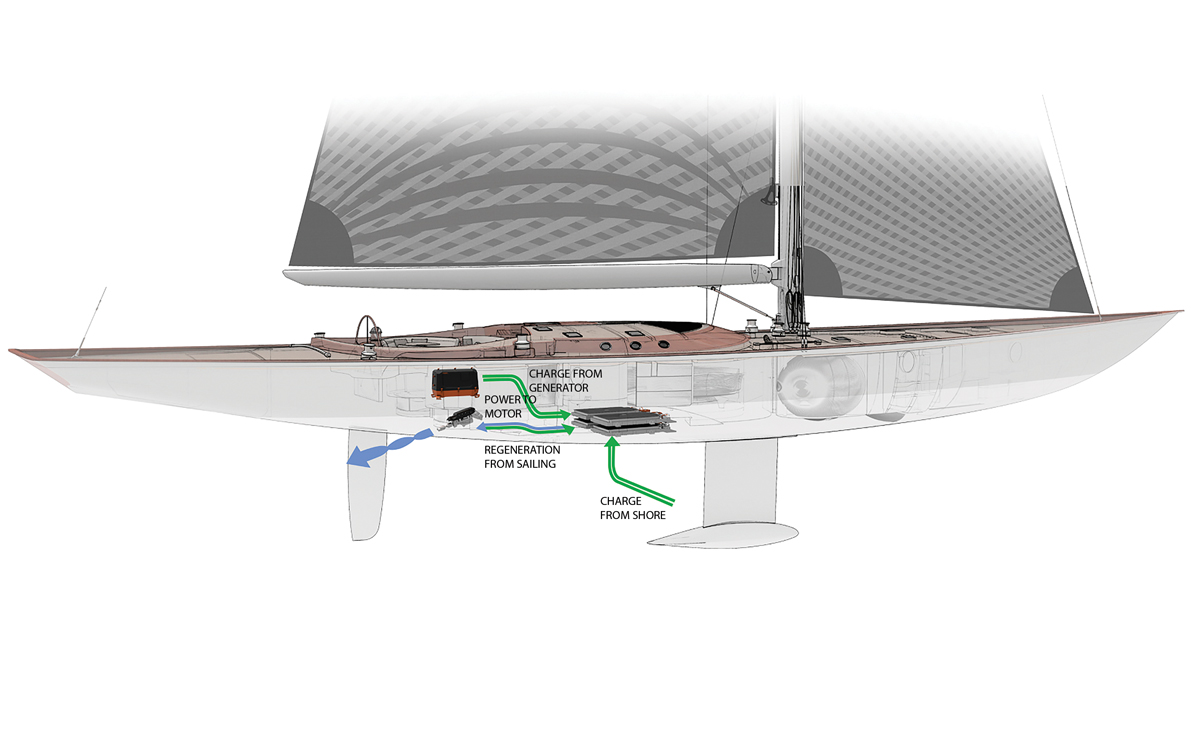
Fully integrated electric drive system will power the new 111ft Spirit Yachts flagship
What does that really mean? Well, in the first instance, it means system integration. If that doesn’t sound revolutionary, then imagine a set-up on board where solar panels, hydrogenerators, batteries, generators and motors all worked seamlessly together to keep the yacht supplied with ample power around the clock. “That’s what people are willing to pay for: plenty of energy with heating or air-con through the night,” says Ballin.
The future of hybrid sailing
In the near future, Torqeedo is planning a new range-extending DC generator specifically for hybrid sailing boats. Its existing unit is built by WhisperPower and provides 25kW, which is too much power for boats using the pod drive system.
The genset will be designed to operate at optimum revolutions, while clever DC to DC conversion decouples the battery voltage from the charging voltage, for much greater efficiency.
With boats, just as with cars, the breakthrough that will make all the difference is around battery capacity. Until range under electric power can match that of diesel, there will be many sceptics. And that isn’t likely to happen for a decade or more, according to Ballin.
“Theoretically, they’ve tested batteries in labs that are ten times more efficient than lithium,” he explains. “And if that comes through, then gasoline is done. But we are trying to combine long-term vision with short-term mindset.”
In the meantime, the prevalent technology is based on lithium-manganese-cobalt, and a process of steady development is making this 5-8% better each year. For example, BMW has just announced its next generation i3 battery, used by Torqeedo’s Deep Blue system, will be able to hold 40kWh of power – an increase of 33% for the same size, weight and nearly the same cost.

Torqeedo Cruise 2.0 FP Pod Drive is suitable for small yachts up to 4 tonnes – a folding prop can also be fitted
The other area of development is around the propeller. Most cruising systems use a folding or feathering prop designed for diesel engines. But Torqeedo’s own research shows that the consistently high torque of an electric motor is best utilised by props with variable pitch.
And yet it is Oceanvolt that has addressed this issue specifically for electric motors with its Servo Prop system, which it claims to be 30% more efficient ahead, 100% better astern and 300% more efficient in regeneration mode.
Oceanvolt says that this prop can pump around 500W into the batteries at just 5 knots – the average pace of a 30ft monohull. At 6 knots that rises to around 800W, and at a very manageable 7 knots for a larger ocean cruiser you get 1.2kW.
“A new technology can rarely compete in price with an established one in its initial growth phase,” says Mustelin. “However, we have passed this and today electric systems are offered at a quite competitive price. When you add to that the fact the electric system is almost service free, the total cost of ownership is turning in favour of electric.”
So, you may not hear them approach, but expect to see more and more electric-powered boats on the water as the revolution continues.
A question of torque
A key part of the viability of electric propulsion rests on the notion that a smaller motor can achieve the same work as a bigger diesel. There are two elements to this. First, a diesel engine is not an efficient converter of chemical energy into thrust, creating a lot of heat and noise in the process. Second, the torque characteristics of electric are much better than diesel.
Mustelin says that Oceanvolt’s 10kW motor “easily outperforms” a 30hp diesel. “Typically, maximum boat speed will be somewhat lower (0.5kt-1.0kt) than with a comparable diesel engine, but at the same time the boat will maintain the speed better in heavy seas and headwind due to higher torque. Manoeuvrability is much better in confined marina spaces.”
That’s because combustion engines only reach peak power (and maximum torque) over a small range of speeds. Torque is a measure of turning power – at the propeller in the case of a boat.
A diesel engine develops optimum torque between 1,800-2,000rpm, while electric motors deliver it from 0 to around 2,000rpm. This allows electric motors to use higher efficiency propellers that are slimmer and more steeply pitched.

Engine-driven: The ‘alternator on steroids’
It has taken years of development and over $10m of funding, but renowned boat systems expert Nigel Calder has helped design an alternator so powerful that it eliminates the need for a generator on board.
Mounted on the engine, on the second alternator position, the Integrel can produce five to ten times more power. Sitting behind the system is at least 10kWh of lead acid batteries (lithium is also an option), and Victron chargers and inverters.
“If you crank the engine it’ll charge the batteries; if you’re running with the engine in neutral, it’ll know it’s in standalone generator mode and switch to that algorithm,” explains Calder. “It will likely be cheaper than a generator installation, and eliminates the issue of the through-hulls, the cooling circuits, the long running hours, the maintenance.”
The system allows you to run all sorts of creature comforts on board that would normally require a generator: from hot water on-demand to coffee makers and freezers. “We honestly believe that this system is going to supplant generators on almost all boats that currently have, or would like to have, a generator,” adds Calder.
With the engine in gear and at low revs, tests show how the Integrel can produce some 2kW of power without increasing fuel consumption or reducing speed – simply utilising the engine’s wasted capacity. This means it will work with the yacht’s existing engine – no need to overspec – and it has already been successfully installed on a new Southerly 480, a Malo 46 and a similar-sized Hallberg-Rassy.

Case study: Dufour 382 Alcyone
Built by Dufour in 2016, Alcyone was immediately retrofitted professionally with Oceanvolt’s SD15 saildrive motor, supplied by a 14kWh lithium battery bank. Owners Michael Melling and Diana Kolpak also specced an 8kWh DC generator for range extension. The fit out cost €30,600 for the motor and battery system, plus an additional €13,744 for the generator, and installation costs were around €8,000.
They charter the boat out near Vancouver, for exploring Desolation Sound and the surrounding area where silent, clean propulsion is a selling point. “Nothing spoils the joy of sailing – or a secluded anchorage – more than the noise and smell of diesel engines,” they explained. “Installing an Oceanvolt system in our new boat has freed us from that. It’s the way of the future.”
Charter manager Merion Martin said the conversion has also been popular with charter customers, adding: “The main advantage of the system is that it consistently uses around 40% less fuel than a standard diesel engine over the course of a week’s charter. But understanding the power management system takes a bit of getting used to, and the many components involved in the system can make troubleshooting a challenge.”
If you enjoyed this….
Yachting World is the foremost international magazine for bluewater cruisers and offshore sailors. Every month we have practical features to help you plan and prepare to realise your sailing dreams. Build your knowledge month by month with a subscription delivered to your door – and at a discount to the cover price. S ee our latest offers now.

Classic look hydrofoiling electric boat debuts in Moscow
A team in Russia has developed this sleek hydrofoiling electric boat with a retro-tech classic runabout look, both inside and out.
The boat is called the Molniya – Russian for ‘lightning’ – and uses fixed surface piercing (SP) foils rather than the retractable inverted-T fully submerged (FS) type on boats like the Candela 7 .
The Molniya prototype was built by Artem Markov and a small team he assembled in Moscow. Markov is a graduate of the Moscow Automobile and Road Construction Institute, where he was part of their Formula MADI electric car racing team that competed against other universities from around the world.
Hydrofoiling electric boat idea started in 2016
Like many other electric boat developers he is also a long time sailor and says “ I have never been able to understand what is the beauty of going on motor boats with a lot of vibration and noise. So, I decided I wanted to find a way to transfer the silence and comfort of a sailing yacht to a boat. The idea came to me in 2016, and from that moment I started working on the project .”
He is a big fan of the work that the team at Candela has been doing, and is well versed in their reasonings of why hydrofoiling is the way to reduce drag and increase efficiency and comfort. So he knew foiling was the way to go and began to design his dream boat.

It is one thing to know exactly what one wants, but b udget realities quite often make inventors adapt. So he found a classic fibreglass-and-aluminum hull and went to work redesigning and converting it. The team had to strengthen and reinforce the hull to handle the stresses from the front foils. At the stern of the boat they designed protruding half-wings that would help lift the boat onto those front SP foils as it accelerated.
80kW motor mounted to stern drive unit

That gives the 8.9 m • 29 ft boat a cruising speed of about 20 kts • 37 km/h and maximum speed of 36 kts • 66km/h. As for range, the Molniya can go for 135 Nautical miles at 5 kts, 17 Nm at 25 kts and 20 Nm at the top speed.
For the battery, they have taken stock lithium-ion cells and developed the modules themselves. The size is 160kW and there are some creative and useful ideas incorporated into the charging and battery management systems. One is the ability to connect a warning system to a GPS route so if you are driving at a speed that is taking yo u beyond range of getting back to shore the motor will automatically slow down. When you do get back, a full 0-100% charge takes 3.5 hours and you can check status through SMS.

One of the intriguing things about the Molniya is that all of the electric boat technology has been incorporated into a striking overall retro look. The dashboard looks like it might have been taken from a 1950s luxury car catalogue, but of course the actual meters are all digital. The interior of the entire boat harkens back to an earlier day, appearing ready to whisk 6 passengers off to a swing era supper club.
From prototype to production
Having built and tested the prototype from an existing hull, the goal of Markov and the team is to move to production mode and use the materials he always envisioned in his dream boat. While the aluminum and fibreglass of the original have been useful for testing, speed and range will benefit from materials like much lighter carbon-kevlar.

The adapted stern drive was useful for proving the hydrofoiling electric boat concept, but all of the designers and engineers are keen to see the improved efficiency they will get from a motor, drive and battery system they have designed from scratch for the Molniya. As for the foils themselves, the production model will use lighter, thinner composites instead of stainless steel.
Obviously the spring and summer of 2020 has not provided the best opportunities to introduce the prototype at boat shows and stir up interest with consumers, the trade or investors. It seems, though that the Molniya is the type of boat that should appeal to peopl looking for the same thing Artem wanted for himself: a classic motor boat experience but one that is quiet, odour free…and smooth sailing.
You can find out more on the Molniya website, lightning-foil.com .
Exciting things are happening every day in electric boats and boating. Subscribe to the Plugboats newsletter so you don’t miss a thing!
Email address:
Follow Plugboats on »» facebook , »» twitter »» Instagram »» Linkedin
- New French electric rim motor now taking pre-orders
- New Niagara Falls electric ferries have set sail!
Leave a comment Cancel reply

E1 electric powerboat championships set to take off January 2024 in Saudi Arabia

Lake Como electric boat day: 9 show their style at iconic Villa d’Este resort

Get all the latest electric boats and boating news delivered to your mailbox!
Sign up here for the Plugboats newsletter.
IT’S FREE!
Terms and Conditions - Privacy Policy

- Buy A Yacht
- Super Yachts for Sale
- Motor Yachts for Sale
- Trawlers for Sale
- Sportfisherman for Sale
- Sailboats for Sale
- Trailerable Boats for Sale
- Search by Yacht Builder
- CSA Yacht Map- Distance/Zip/Go!
- Commercial Marine Vessels for Sale
- Great Loop Boats for Sale
- Great Loop FAQ
- Albemarle Loop
- General Boat Articles
- Technical Boat Articles
- Build a Yacht
- Charter A Yacht
- Yacht and Boat Donations
- Yacht Buyer Brokerage Service
- Partnerships- Curtis Stokes & Associates
- About Curtis Stokes & Assoc.
- Yacht Photo Gallery
- Yacht Links
- Yacht Broker Employment
- Sold Motor Yachts
- Sold Trawlers
- Latest Yacht Listings

2019 | 42' Lagoon Sailboat for Sale
2019 lagoon, 42' (12.80m) -, key features: #generator #aircon #code0 #foldingprop #fullyequipped new arrival "this really is a true bluewater-friendly boat" most sought after model in the factory's history, lagoon 42 has all of the key features of today's modern cruising cat a comfortable helm station that allows one person to work the lines while another one helms, the cockpit is a traditionally comfortable and large sliding door between the saloon and cockpit that create one large loft kind of space once open. arguably the most comfortable boat in class and this particular unit has all the bells and whistles one could order at the factory. helm station is wide enough to accommodate a couple, everything is so intuitive that she is great for solo handling as well. to simplify it's lagoon's evolution of design that's going to be appreciated even when the new models hit the market. short list of additional equipment: upgraded 57hp yanmar engines, 11kva onan generator (cocoon), and reverse cycle airconditioning (48,000 btu) throughout the saloon and all of the cabins, code 0 zl evolution sails coupled with incidence main and self-tacking jib, teak deck in the cockpit and transoms, b&g package of electronics and autopilot, 3 blade folding propellers, solar panels... 2 cockpit harken 46.2 electric winches are paired with another 2 manual units of the same size in the cockpit. it's a cruiser's dream she's comfortable, well maintained by one crew throughout her lifetime and one of the most sought after what can be a fantastic blue water cruising boat she has it all. it'll be hard to find better equipped 42 in this price range. she will be delivered turn-key ready at the last days of the season 2024. contact us for more info or if you want us to reserve her right now here is her list of specs: general information year of build: 2019 hull number: 370 flag: french interior cabins: 4 (2 in port, 2 in starboard hull) berths: 12 (2 per cabin, 1 in each bow compartment, 2 in salon) air conditioning: reverse cycle cruisair, 48,000 btu, controls in each cabin and salon fridge: 1 in galley, 1 in cockpit freezer: 100 l, top opening heads: 4 toilets: 4, electric fans: 6 (2 in salon, 4 in cabins) lighting: indirect led in cabins and salon deck bimini: composite with windscreen and full enclosure at helm station cockpit floor: teak, including transoms fridge: 150 l in cockpit swim ladder: 2 cockpit shower: 2, hot and cold sun-lounging: 2 cushions with lifting backrest on roof sails and rigging main sail: 55 m full batten (dacron) self-tacking jib: 35 m (dacron) code 0: 87 m (polyester) winches, electric: 2 harken 46 at helm station winches, manual: 2 harken 46 in cockpit electronics chartplotter: b&g zeus 3 12 with europe card at helm station multi-purpose display: 2 b&g triton 2 at helm station autopilot: b&g with triton 2 pilot keypad at helm station vhf: b&g v60 at nav station vhf handset: b&g h60 at helm station audio: fusion ms-ra70n with 2 speakers in salon and 2 waterproof speakers in cockpit tv antenna: 1 electrical circuit generator: cummins onan genset 11kva 220v / 50hz with sound enclosure solar panels: 3x 120 w on roof usb sockets: 2 in each cabin engines and propellers engines: 2 yanmar 4jh57 (57 hp each) propellers: 2 3-blade, folding fuel capacity: 600 l (2x 300 l) dimensions and build length overall: 12.80 m beam overall: 7.70 m draft: 1.25 m air draft: 20.65 m displacement, light (eec): 12.1 t architects: vplp interior design: nauta design ec certification: a: 12, b: 14, c: 20, d: 30.
- Fiberglass Hull
$ 439,949 USD
€ 398,000 euros $ 0 cad.
- EMAIL BROKER
Description
Curtis Stokes & Associates is pleased to assist you in the purchase of this vessel. This boat is centrally listed by The Multihull Company. It is offered as a convenience by this broker/dealer to its clients and is not intended to convey direct representation of a particular vessel
LOA: 42' 0" (12.80 Meters)
Type: Sail - Used
Beam: 25' 3"
Bridge Clearance: 67' 9"
Draft Max: 4' 0"
Draft Min: ' "
Maximum Speed: Knots
Cruise Speed: 0 Knots
Fuel Type: Diesel
Hull Material: Fiberglass
Fuel Tank: 79 Gallons ( Liters)
Fresh Water: Gallons ( Liters)
Holding Tank: 0 Gallons ( Liters)
Full Details
Listing MLS by Yachtr.com
- Engine Make: Yanmar
- Engine Model: 4JH57
- Engine Year:
- Engine Type: Inboard
- Drive Type:
- Power HP: 57.00
- Hours: 0.00
Click any image to view enlarged version. Swipe enlarged image to see additional enlarged images.

Contact Broker
For more information about this yacht please contact Curtis Stokes and Associates, Inc. We look forward to working with you!
Want more information about this yacht?
Curtis stokes & associates.
Suite168 --> Fort Lauderdale, FL Phone: 1-954-684-0218 Toll Free: 1-855-266-5676 Fax: 1-954-807-1445 Email: [email protected] Website: https://www.curtisstokes.net
Curtis Stokes and Associates, Inc. is a yacht brokerage firm consisting of nine offices and fifty brokers throughout the United States offering worldwide marketing, buyer brokerage services and yacht charters. We also specialize in marketing and selling Great Loop capable yachts and boats.
- Sailing Yachts for Sale
- Albin Yachts for Sale
- American Tugs for Sale
- Bayliner Boats for Sale
- Beneteau Yachts for Sale
- Bristol Yachts for Sale
- Californian Yachts for Sale
- Camano Trawlers for Sale
- Catalina Sailboats for Sale
- Cruisers Yachts for Sale
- DeFever Trawlers For Sale
- Downeast Cruisers for Sale
- EndeavourCat Trawlers for Sale
- Gulfstar Sailing Yachts
- Grand Banks Trawlers for Sale
- Great Harbour Trawlers for Sale
- Hatteras Yachts for Sale
- Hatteras Long Range Cruiser Trawlers for Sale
- Heritage East Trawlers for Sale
- Meridian Yachts for Sale
- Hunter Marine Sailboats for Sale
- Jefferson Yachts for Sale
- Kadey Krogen Yachts for Sale
- Mainship Trawlers for Sale
- Marine Trader Trawlers for Sale
- Monk Trawlers for Sale
- Nordic Tugs for Sale
- Ocean Alexander Yachts for Sale
- Pearson Yachts for Sale
- Sea Ray Boats for Sale
- Selene Trawlers for Sale
- Silverton Yachts for Sale
- Trinity Yachts for Sale
- Viking Yachts for Sale
- Motor Yachts for Sale Archive
- Trawlers for Sale Archive
- Yachts by Builder
- Search Yachts for Sale
- Sell A Yacht
- Build A Yacht
- About Curtis Stokes & Associates
- Frequently Asked Questions
- Great Loop Cruisers
- Yacht Resources
© 2024 Curtis Stokes & Associates, Inc. | All rights reserved.


- DREDGE/CIVILS
- AUSMARINE (OCEANIA)
- MIDDLE EAST/NORTH AFRICA
- LATIN AMERICA

VESSEL REVIEW | Sinichka – Electric commuter boats designed for Russia’s Moskva River
A series of three new electric monohull commuter ferries have already begun operational sailings on the Moskva River in the Russian capital Moscow.
Built by Russian shipyard Emperium, sister vessels Sinichka , Filka , and Presnya – all named after rivers in Moscow – are being operated by the Moscow Department of Transport and Road Infrastructure Development (Moscow Deptrans). They are the first units of a planned fleet of 20 vessels that will serve the capital city and other nearby communities. The new ferry system will be the water transport system to be operated on the Moskva River in 16 years.
Each vessel has a welded aluminium hull, an LOA of 21 metres, a beam of 6.2 metres, a draught of only 1.4 metres, a displacement of 40 tonnes, and capacity for 80 passengers plus two crewmembers. Seating is available for 42 passengers on each ferry, and the main cabins are also fitted with USB charging ports, wifi connectivity, tables, toilets, and space for bicycles and scooters. The cabin layout can be rearranged to allow the operator to adjust the distances between the seats and to install armrests of varying widths.

An open upper deck is also accessible to passengers and is the only area on each ferry where smoking is allowed.
The ferries are all of modular construction with each ferry's wheelhouse, main cabin, and other structural elements being built as complete, separate components. This enables the ferries to be easily dismantled for transport to anywhere in Russia by rail and then quickly re-assembled within seven days.
The ferries are also ice-capable. Recently completed operational trials on the Moskva showed that the vessels can also easily navigate under mild winter conditions with broken surface ice, though year-round operations are planned for the entire fleet.
The ferries are each fitted with 500kWh lithium iron phosphate battery packs that supply power to two 134kW motors. This configuration can deliver a maximum speed of 11.8 knots, a cruising speed of just under 10 knots, and a range of 150 kilometres.
Emperium said the transfer of rotation of electric motors to the propeller is carried out by direct drive. As a propulsion installation, a pulling rotary propeller-steering column with double screws is used. The installation of double pulling screws, with similar power, allows an operator to increase the efficiency of the propulsion system to deliver a slightly higher speed or to reduce energy consumption. This arrangement also provides the ferries with enhanced manoeuvrability necessary for navigating in close quarters.
The batteries themselves have projected service lives of 10 to 12 years and are fitted with safety features such as built-in fire extinguishers and gas vents. Quick-disconnect features allow the batteries to be easily removed for replacement or maintenance.
Some of our readers have expressed disquiet at our publication of reviews and articles describing new vessels from Russia. We at Baird Maritime can understand and sympathise with those views. However, despite the behaviour of the country's leaders, we believe that the maritime world needs to learn of the latest developments in vessel design and construction there.
Click here to read other news stories, features, opinion articles, and vessel reviews as part of this month's Passenger Vessel Week.
| Type of vessel: | Commuter ferries |
| Flag: | Russia |
| Operator: | Moscow Department of Transport and Road Infrastructure Development, Russia |
| Builder: | Emperium, Russia |
| Hull construction material: | Aluminium |
| Length overall: | 21 metres |
| Beam: | 6.2 metres |
| Draught: | 1.4 metres |
| Propulsion: | 2 x 134 kW |
| Maximum speed: | 11.8 knots |
| Cruising speed: | 10 knots |
| Range: | 150 kilometres |
| Batteries: | Lithium iron phosphate, 500 kWh |
| Accommodation: | Cabin; toilets; bicycle/scooter area |
| Crew: | 2 |
| Passengers: | 80 |
| Operational area: | Moskva River, Russia |

Subscribe to The Connexion
See prices & plans
HELP GUIDES
Income Tax in France
Healthcare in France
Inheritance Law and Wills in France
Visas and residency cards for France
France boosts electric boat conversion budget
River authority doubles funding to electrify tourist boats, aiming for a greener future in the industry.

Storm and heatwave warnings for France: weekend weather outlook August 31 - September 1

Seven English words that you may not realise are French

Eurotunnel installs 224 kiosks in preparation for French border changes
The budget to convert tourist boats to electric propulsion is to double, the body in charge of France’s rivers and canals has promised.
Inland boat hire is one of the quiet giants of French tourism, generating an estimated €1.4billion of revenue for operators and villages along their routes.
By far the majority still use diesel and, with a government target of 2050 for the industry to stop emitting carbon dioxide, Voies navigables de France (VNF) is also pushing for total conversion to bio-diesel.
“There is no miracle solution but we are following lots of paths,” said the deputy managing director in charge of development, Aurélie Millot.
Read more: Cross-Channel sailing boat set to ferry passengers to France
€60million budget
The organisation, which is owned and funded by the state, budgeted €60million over five years (2023-2027) to help boat owners buy new electric models or retrofit existing craft.
Its earlier five-year budget was €30 million, and the body was criticised for the complexity of its loan application process.
Along with grants for electric boats, VNF is also leading a drive, in partnership with electricity firms, to install charging points, both on tourist waterways and commercial canals.
It would mean that boats tied up overnight or loading/unloading goods would not have to keep their engines running to supply electricity. Noise and smoke from this often leads to complaints from residents living near the waterways.
The new diesel which all boats were meant to use from January this year is called HVO ( huile végétale hydrotraitée ). It can be used without any modification of existing engines and Ms Millot said it cuts CO 2 emissions by 90%.
Read more: Our life aboard a barge near Bordeaux
Floating electric hotel
One of the pioneers of electric cruising in France, Dominique Renouf of Bateaux pour la Planète, built her first electric-powered floating hotel 17 years ago, and now builds and rents small battery-powered boats on the Garonne canal for week-long cruises.
“At last things are starting to move, but there is a long way to go,” she said. “We finally got a grant of €195,000 to help us build 10 boats this year, after being refused twice before.”
The boats she builds, called Phoebes, have aluminium catamaran hulls and can accommodate a family of four. They cost €160,000 new, which is competitive with similar diesel models, but she says attempts to interest other boat rental companies have failed.
“We are developing a concept where people can set up businesses as a franchise, with structured financing because commercial banks are not interested,” she said.
“That way when people see more boats on the river, they will see that electric boats are feasible.”
She added that VNF had been “hot and cold” over electric boats.
“They finally gave us the grant, and cut the annual tax for tourists boats by half for zero-emission boats, which means we pay €600 this year instead of €1,200.
“But at the same time they charge us €300 a week to use charging points, when a full charge uses just €5 worth of electricity. I asked why, because it obviously discourages people from turning electric, and they simply said: ‘We have to eat!’”
Related articles

Workers find 650 protected species bats in Dordogne church
The dark church eaves have become a nursery for the rare species

Dogs banned from French city water spaces after pet dies
The municipality of Lille issued the order after a dog was found to have died from blue-green algae poisoning

Bordeaux, Marseille, Nice, Brittany; Calls for ban on cruise ships grow in France
Ecologists say the massive ships are an ‘absurdity’ and argue their economic windfalls are overstated

Do you know which marriage regime applies to you in France?
A look at how marriage laws in France can impact property ownership and inheritance
I moved to France and became a mountain guide
What inspired one British woman to settle in the Alps change careers
Crafting light: The art of stained glass in France
French supermarket trials tills with cameras to detect thefts.

Online tool to report burglaries to police will expand across France
The system can be used to report other incidents too, including vandalism

Crowds flock to see ‘magic horse’ from Paris 2024 Opening Ceremony
35,000 tickets sold out within hours as fans seek to hold on to Olympic joy

Government warning about scammers pretending to be French authorities
Fraudulent emails and texts are rife during tax season

New jellyfish warning for beaches in the south of France
Swimmers are advised to take care after sightings near Marseille and Cassis

French politician Ségolène Royal announces she is ‘available’ to be prime minister
She said her three priorities would be improving justice, opportunities for young people, and balancing the books

Michael Douglas, Natalie Portman: stars back in France for Deauville Film Festival
The 50th edition of the event in Normandy will show 100 films and welcome many of Hollywood’s biggest stars

Historic racing yacht seeks new captain in France
Built in 1890, the restored English cutter is now on sale in Brittany for €35,000
Drunk plane passengers: Ryanair blames airports, French law fines heavily
Households in france without a linky meter to suffer additional costs, fireball: impressive videos captured over france of satellite disintegration.

As well as déjà vu and hors d’oeuvre, you may be surprised to learn how many words crossed the Channel

Can home owners ask for French property tax payment deferral?
Property tax notices will arrive shortly if not already

Capital gains tax – what expats in France need to know
Rob Kay, a senior partner at Blevins Franks financial advice group, reviews this complex area of taxation

Dozens of alerts have been raised
Is it aways possible to correct an error in French tax income declaration?
How you can correct tax declaration errors without penalties
What is the difference between a 'lettre suivie' and 'recommandée' in France?
'how i moved from the us to france alone aged 70', is tourist tax collected when staying in a french airbnb.

Why did a French vet charge a €200 ‘cremation fee’?
Pets who die must also be have information on ‘pet database’ updated

What are French rules for children’s car seats?
There are strict regulations on booster seat manufacturing

Can French Télépéage badges be used across multiple vehicles?
Toll badges are a popular means of passing through tolls quicker

What changes in schools for the 2024 autumn rentrée in France
Smartphone ban, more assessments, and new skills-based groups among major changes

'Get your cat treated for fleas before it goes wandering in France'
Columnist Samantha David explains how her pet was picked up by an association only to return riddled with the pests

Retiring to France: how to avoid visa pitfalls
Healthcare status and economic status must be correctly declared. We also look at what to do if your application is refused

Storms to batter south-west France and Paris on Thursday evening
Weather alerts have been raised in more than 50 departments for August 30 by Météo France

How many Americans live in France - and how many Britons?
US citizens are the biggest group of English-speakers applying for residency cards

IMAGES
VIDEO
COMMENTS
The ESC40 is a 40-ft catamaran designed to be two to three times faster than the typical cruising cat - using carbon fibre to reduce weight and provide increased hull strength. The twin helm stations are covered by a solar cell-covered roof and come with a 59m2 main sail in addition to three headsails: Jib 26 m ², FRO 65 m ² and Asail 121 m ².
With maximized solar and wind power and minimized energy consumption… the ZEN50 can sail continuously at speeds varying between 6 and 10 knots. Thorough simulations in various sea states and weather system have consistently shown the ZEN50 will be able to achieve performance catamaran speeds continuously without using a genset.
The HH44 was conceived from the ground up to work with a parallel electric/diesel hybrid, an industry leading solar array on the cabin top and hydro-regeneration while sailing. Our EcoDrive provides all the benefits of an electric boat: silent fume free motoring up to 7kts, instant torque for maneuvering, and hydro-regeneration while sailing ...
ALVA Yachts, the German builder of luxury electric solar catamarans and sail boats, has announced it is currently building the world's first fuelless 90ft superyacht catamaran with wings, the OCEAN ECO 90 H2. The first superyacht catamaran to run without fossil fuels and producing zero emission, the OCEAN ECO 90 H2 is designed with luxury ...
Imported into the US market by Green Marine, the Swedish-built Arcona 435Z is a rarity: an all-electric cruising sailboat. Jon Whittle. This past October, I saw one of the most interesting exhibits in more than 500 new cruising sailboats I've reviewed over two decades. It was the Arcona 435Z, built in Sweden and introduced by Graham Balch of Green Yachts in San Francisco.
2024 Custom Eco yacht catamaran 115'. Request price. Pajot Yachts Selection | St Tropez , 83 - Var. Request Info. <. 1. 2. Find Sail Catamaran Electric boats for sale in your area & across the world on YachtWorld. Offering the best selection of boats to choose from.
Together, the two propellers can generate more than 15 kWh while sailing around 7 knots. This energy is then used to power the engines and onboard appliances. "The Sunreef 80 Eco is all about ...
The Ultimate Practical Electric Power Catamaran. Discover the Smart Cat E280 - the pinnacle of innovation in electric power catamarans. Building on the success of the S280 sailing catamaran, the E280 offers unparalleled long-range capability, fuel efficiency, silent cruising, and eco-friendly performance.
Discover the first all-electric HopYacht 30 sailing catamaran, a revolutionary and eco-friendly design that offers a silent and comfortable cruising experience. Learn more about its features, performance and availability on Sail World Cruising, the leading source of yacht cruising news from around the world.
These massive batteries are replenished by solar panels, wind turbines, hydrogenators, or a combination of all, allowing electric catamarans to ply oceans with an extended range. ... Sunreef Yachts Eco is the world's leading designer and manufacturer of electric catamarans, including both sailing and power multihulls. The shipyard is largely ...
The Maverick 440 Hybrid is an electric motor sailing catamaran. The. electric motors are powered by lithium-ion phosphate. batteries. The batteries are charged through a number of sources, namely; solar power, wind generators (optional), hydro-regeneration while sailing, shore power, and diesel generator (s).
Our first model, the Silent 64, was launched to the market in 2016, several years before any other shipyard considered the possibility of going electric. Our founders began to research alternative energy sources to power yachts during the mid 1990s. Today, the technology of our in-house developed solar-electric drivetrain has been perfected and ...
Come on board the Sunreef 80 Eco for an exclusive visit of the shipyard's latest solar-electric catamaran. Combining state of the art sustainable technology ...
Far East Boats, one of the biggest sailboat builders in China, today announced the launch of their first all-electric catamaran, the FarEast 42C, powered by two 20kW ePropulsion motors. The boat was unveiled at this year's China (Shanghai) International Boat Show. Far East Boats builds every type of sailing boat in its Jiangsu production ...
The SoelCat 12 can be delivered as a demountable solar electric boat, which fits into two 40ft high cube containers. Such compact dimensions enable ease transport of the catamaran at affordable rates to destinations all over the world. Neither lamination processes or specialized tools are required for the SoelCat 12's quick assembly on location.
Rossinavi has delivered its "most innovative project" to date, the 42.8-metre hybrid-electric catamaran named Seawolf X.She has departed the shipyard's facilities in Viareggio, Italy and is now anchored near the Greek island of Tinos according to BOATPro.. Exterior design is by Fulvio De Simoni Yacht Design, marking the first project presented by the pair since the 49.1-metre Aurora in 2017.
A viable and effective solution based on the Aura 51 production series, the Smart Electric system, designed by Fountaine Pajot, is designed to be installed on every boat in its catamaran sailboat range. By 2025, 50% of Fountaine Pajot catamarans will be fully electric and 100% will be fitted with solar panels.By 2030, the Group aims to make 100% of its fleet electric and to phase out diesel ...
The boat's power generation comes from hydro, solar and wind. Designed and built in partnership with EODev, a specialist in industrial solutions using hydrogen, the Fountaine Pajot 59 Aurora is the world's first production cruising catamaran with 100 percent electric propulsion that uses hydrogen as an energy source.
Lagoon 380. The long-time best-seller from the world leader in catamarans, with more than 1,000 produced over almost 20 years from 1999. With its characteristic vertical windows, the 380 and its ...
A 50ft Privilege 5 catamaran and a carbon fibre Gunboat 60 have both been retrofitted with Torqeedo kit, while Oceanvolt appears on a Swan 57 and an all-carbon Agile 42.
This is the beginning of a very exciting journey! Join Our Crew! For exclusive content, behind the scenes & Q&A's: http://bit.ly/patreon-wynn https://www....
A team in Russia has developed this sleek hydrofoiling electric boat with a retro-tech classic runabout look, both inside and out. The boat is called the Molniya - Russian for 'lightning' - and uses fixed surface piercing (SP) foils rather than the retractable inverted-T fully submerged (FS) type on boats like the Candela 7.. The Molniya prototype was built by Artem Markov and a small ...
KEY FEATURES: #Generator #Aircon #Code0 #foldingprop #fullyequipped NEW ARRIVAL!!! "This really is a true bluewater-friendly boat" Most sought after model in the factory's history, Lagoon 42 has all of the key features of today's modern cruising cat a comfortable helm station that allows one person to work the lines while another one helms, the cockpit is a traditionally comfortable and large ...
20 Mar 2023, 6:24 am. A series of three new electric monohull commuter ferries have already begun operational sailings on the Moskva River in the Russian capital Moscow. Built by Russian shipyard Emperium, sister vessels Sinichka, Filka, and Presnya - all named after rivers in Moscow - are being operated by the Moscow Department of ...
Aft Cockpit Sailboats Center Cockpit Sailboats Sailing Catamarans Classic Sailing Yachts Motorsailers . Yacht selling brokers. All / 509. Add a listing ... In addition, there are electric and diesel boilers that work as backup and are switched on when the first three systems do not work for some reason. Five systems - it is even too much for a ...
The boats she builds, called Phoebes, have aluminium catamaran hulls and can accommodate a family of four. They cost €160,000 new, which is competitive with similar diesel models, but she says attempts to interest other boat rental companies have failed. ... France boosts electric boat conversion budget. Online tool to report burglaries to ...
The Zeabuz ferry reduces operation costs which also makes it economical - and on that note, riding this ferry will be free in Trondheim which will encourage more people to adopt emission-free commutes. The electric ferry will operate along the canal that connects the port and the city center of Trondheim. READ MORE NOW!